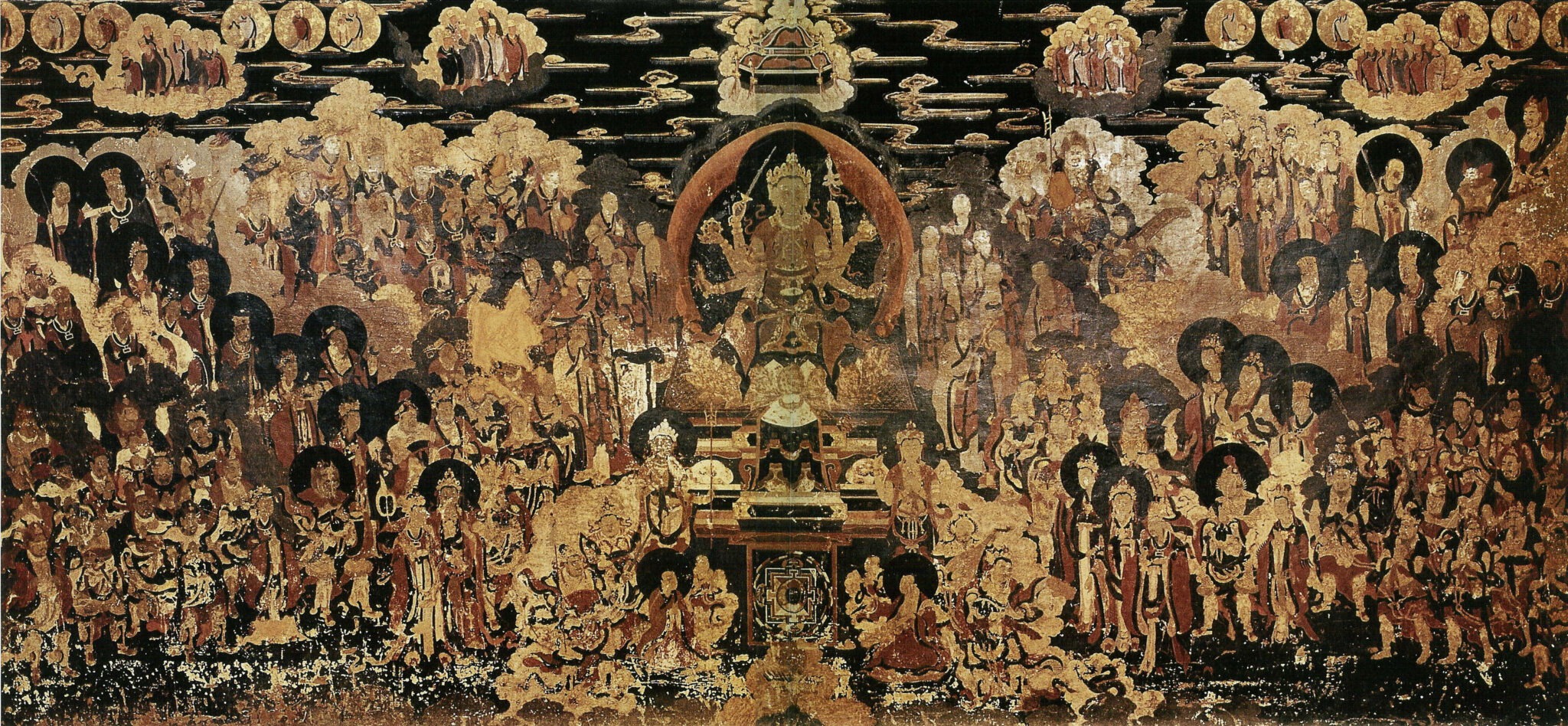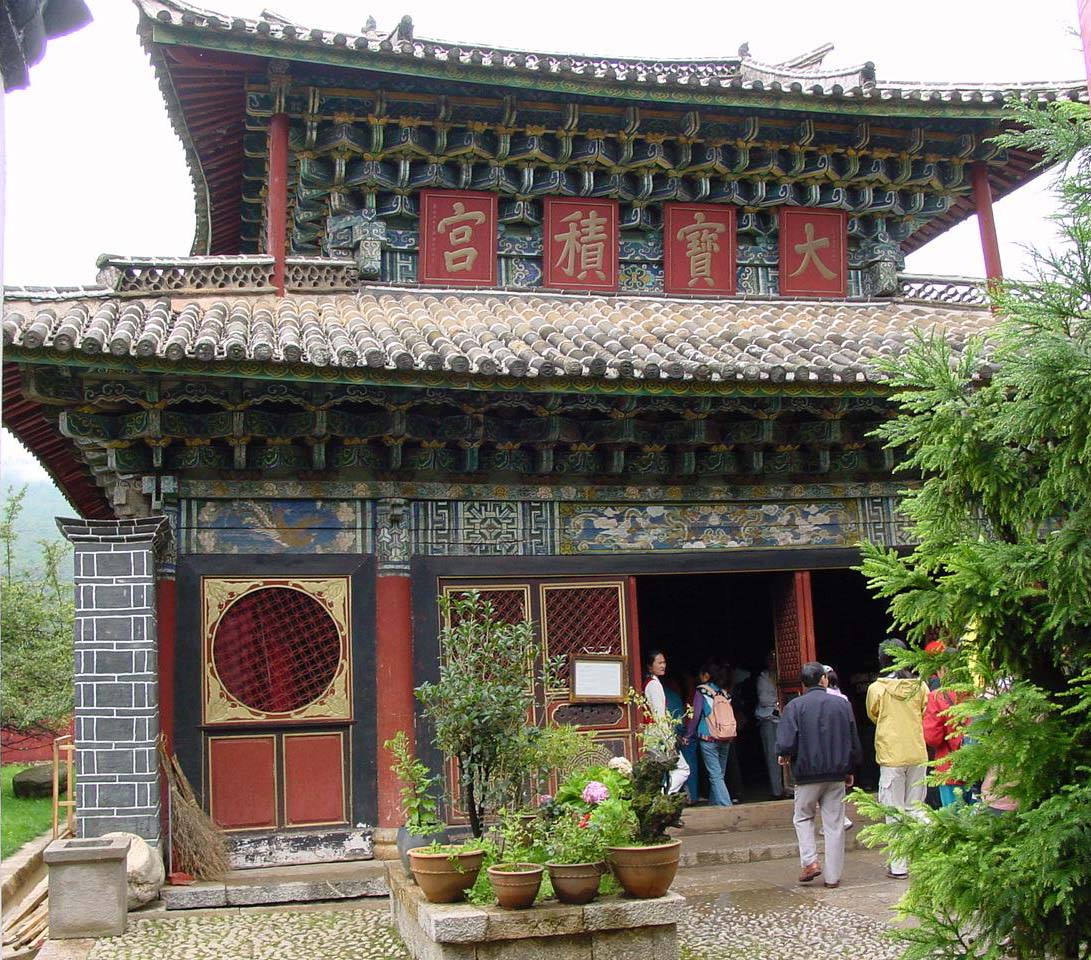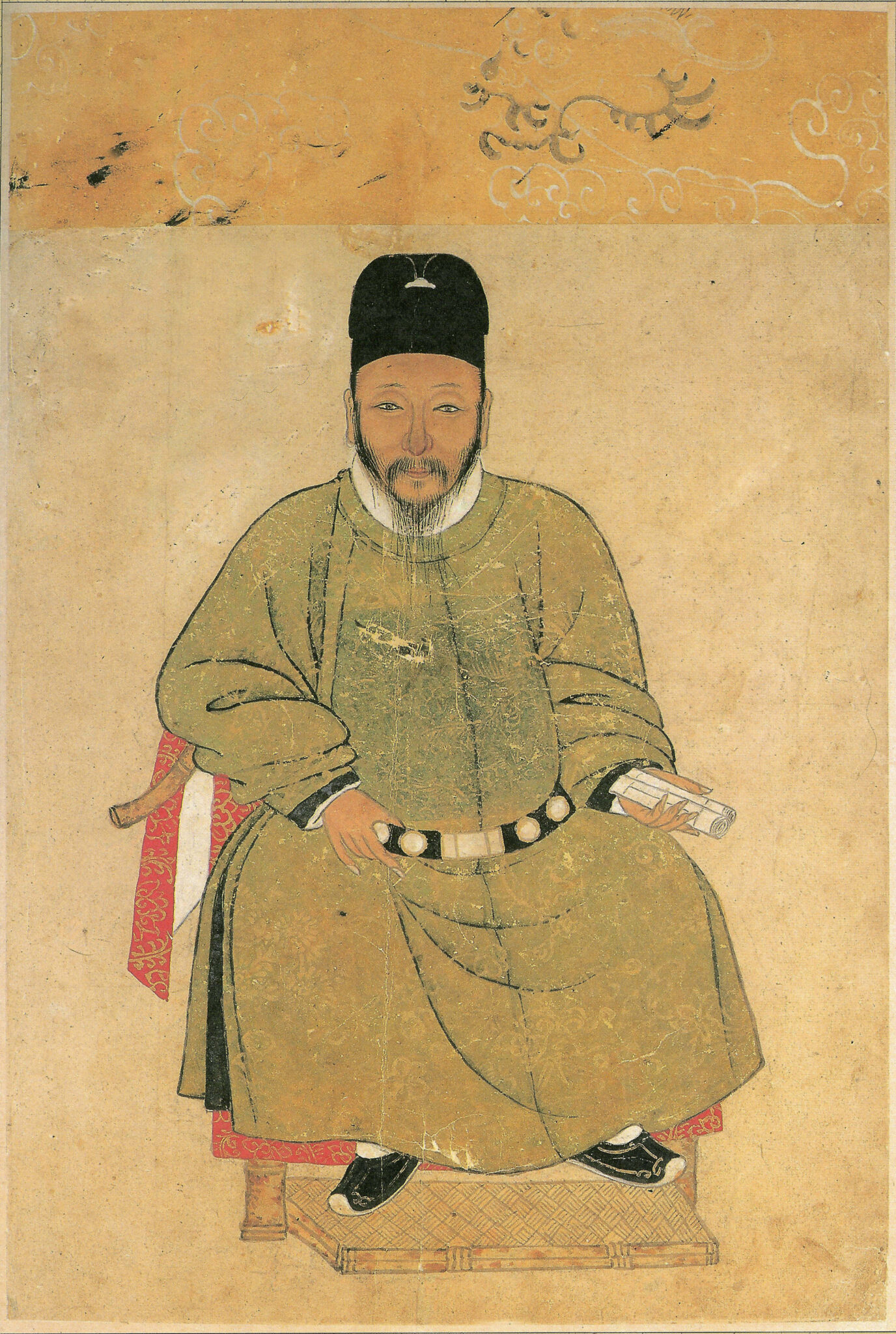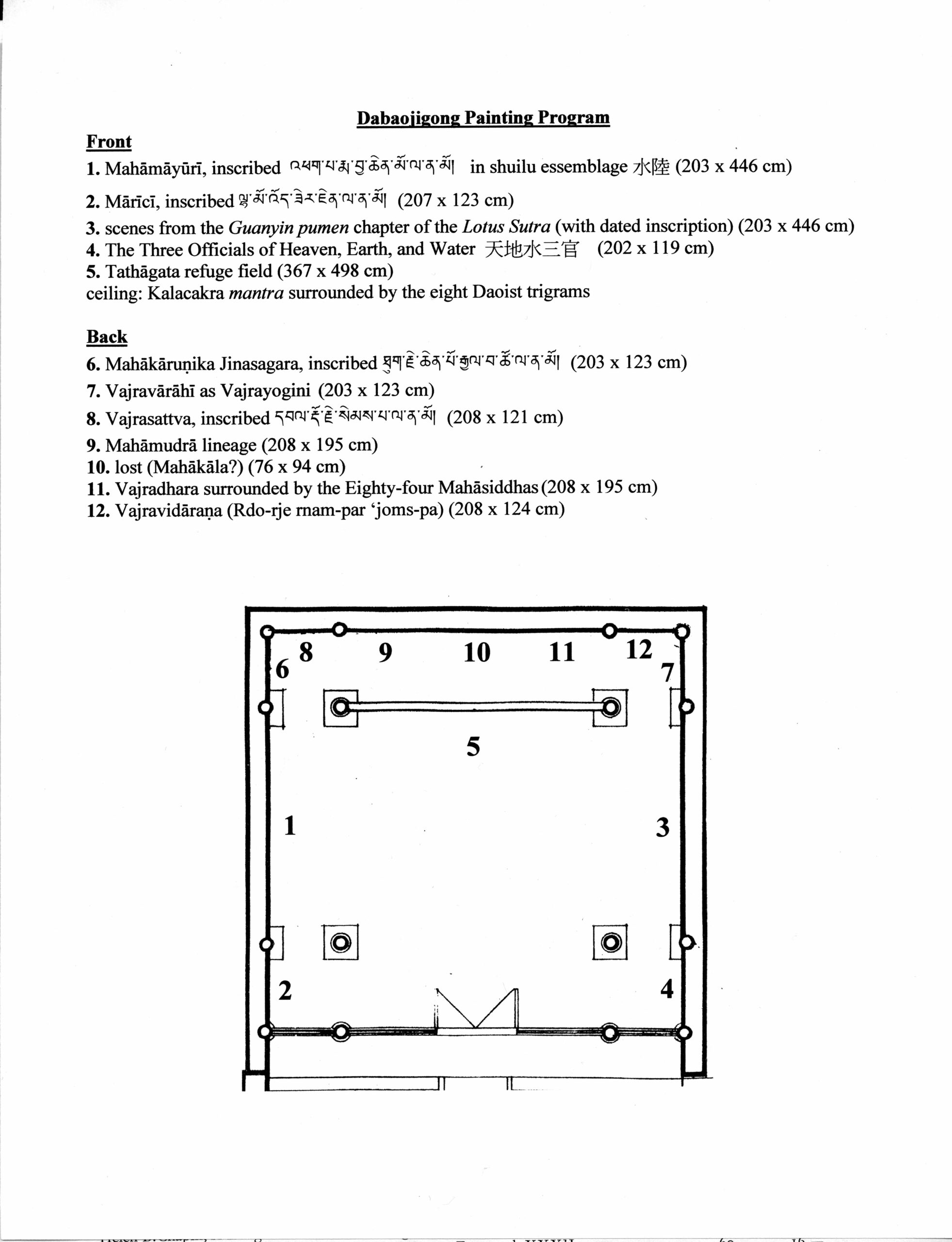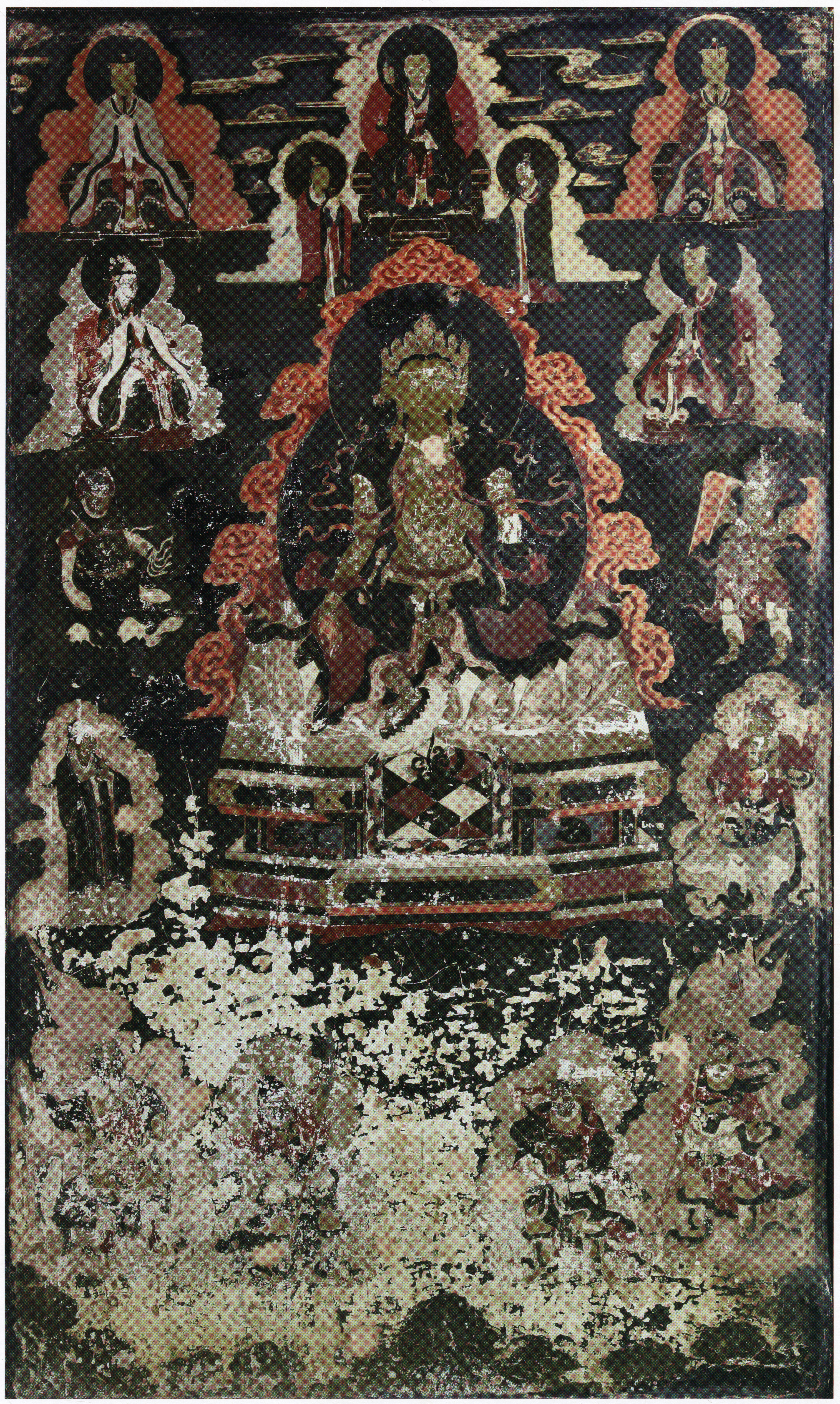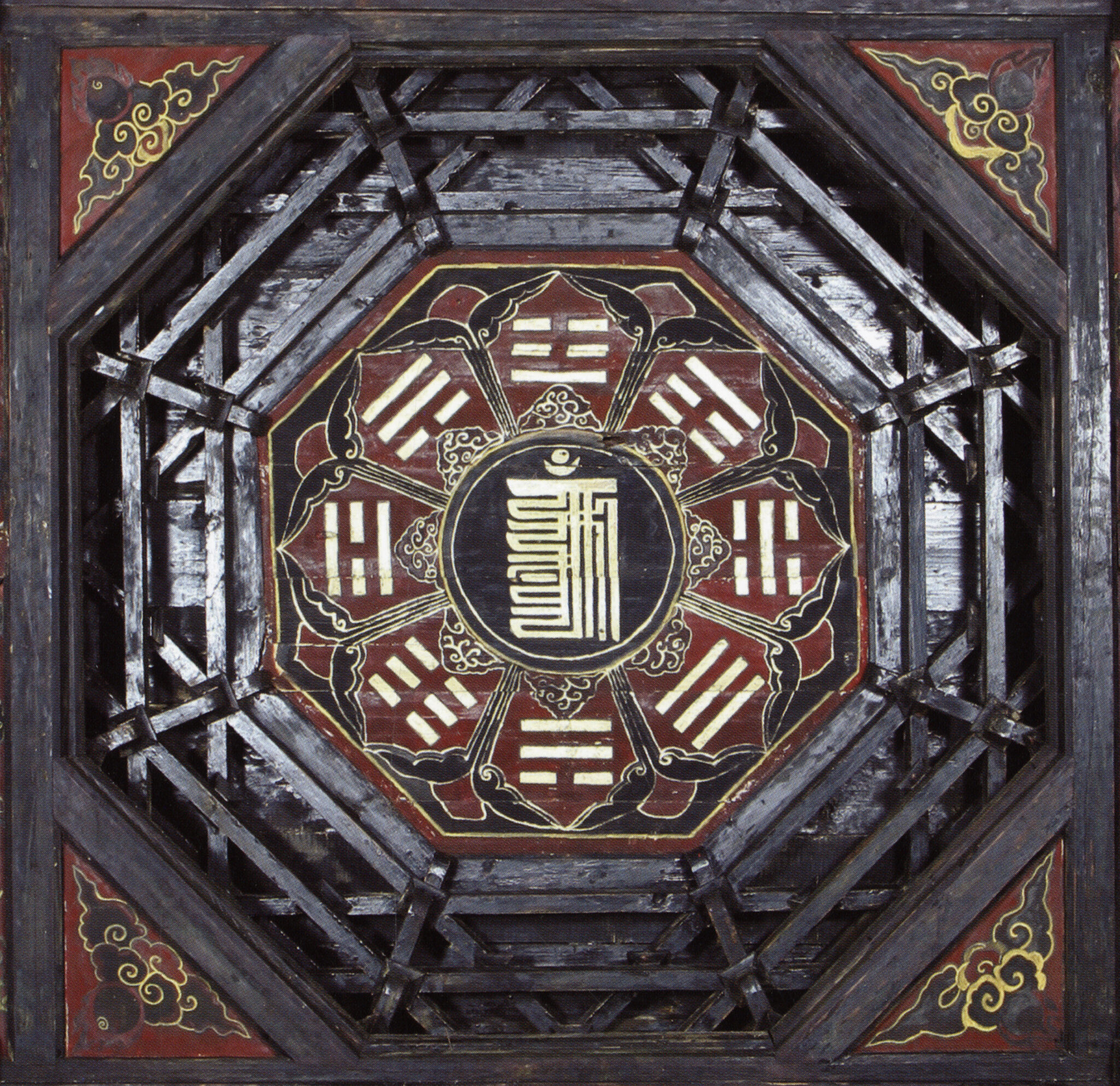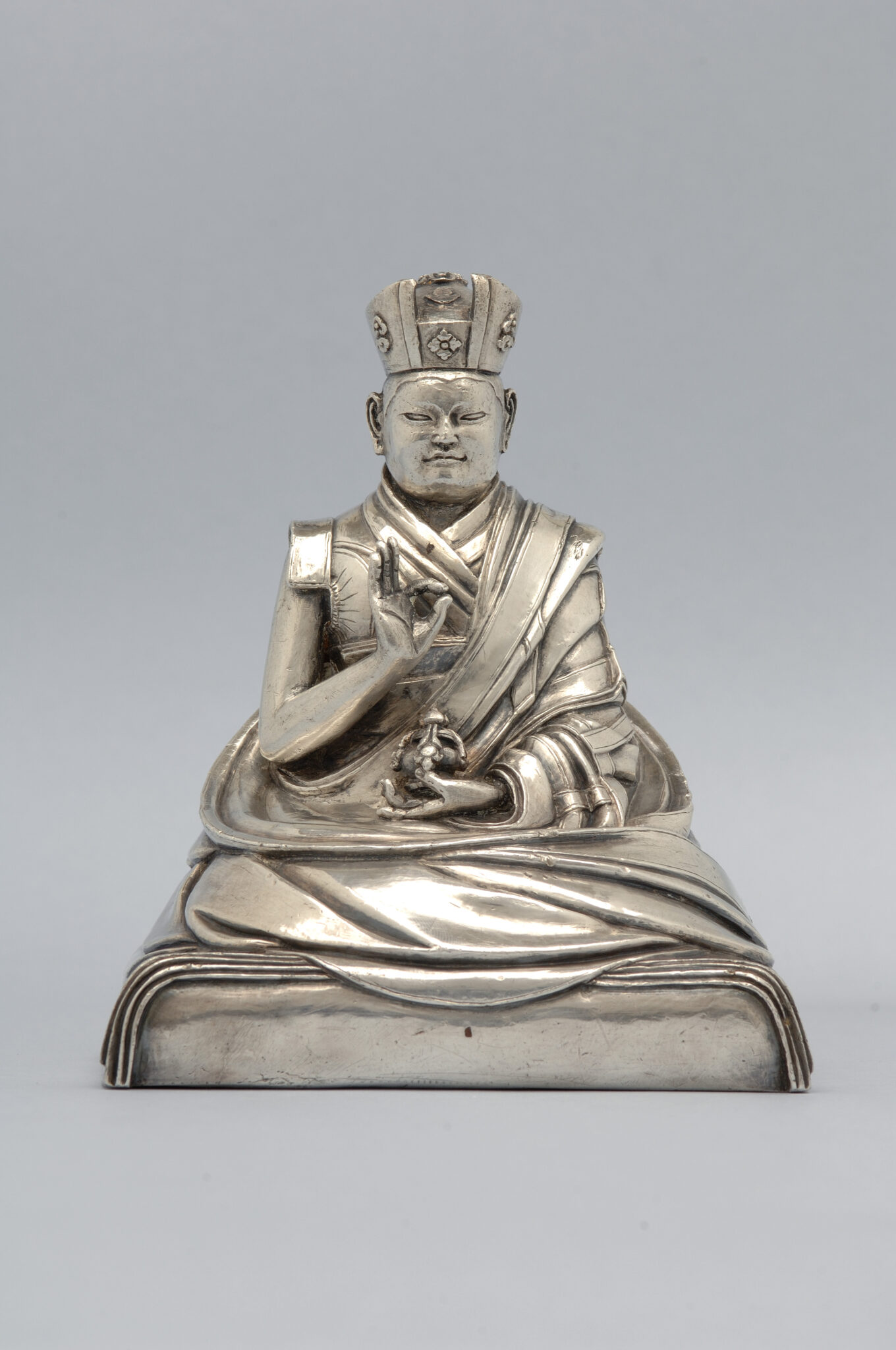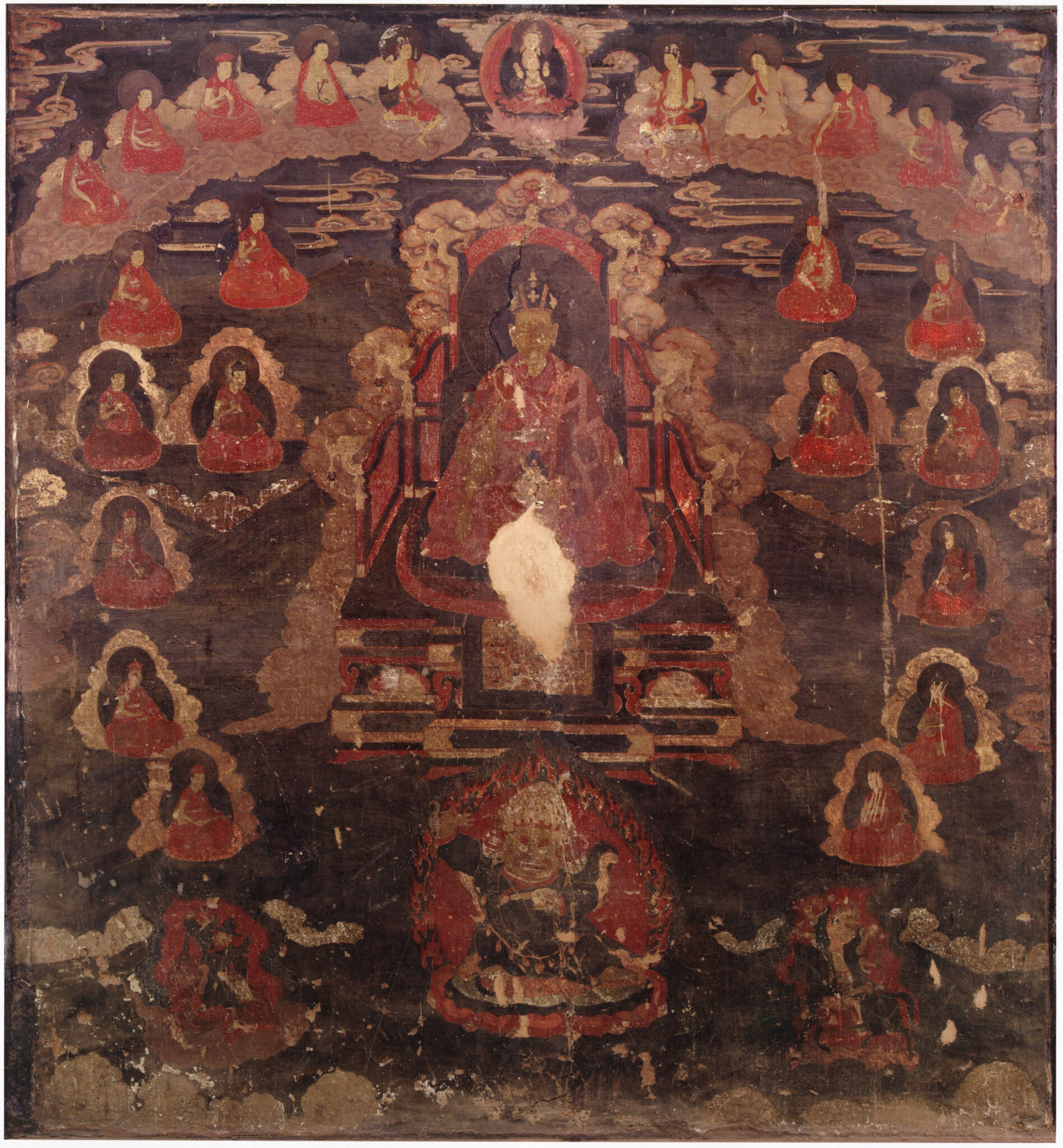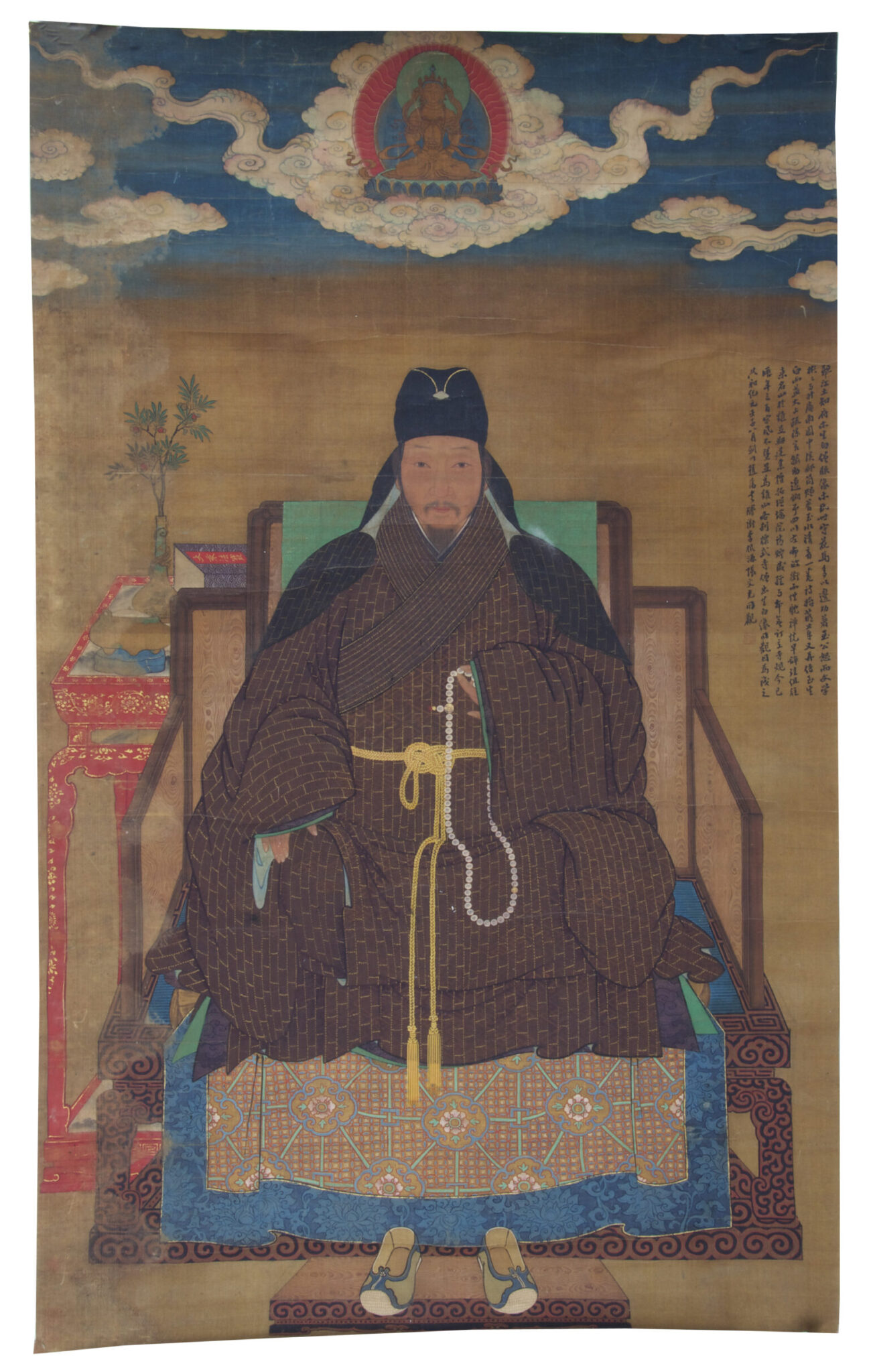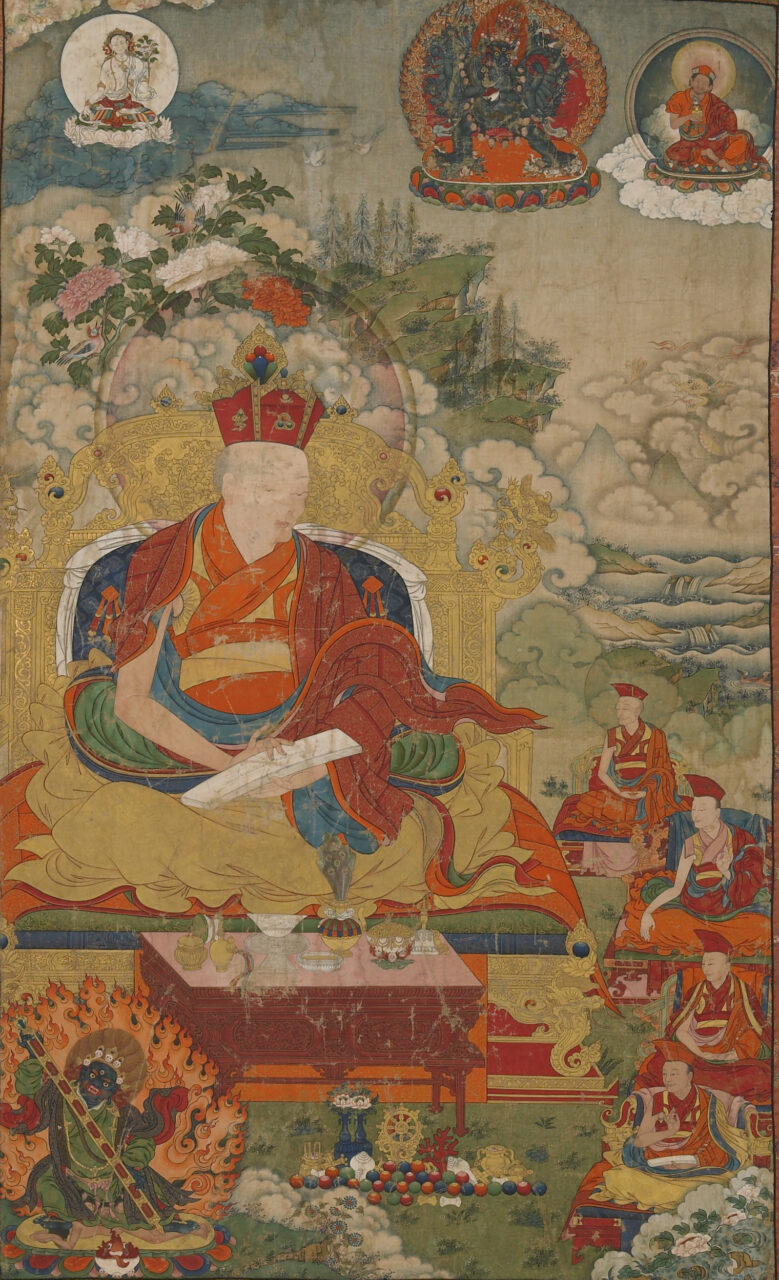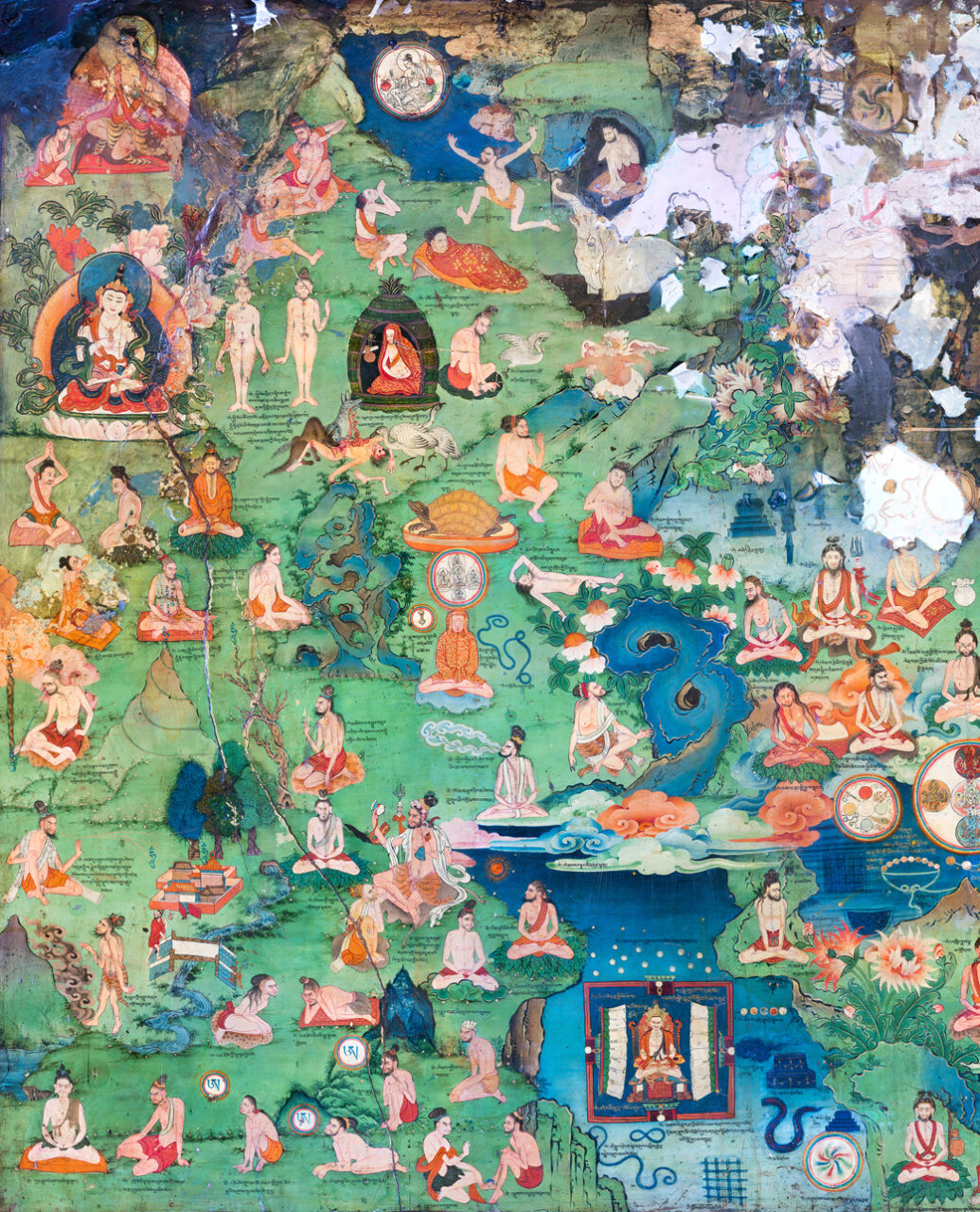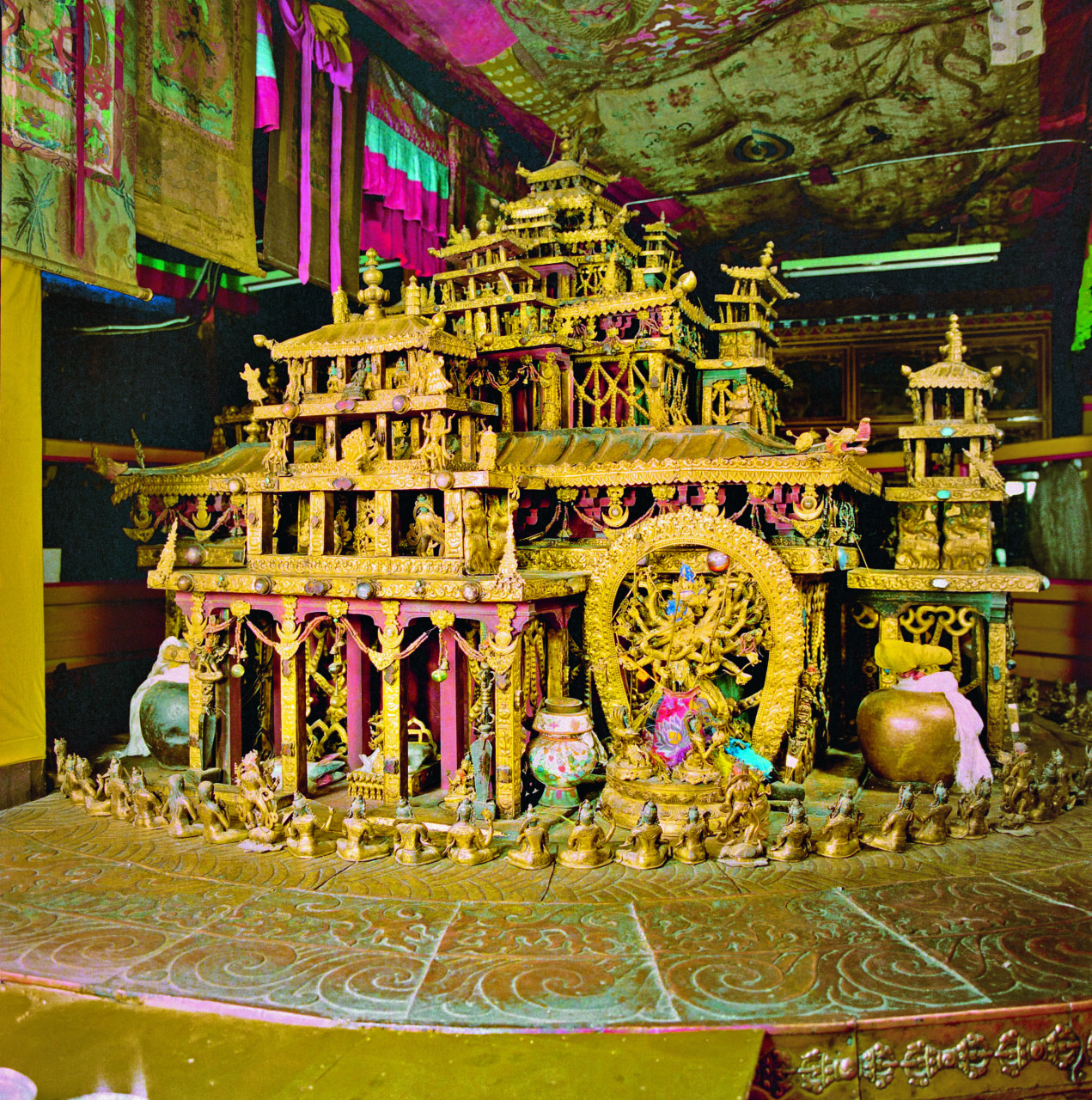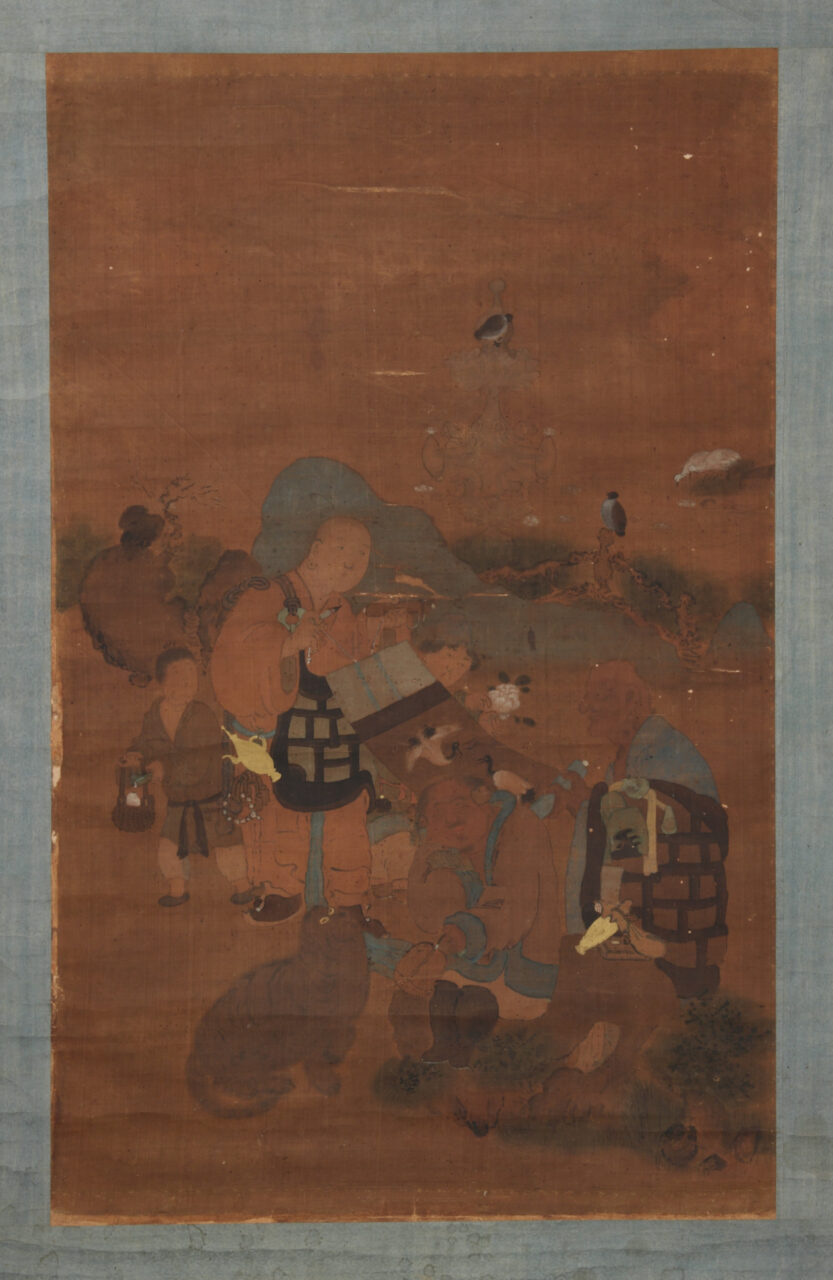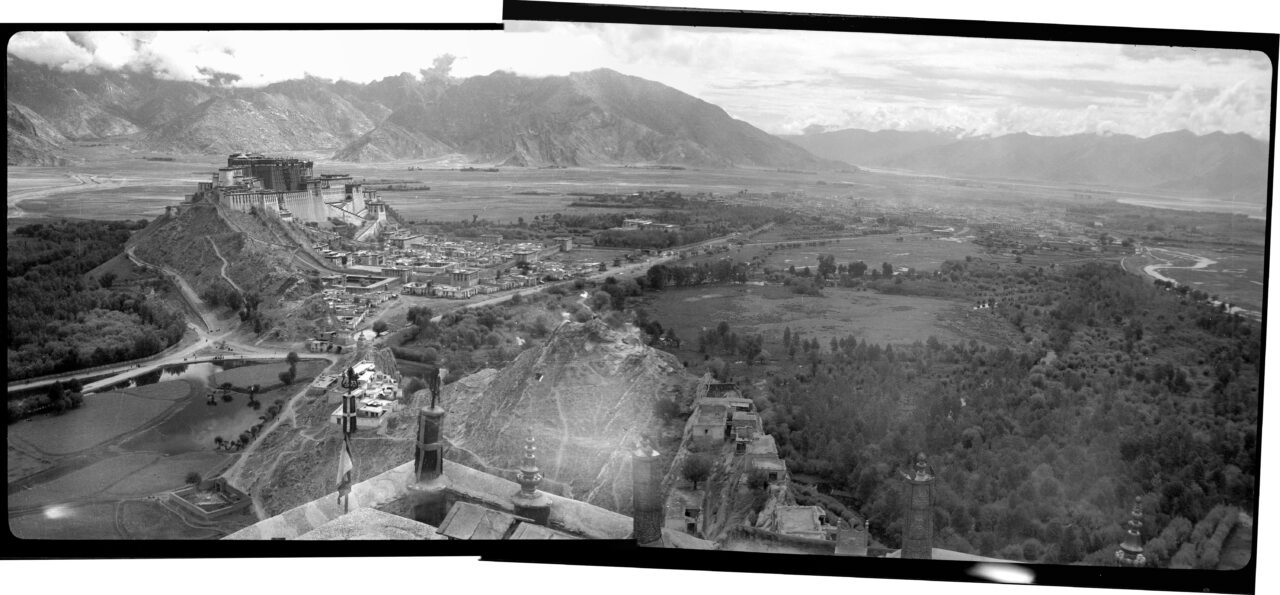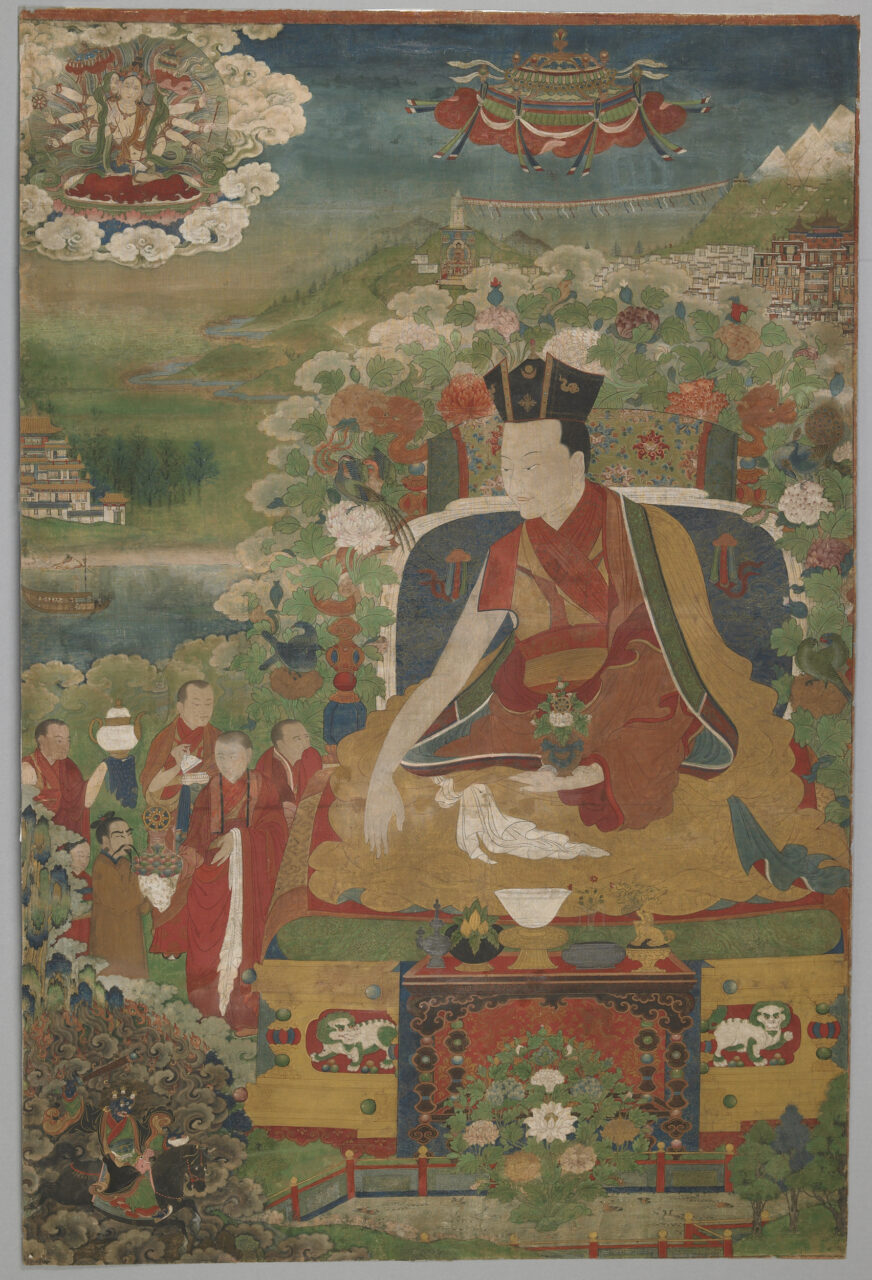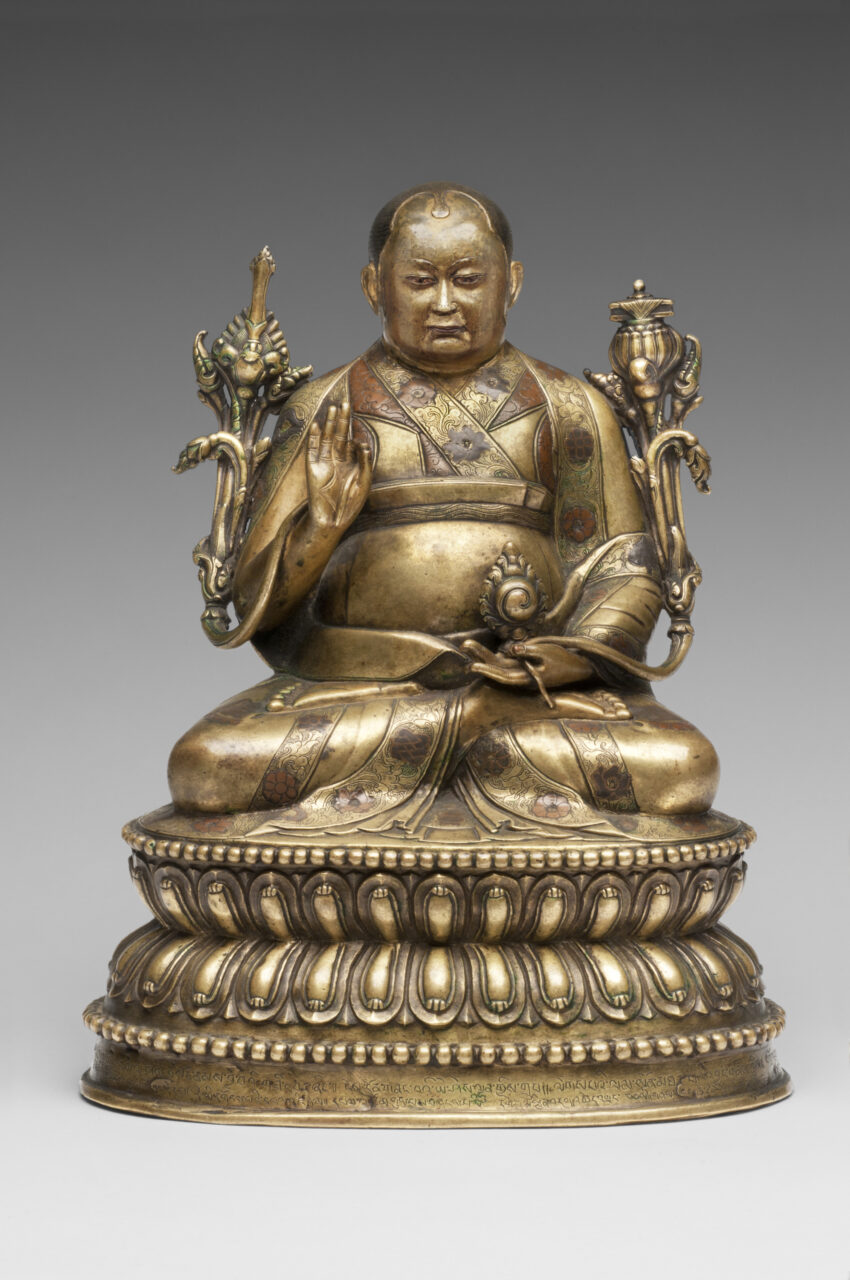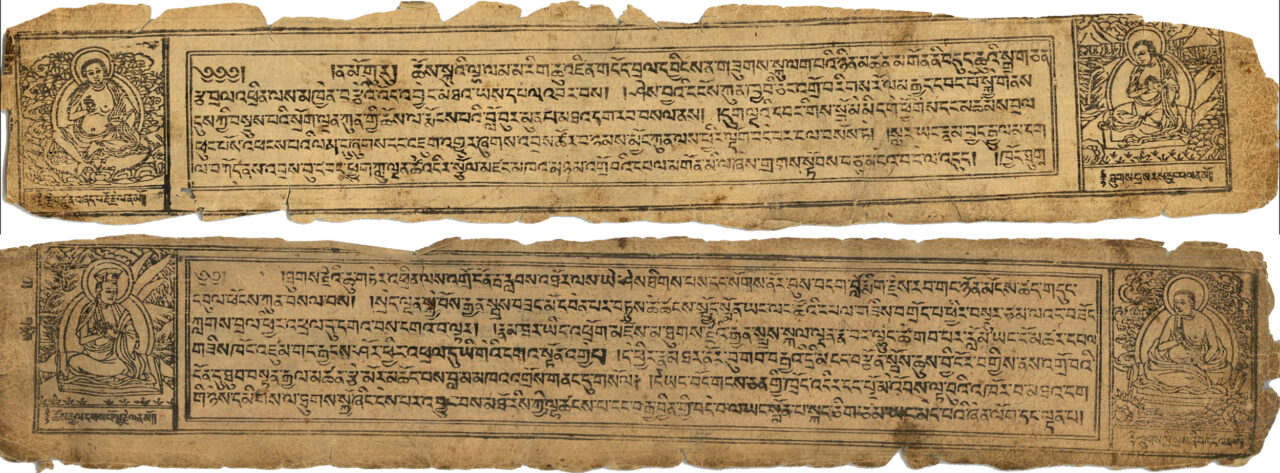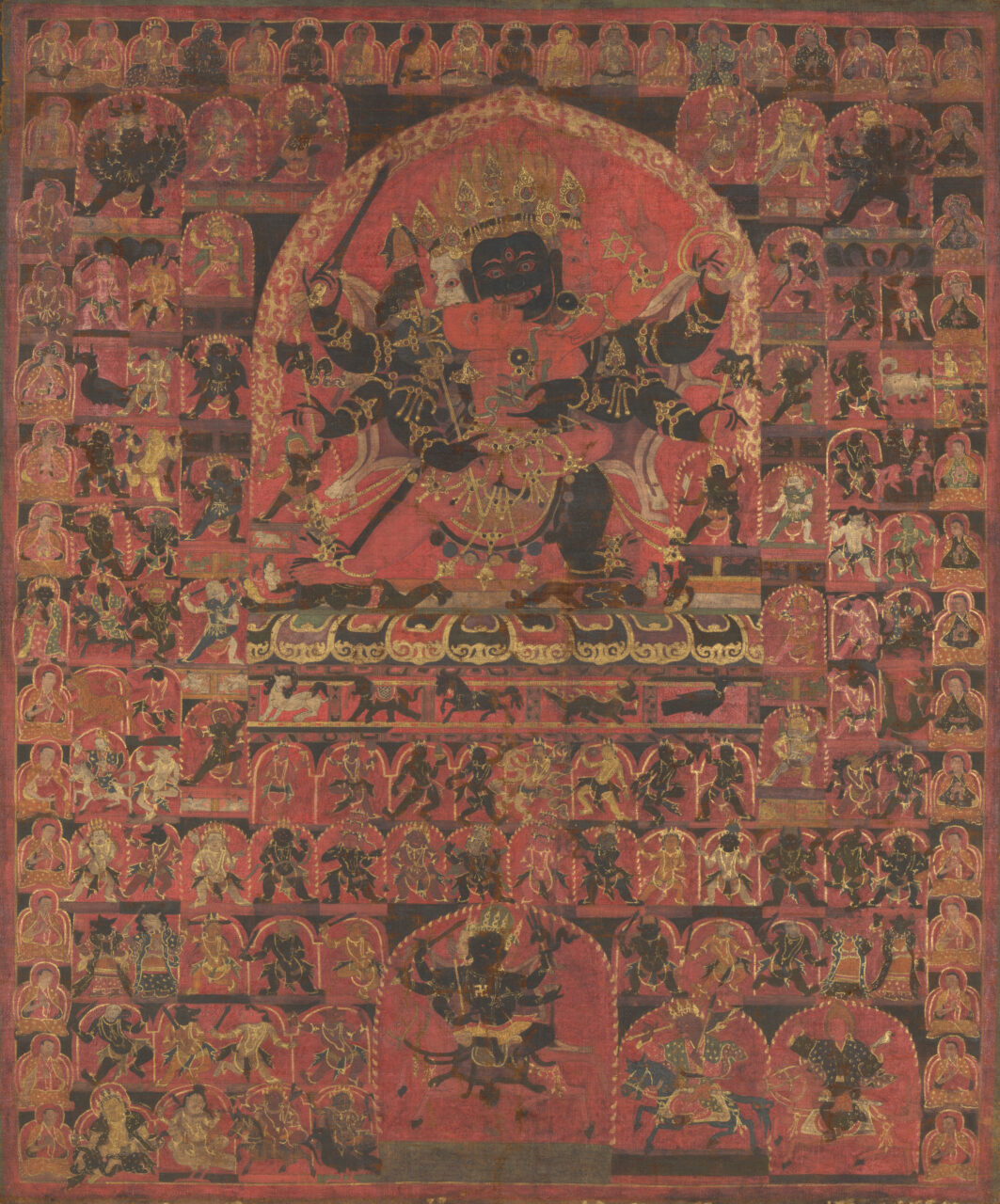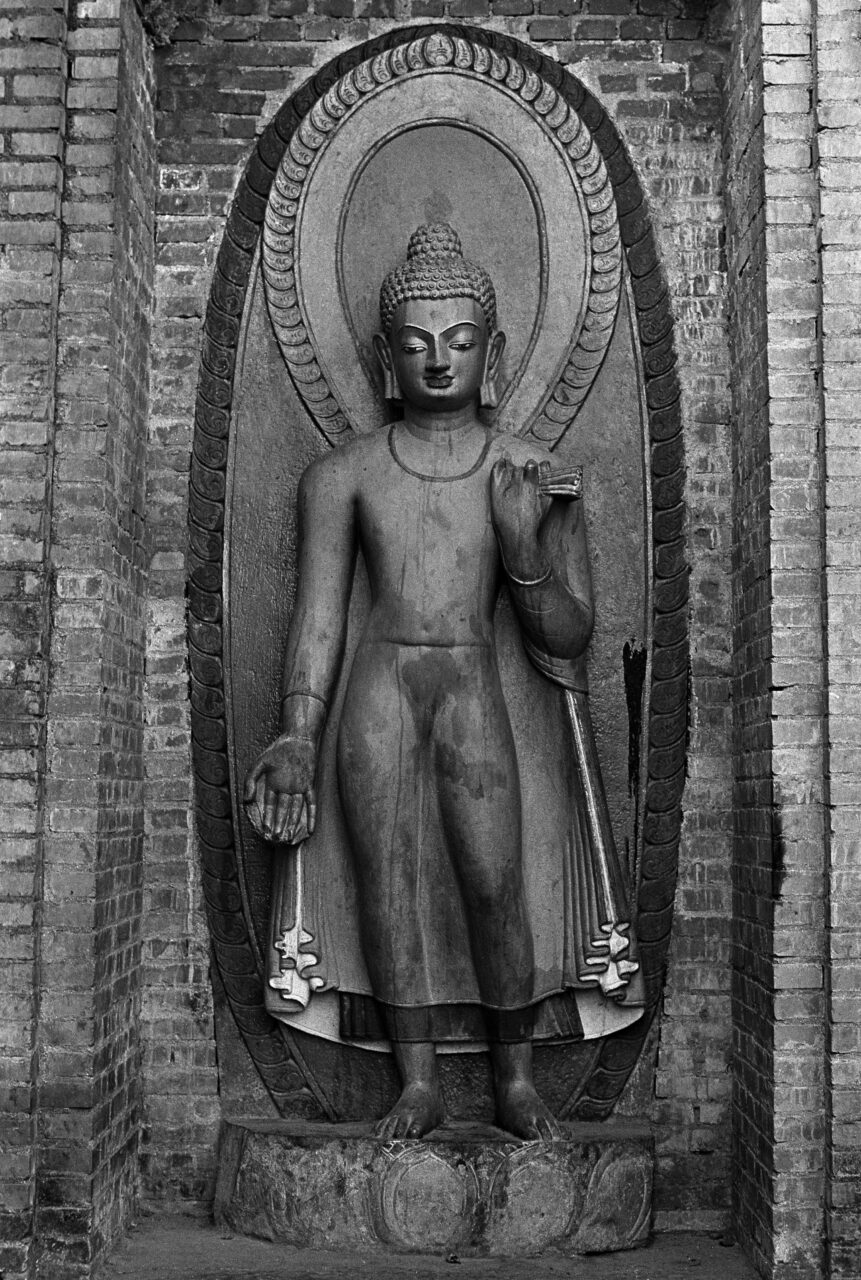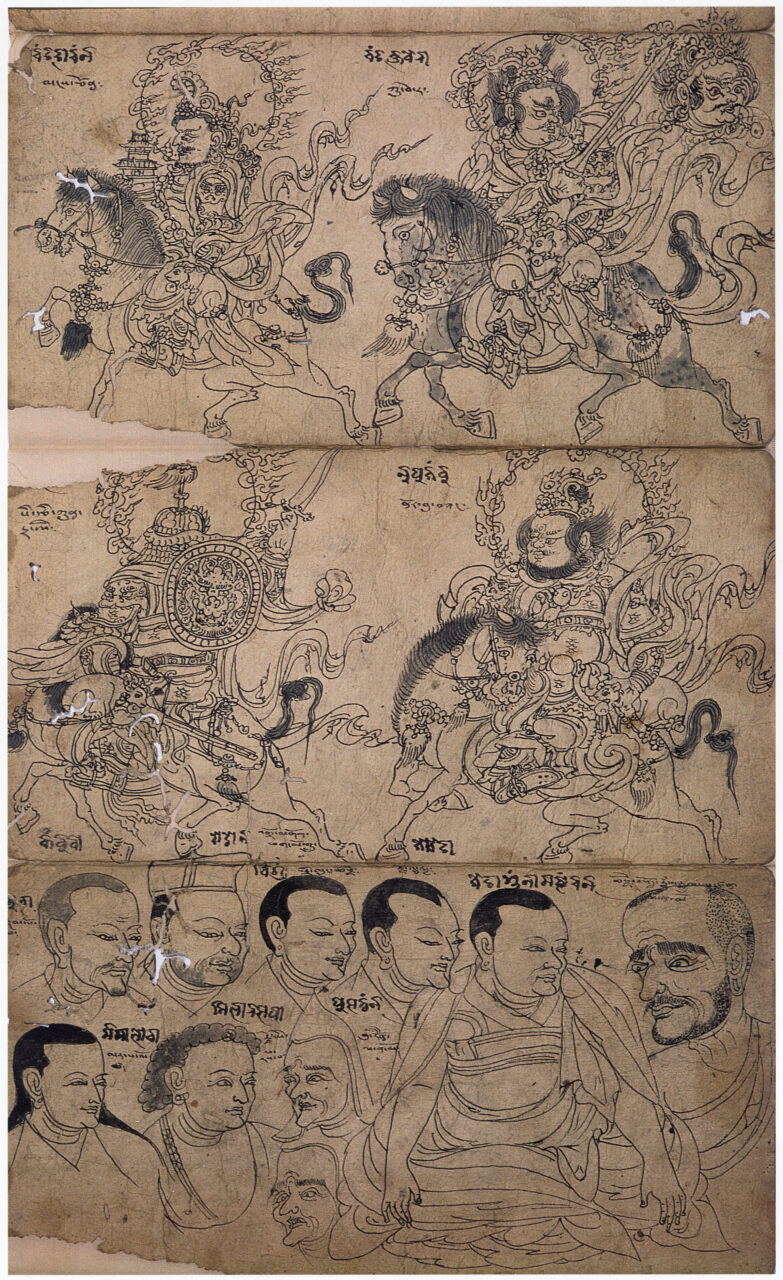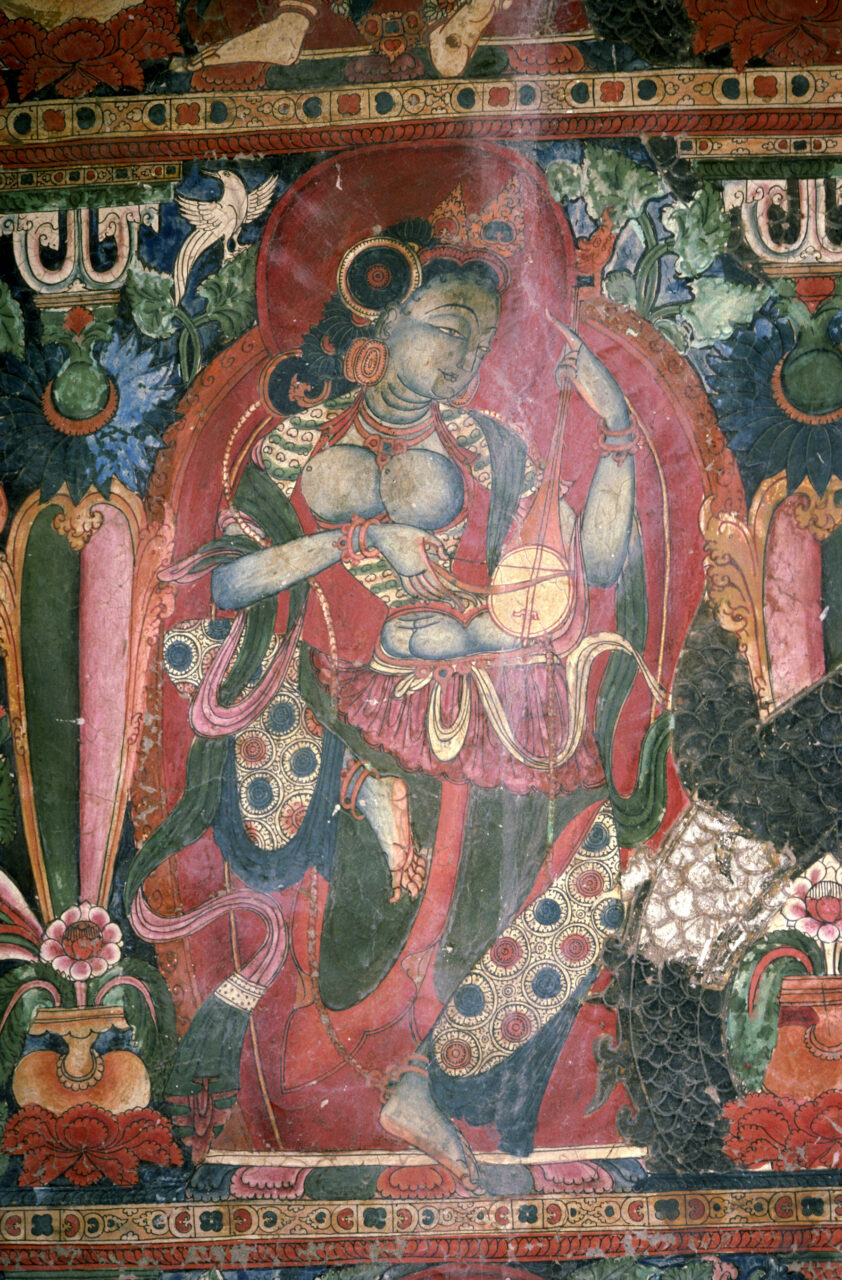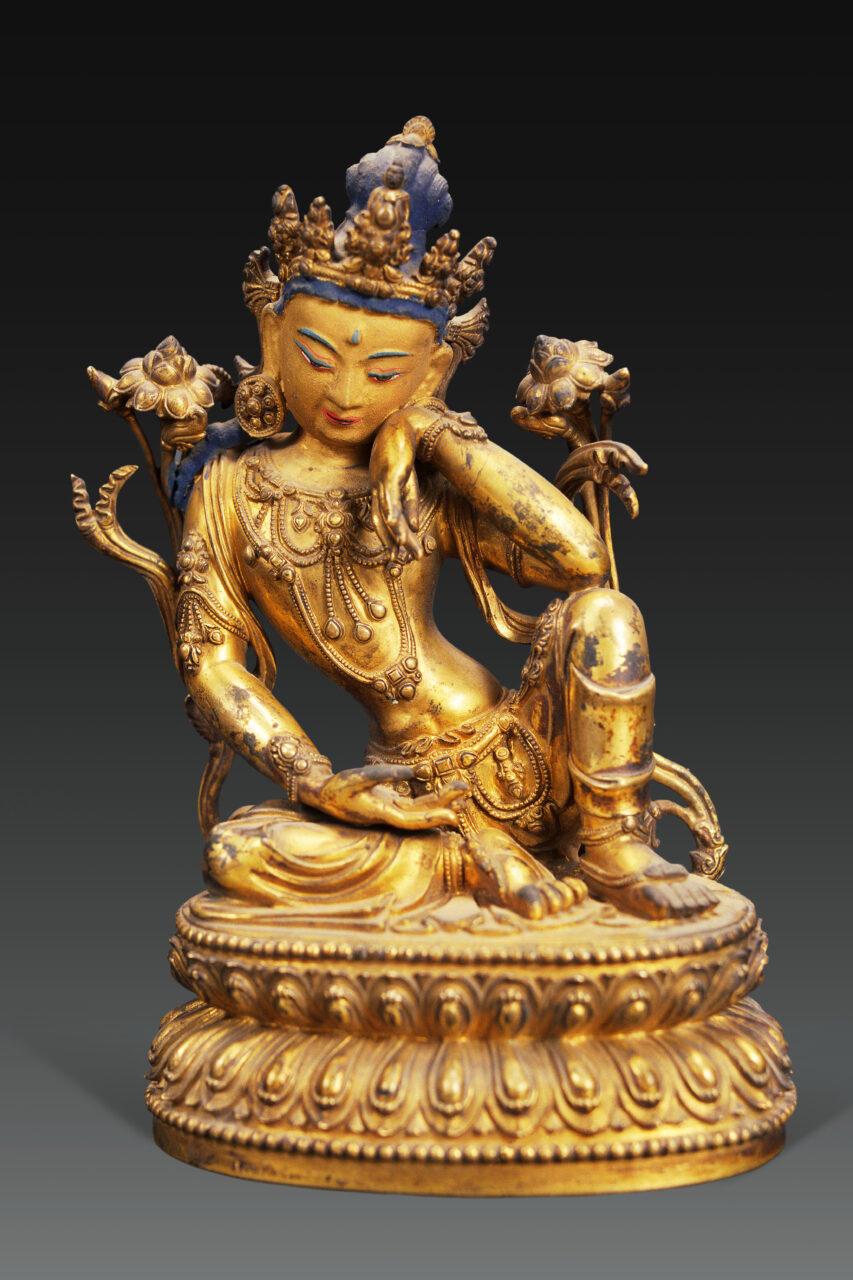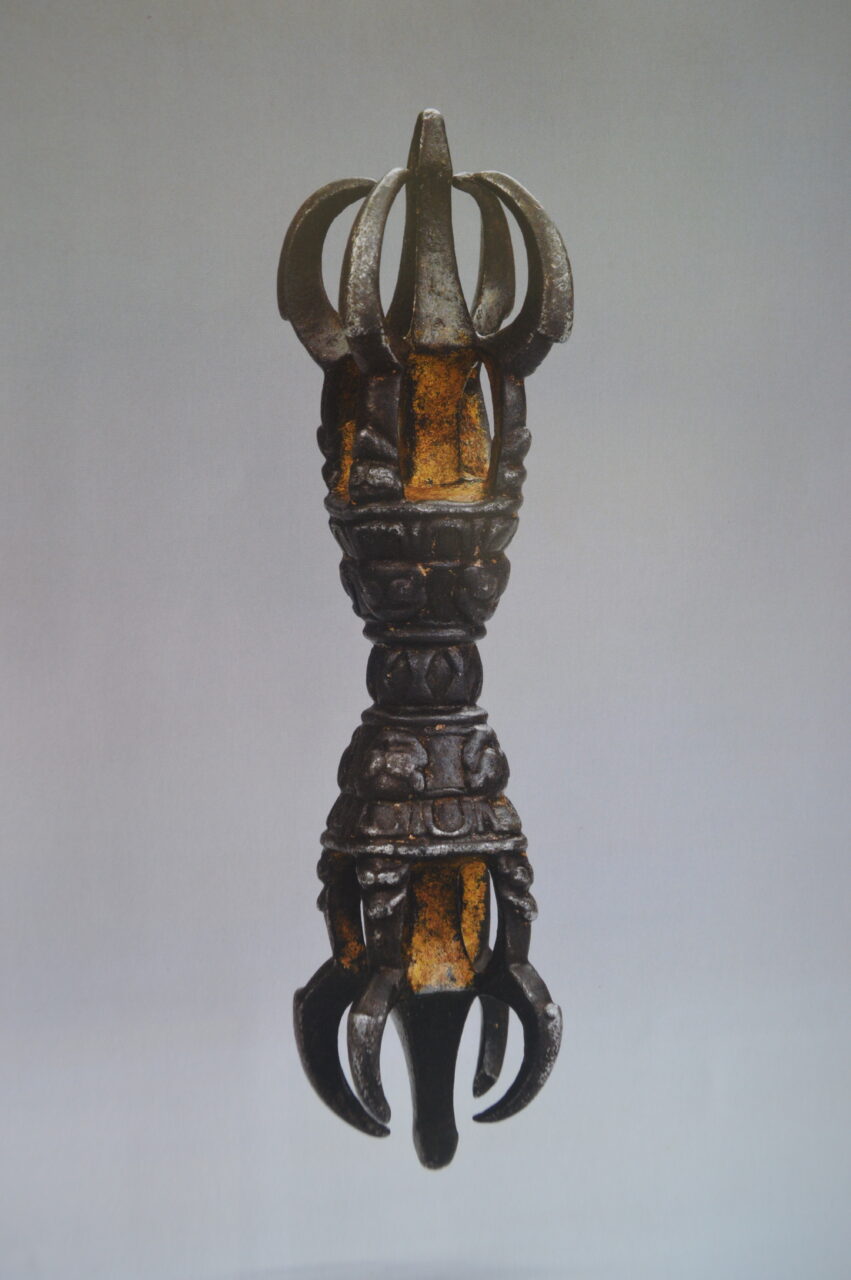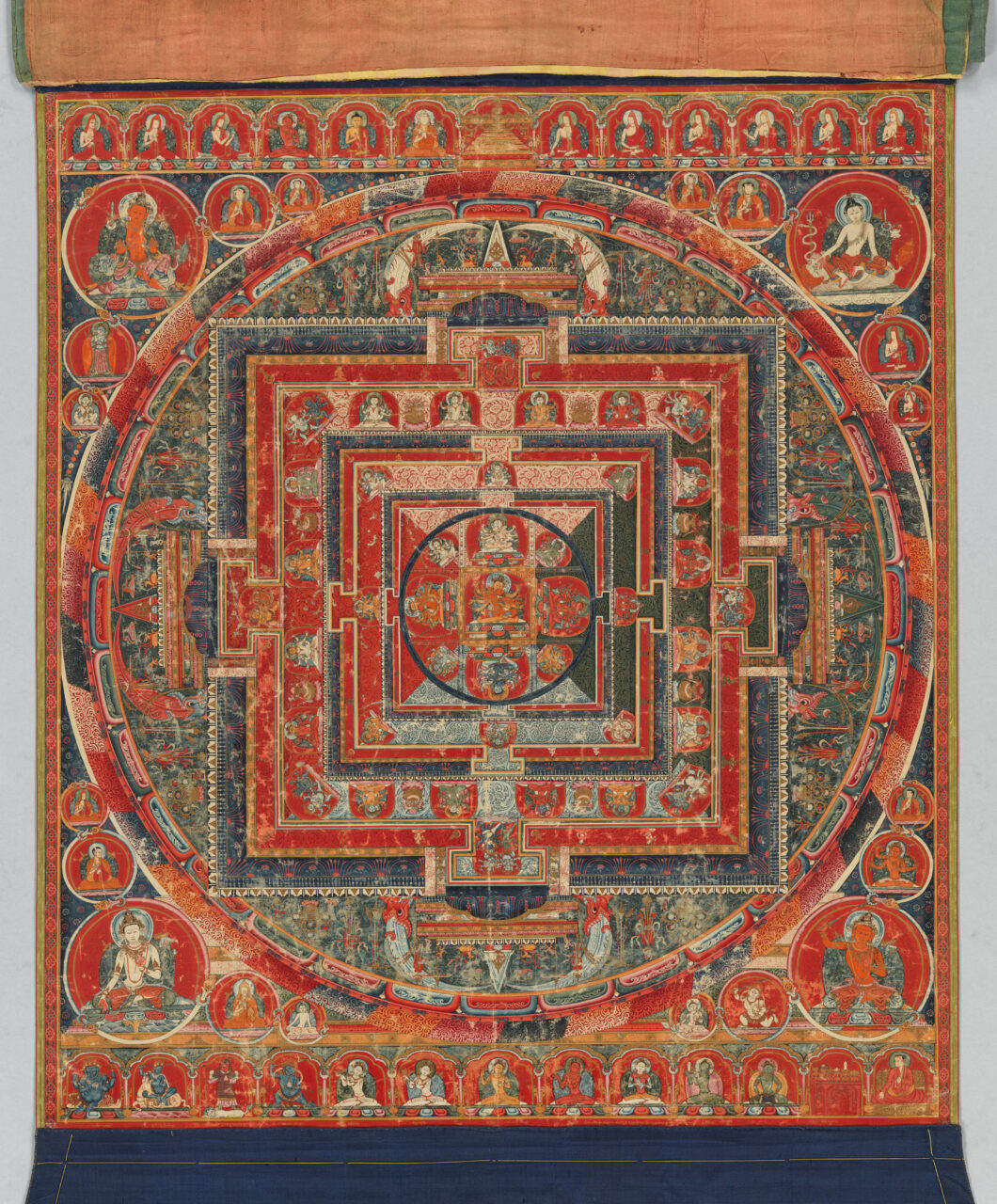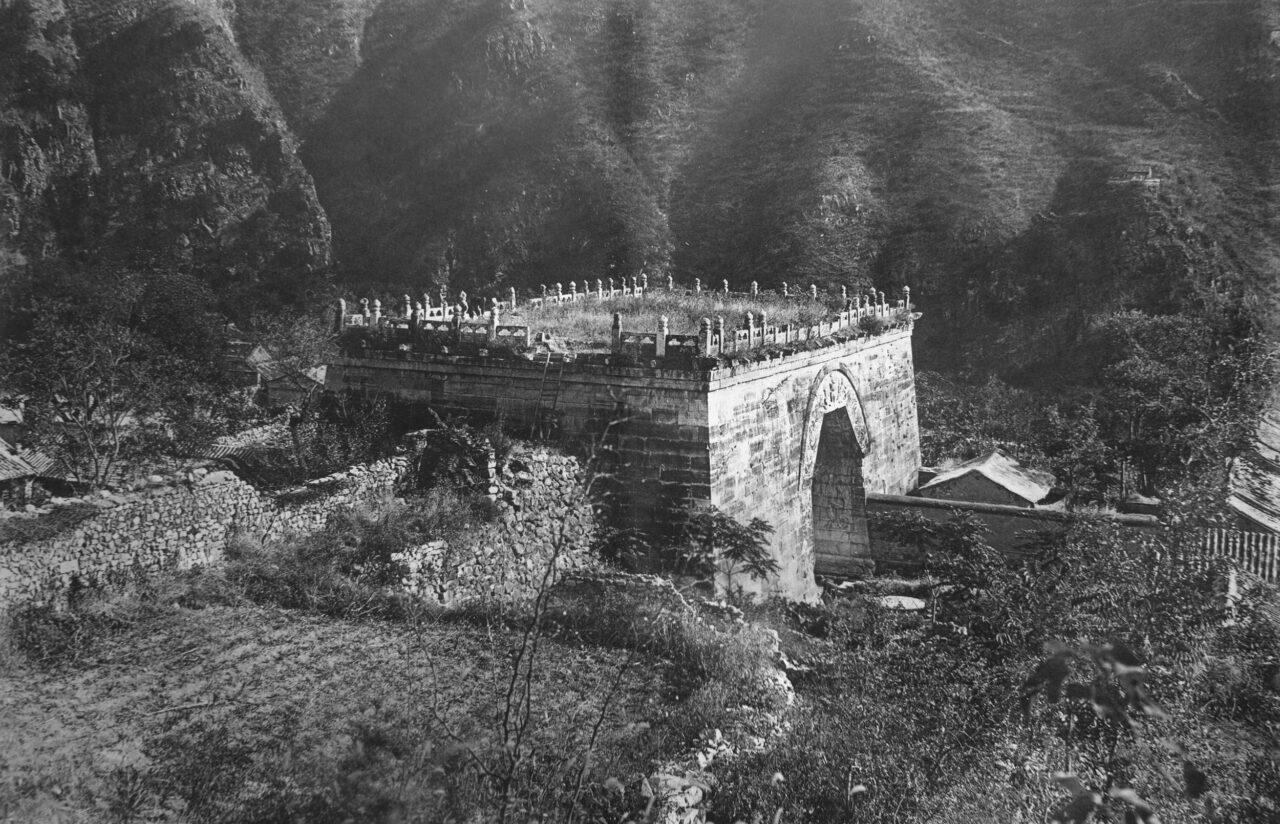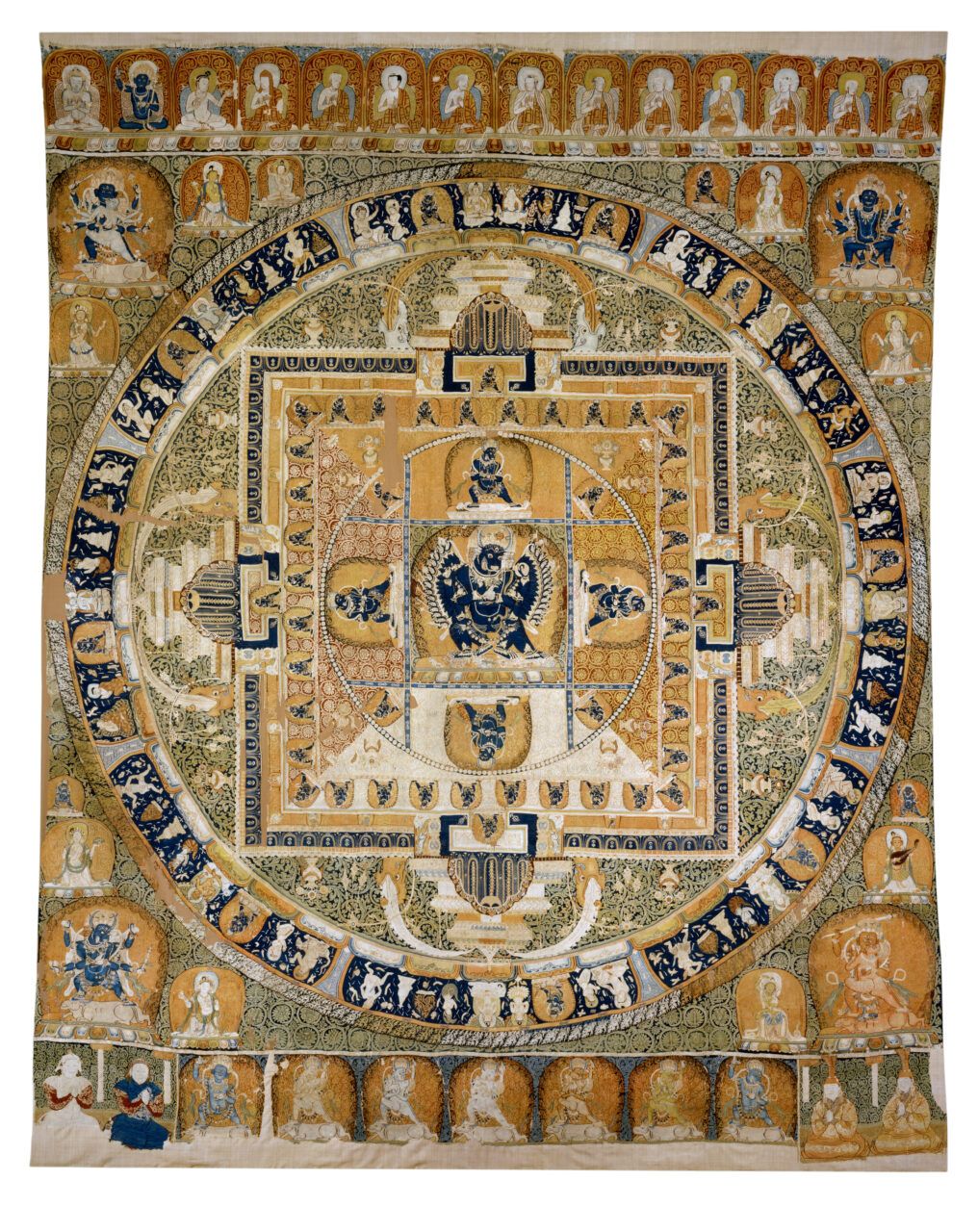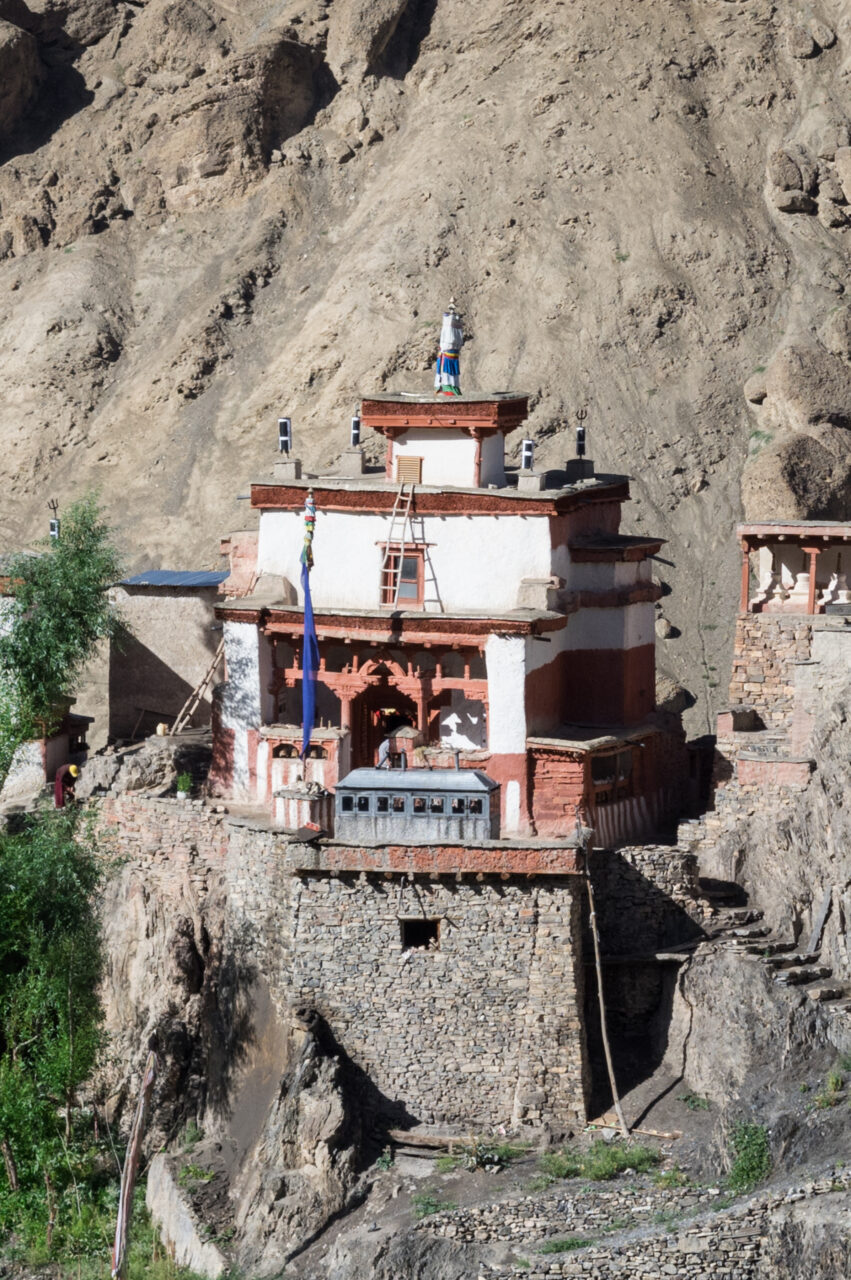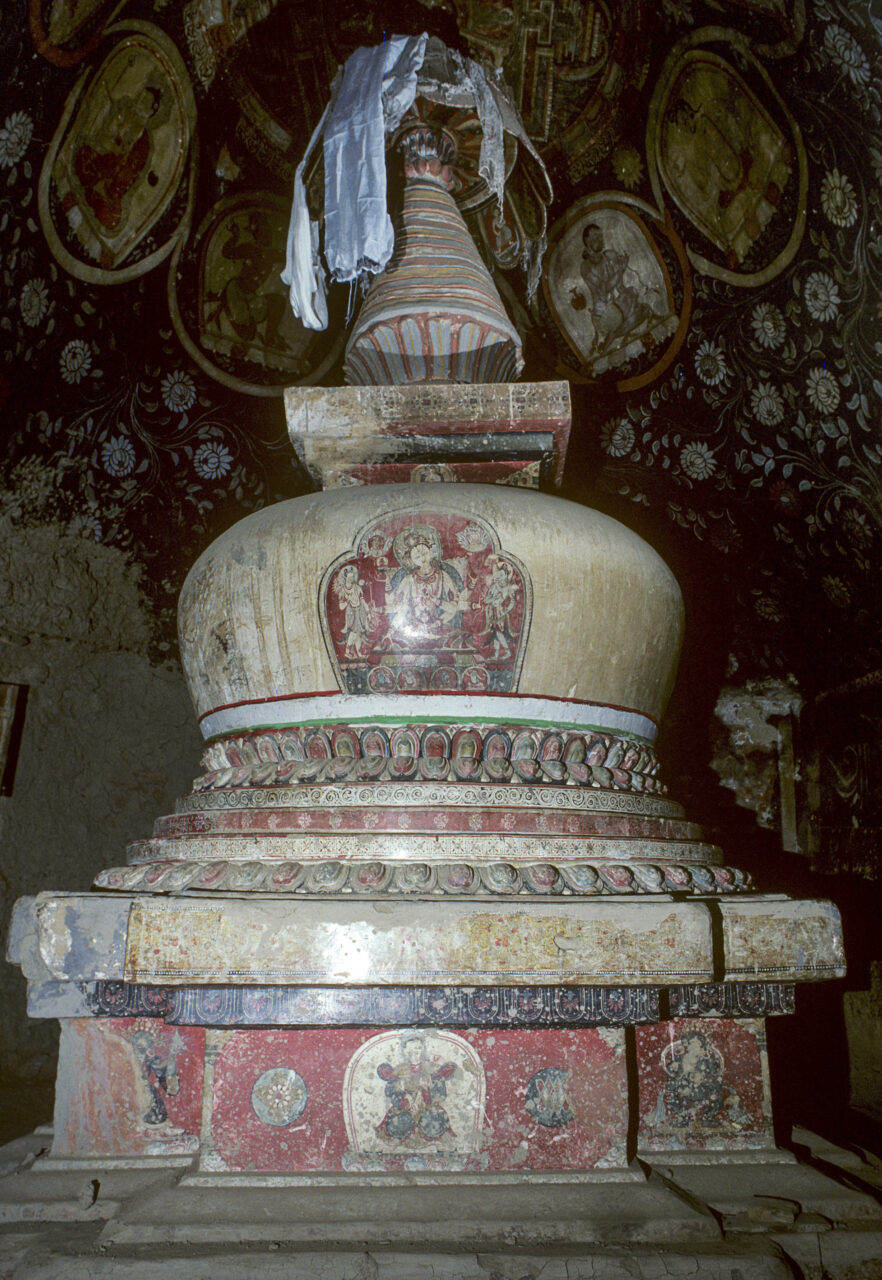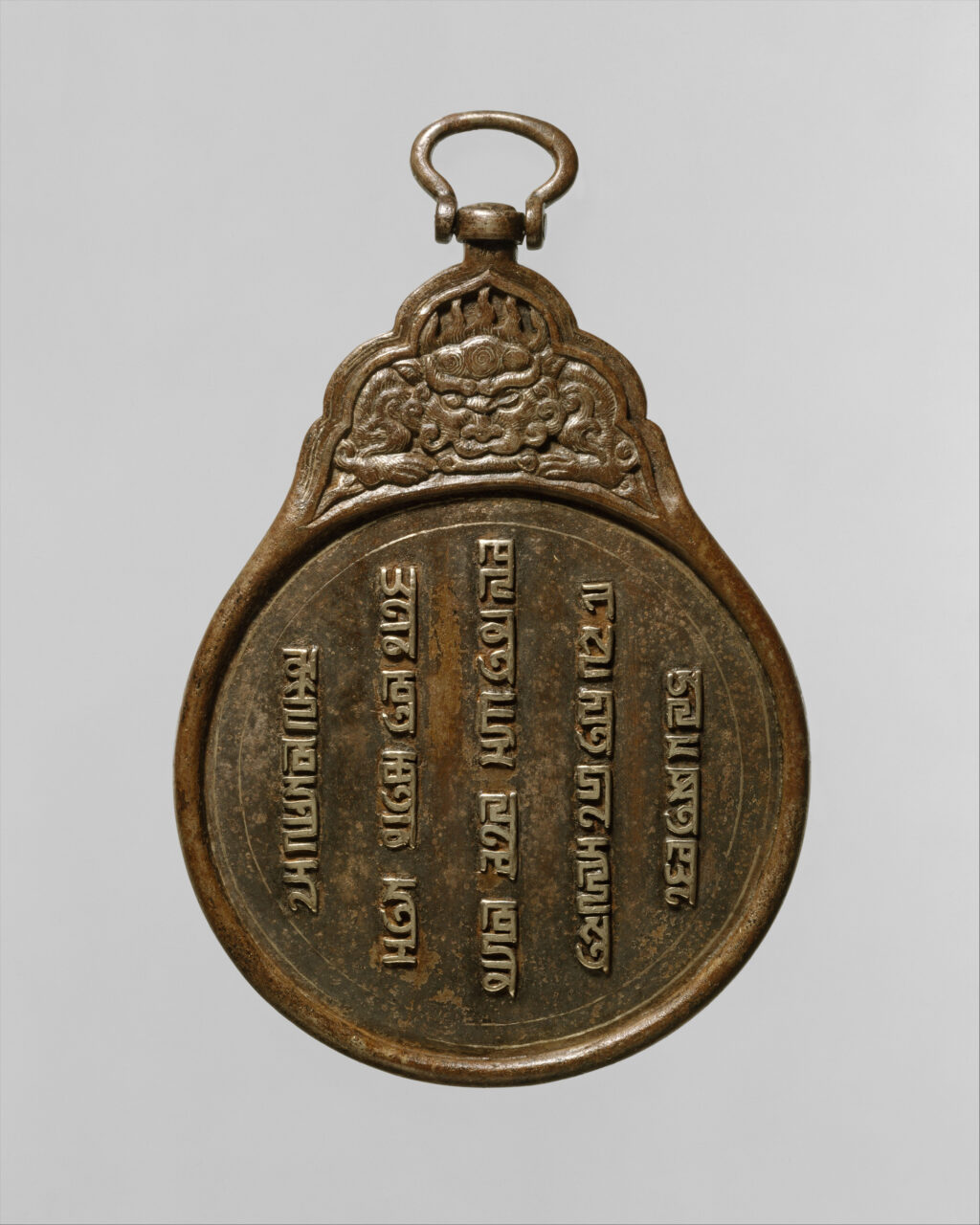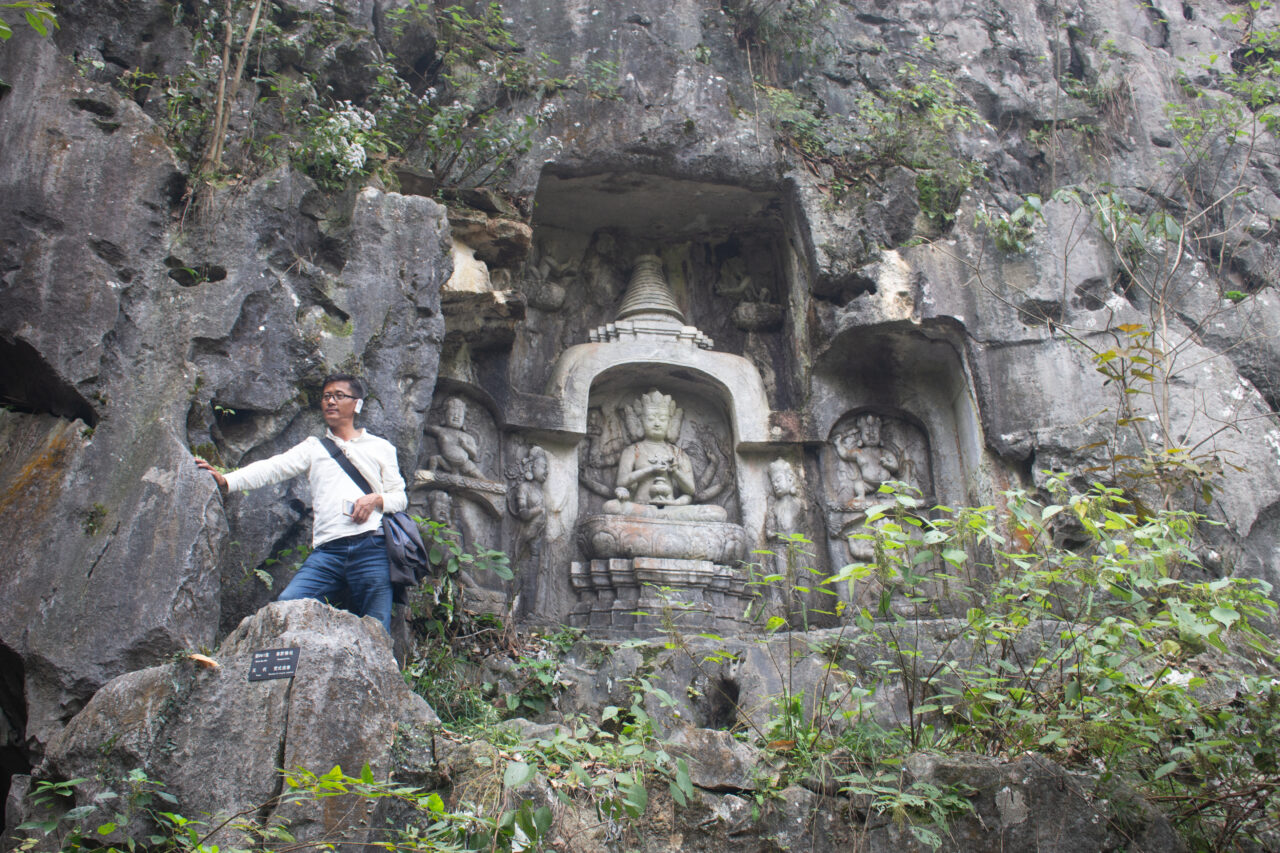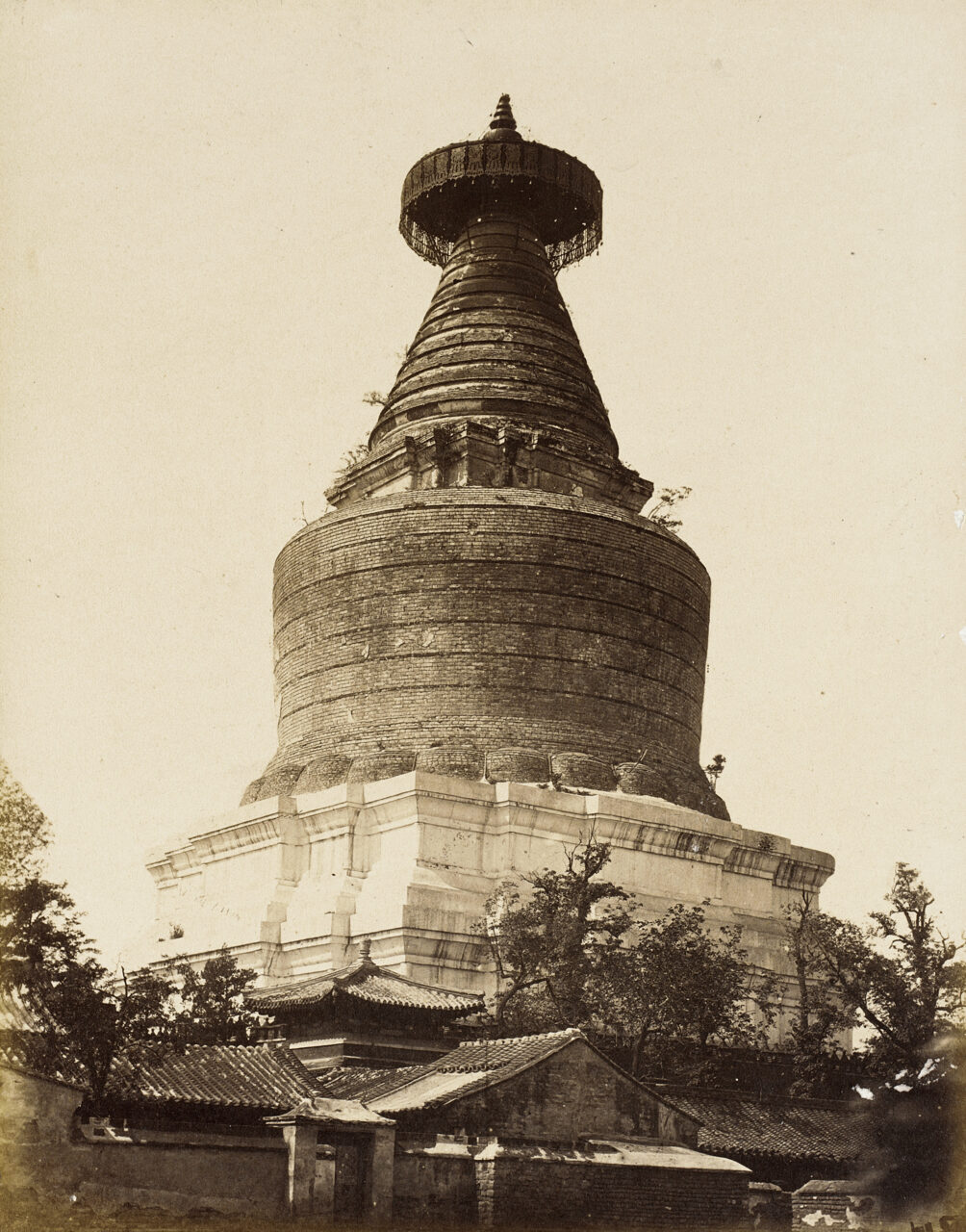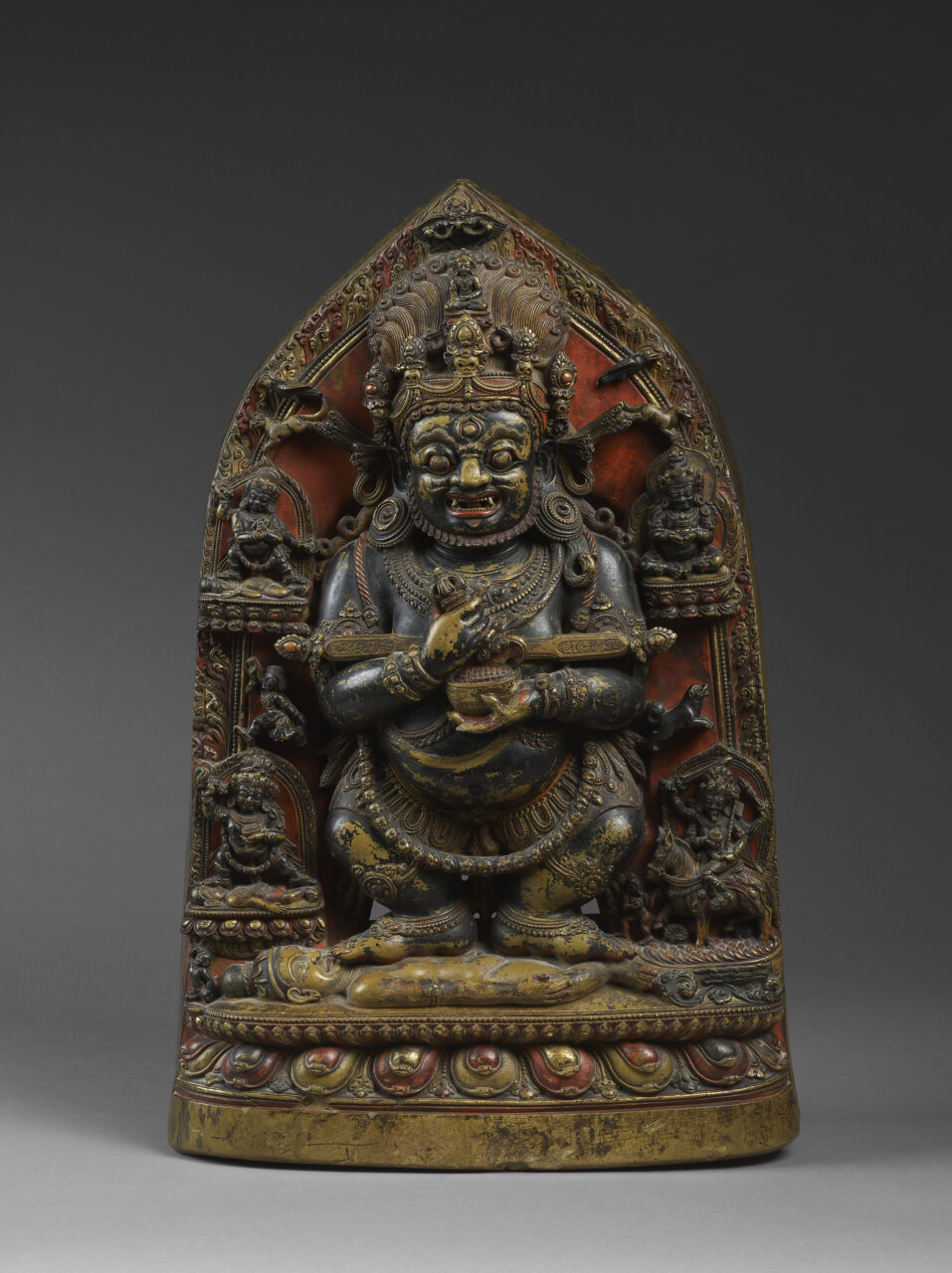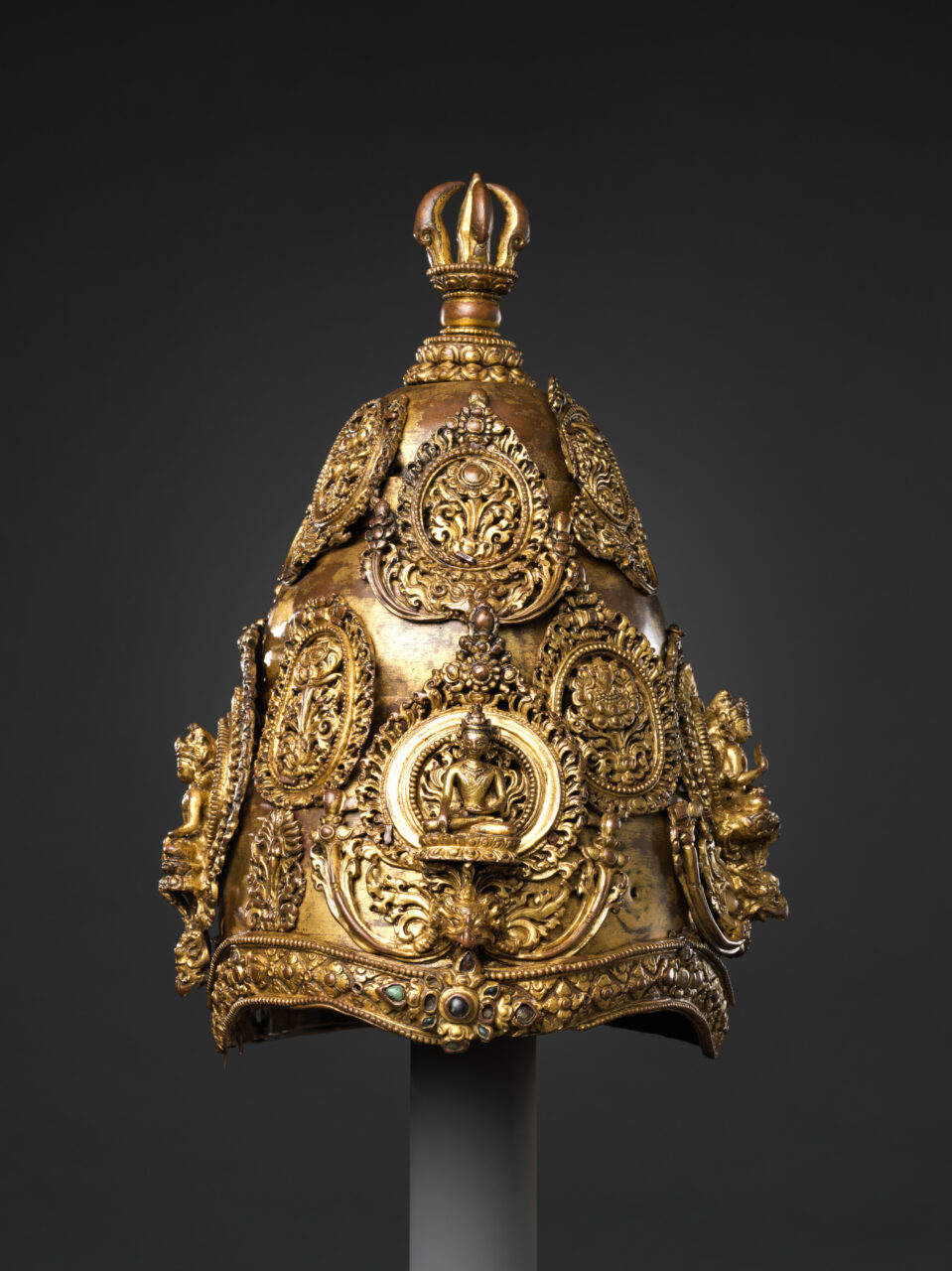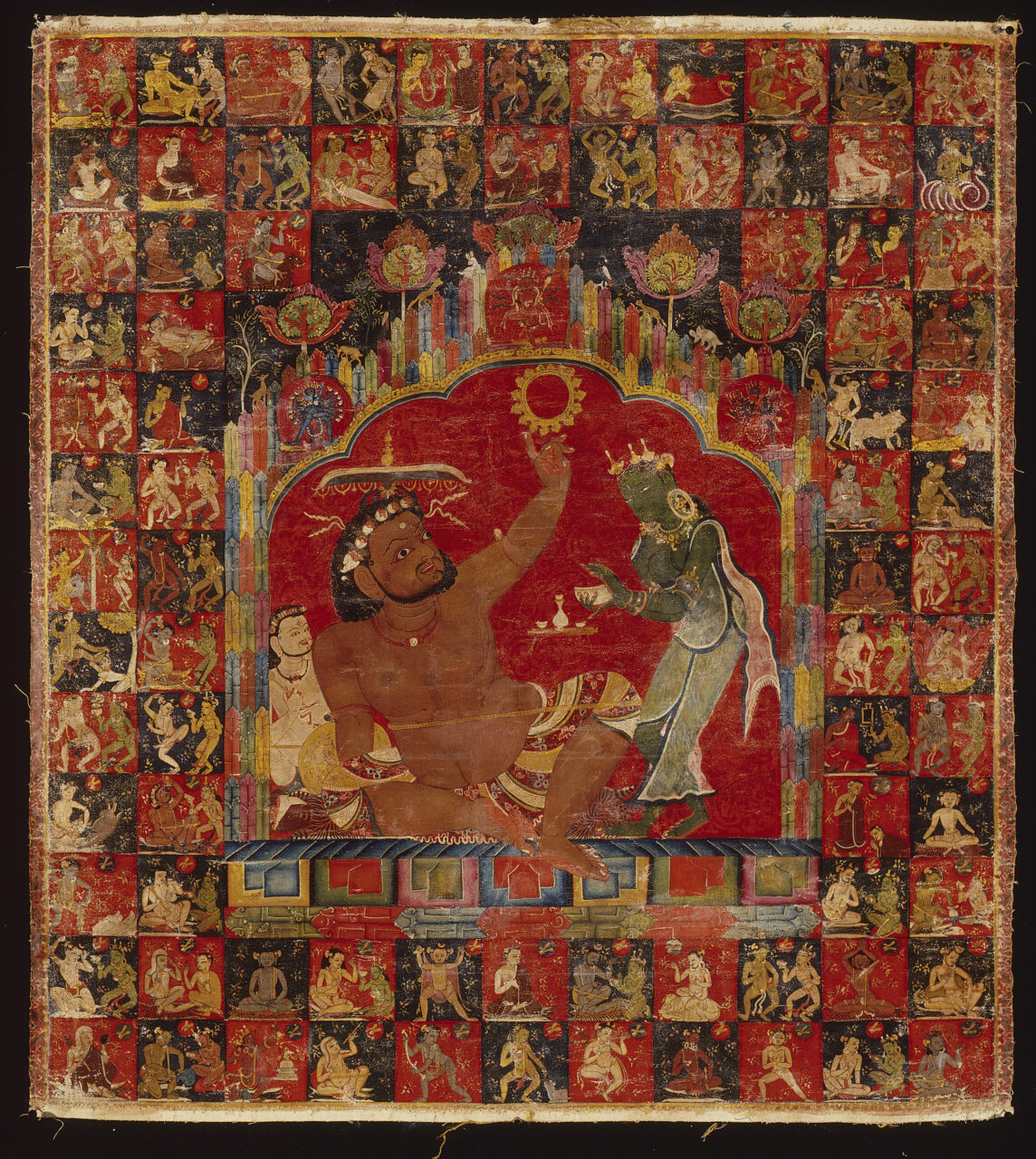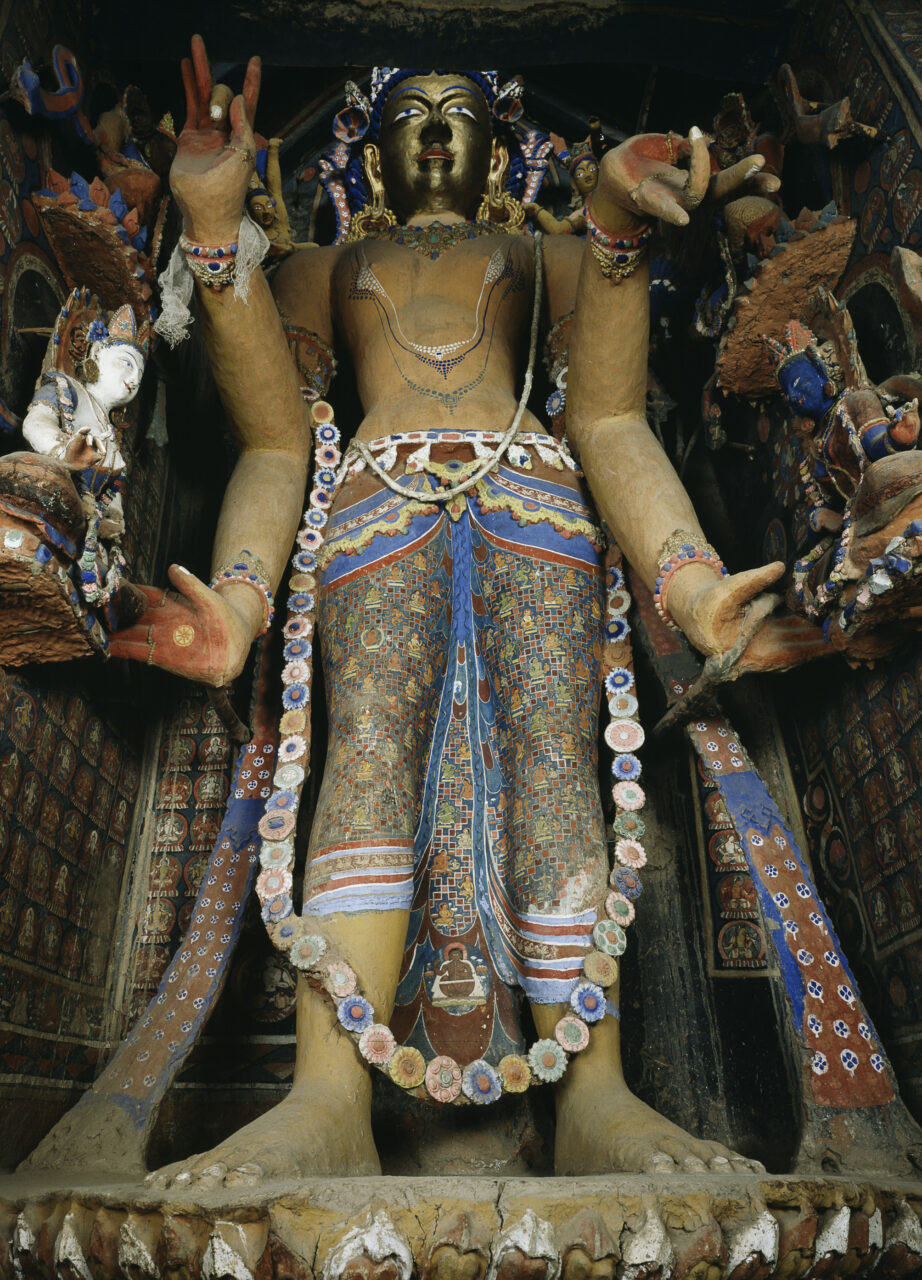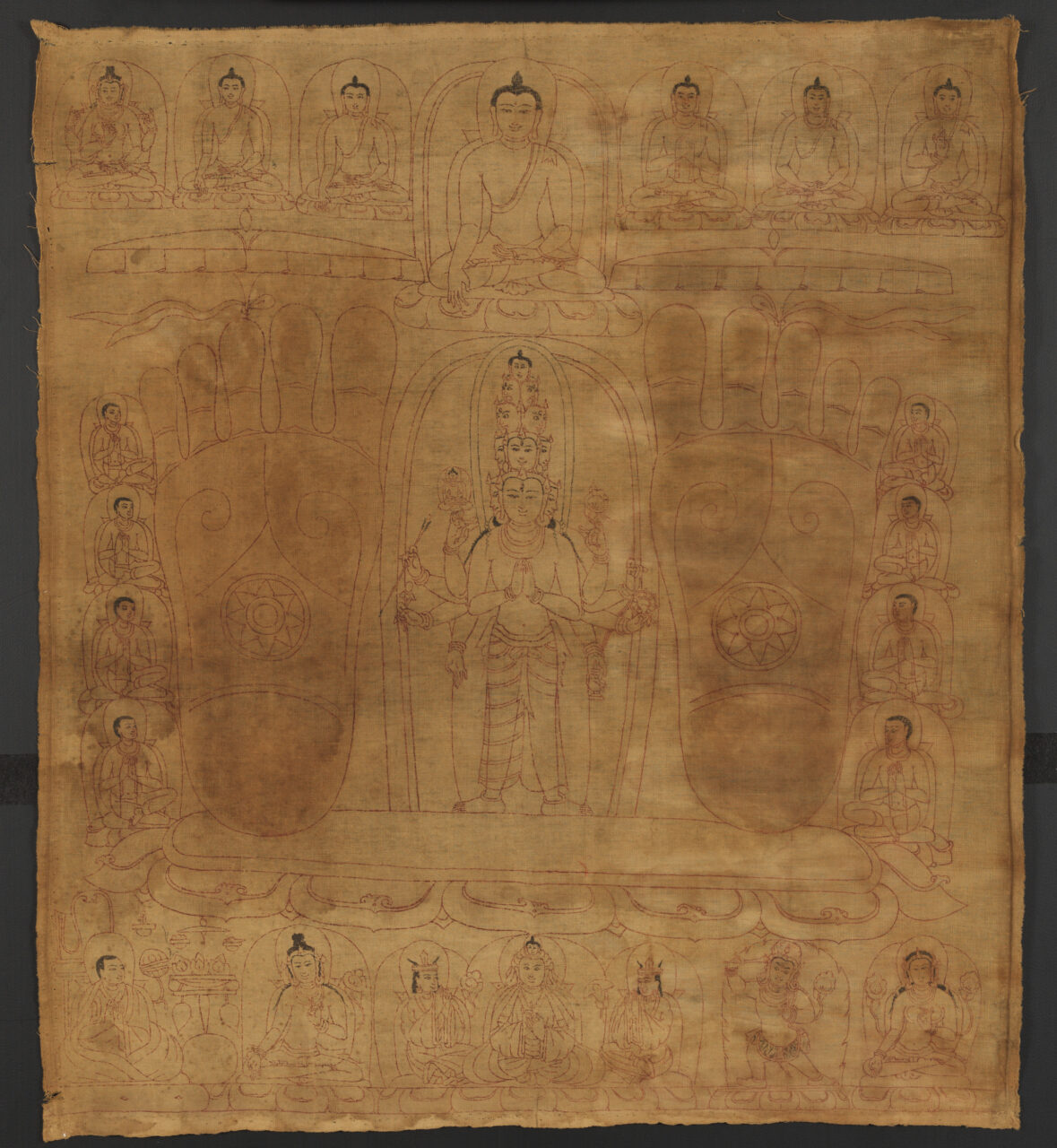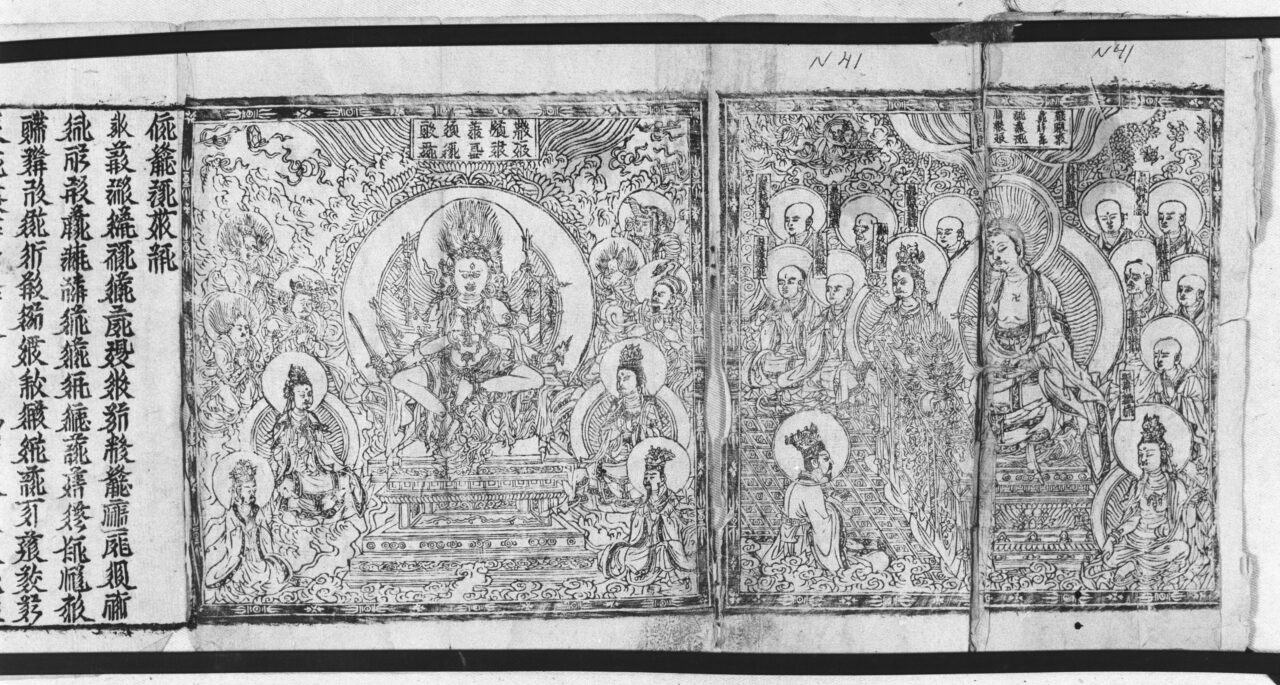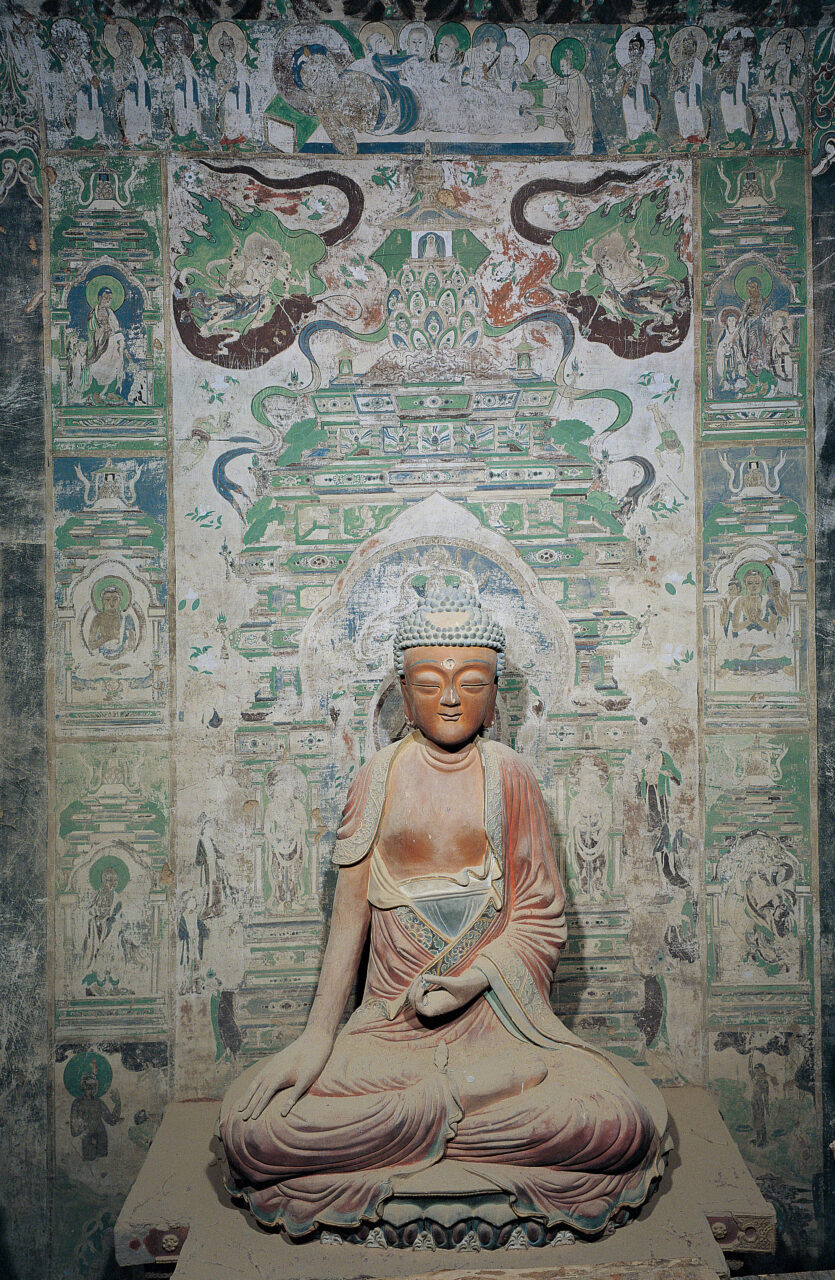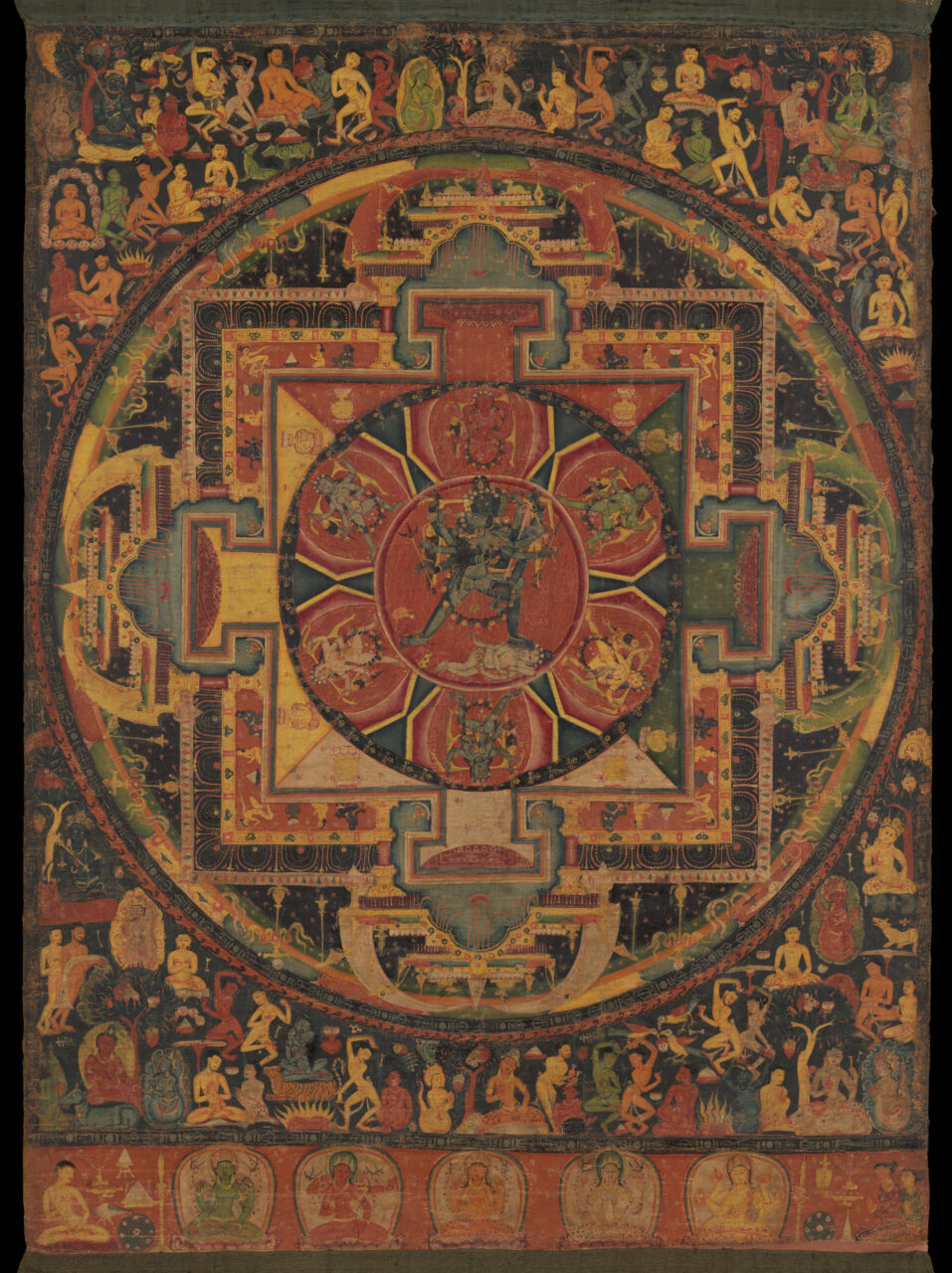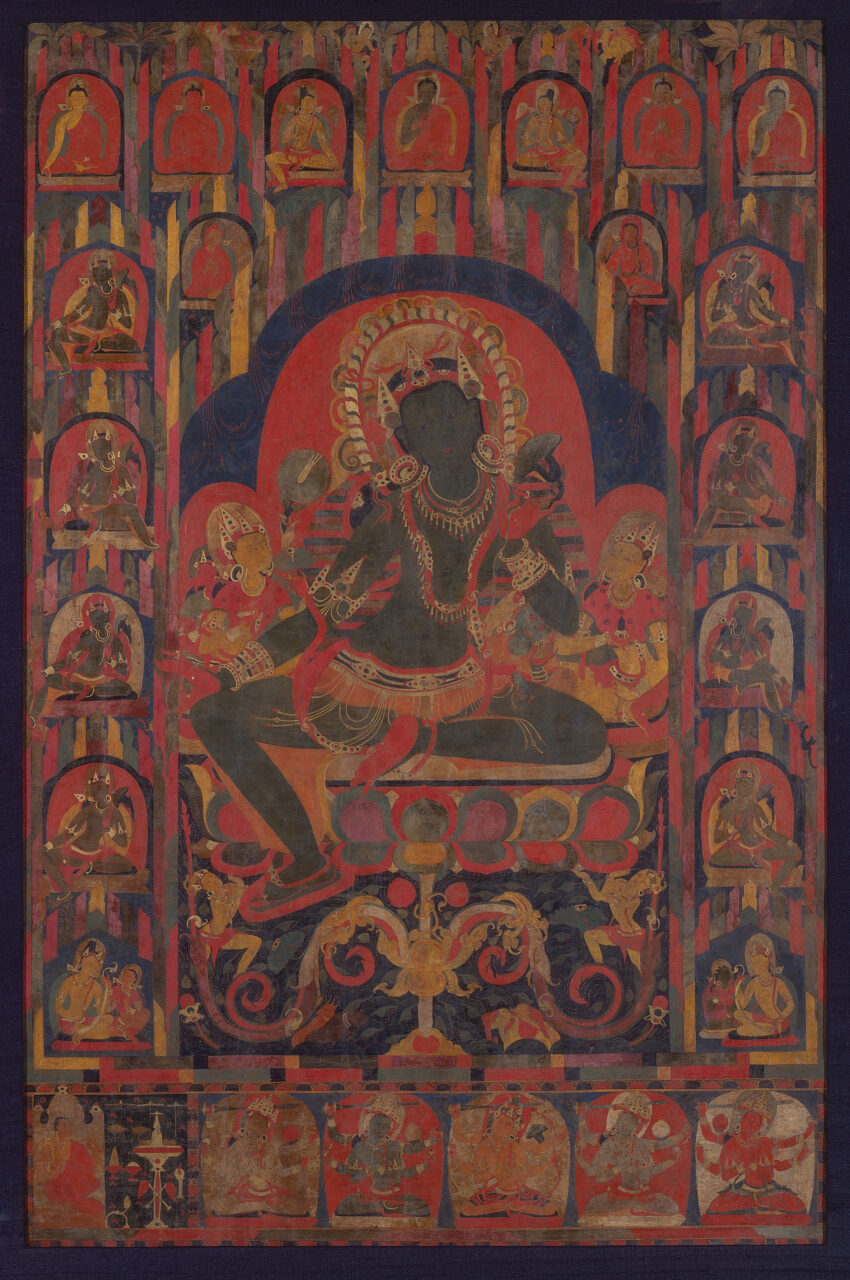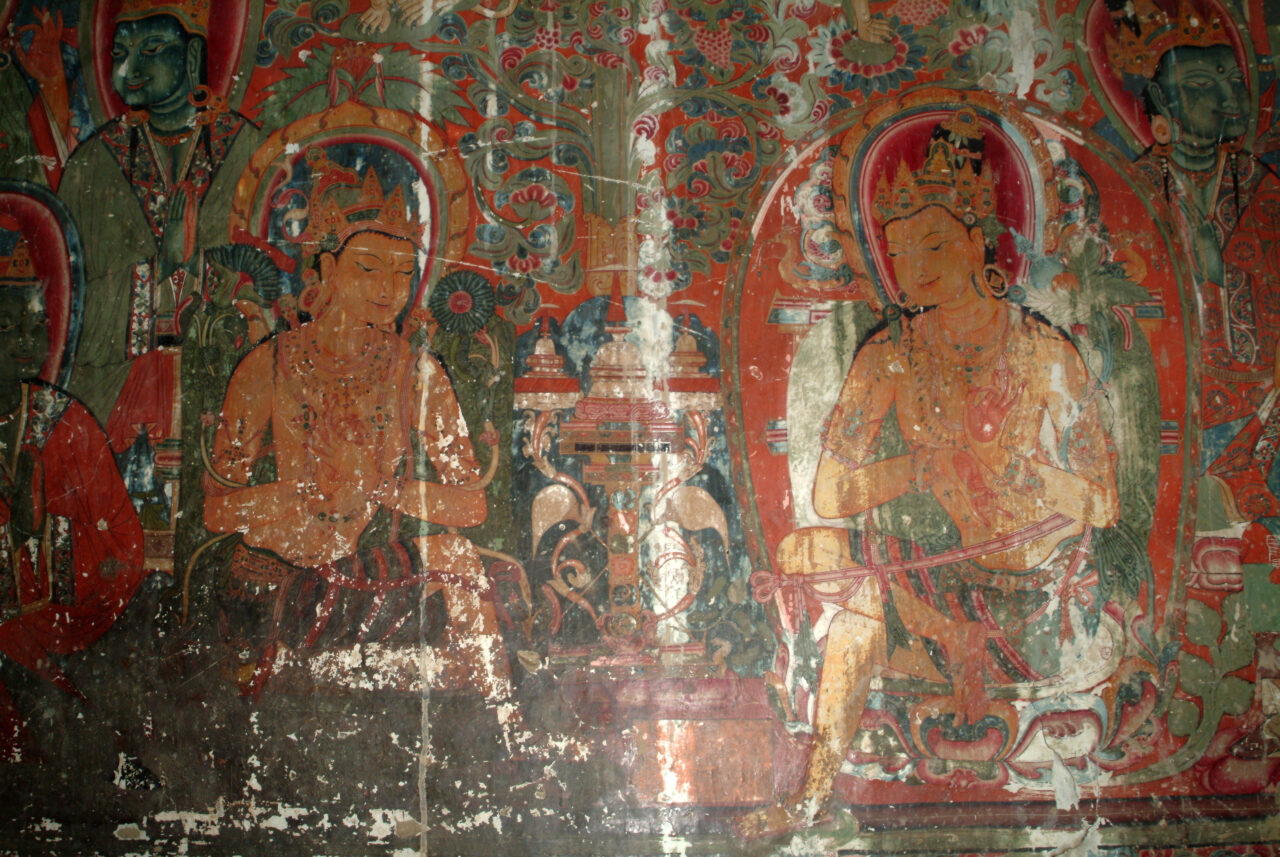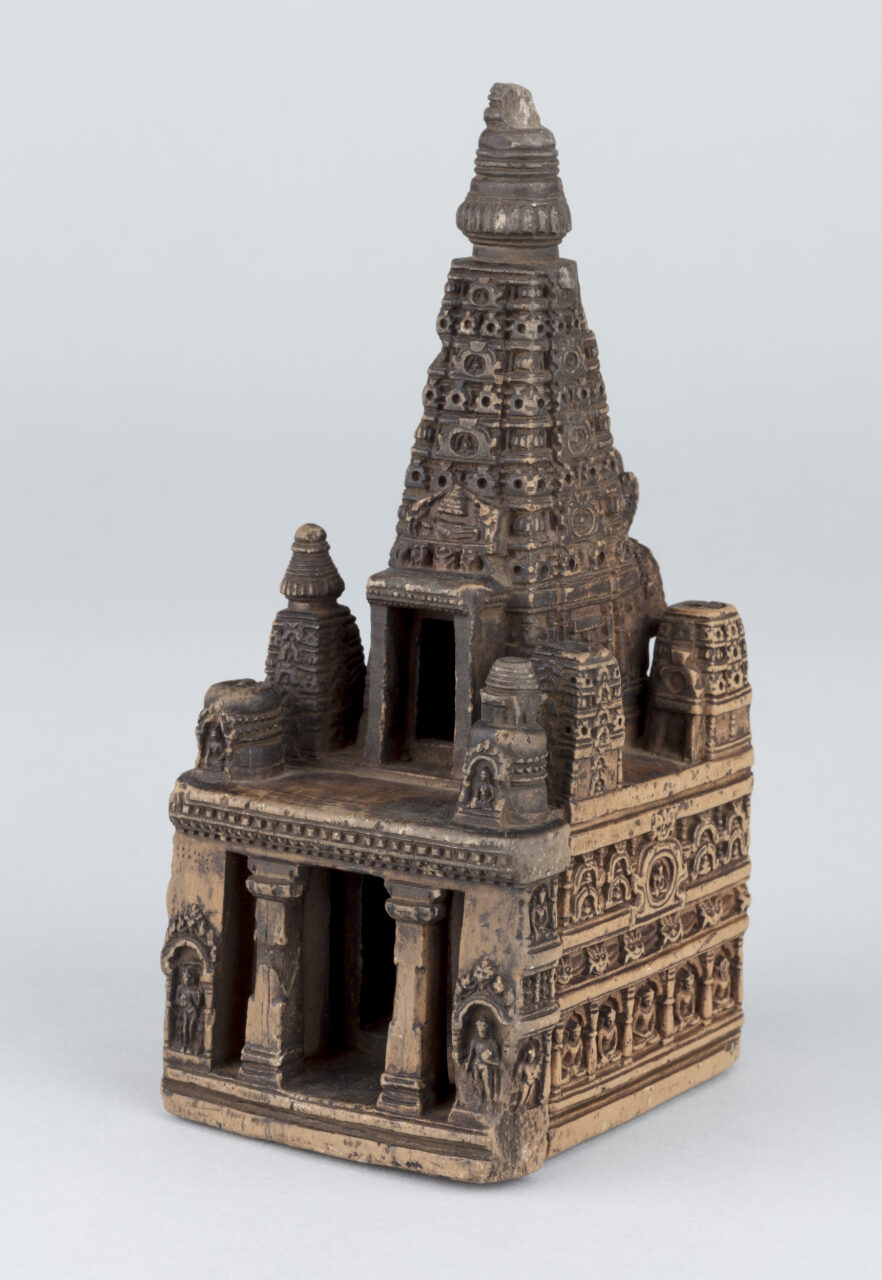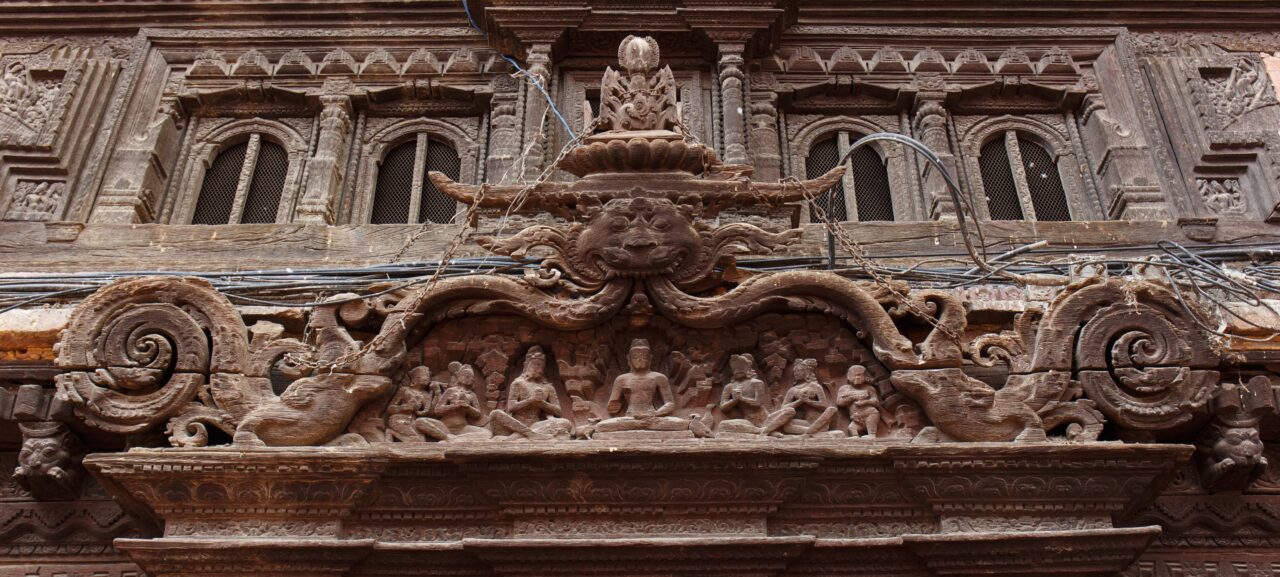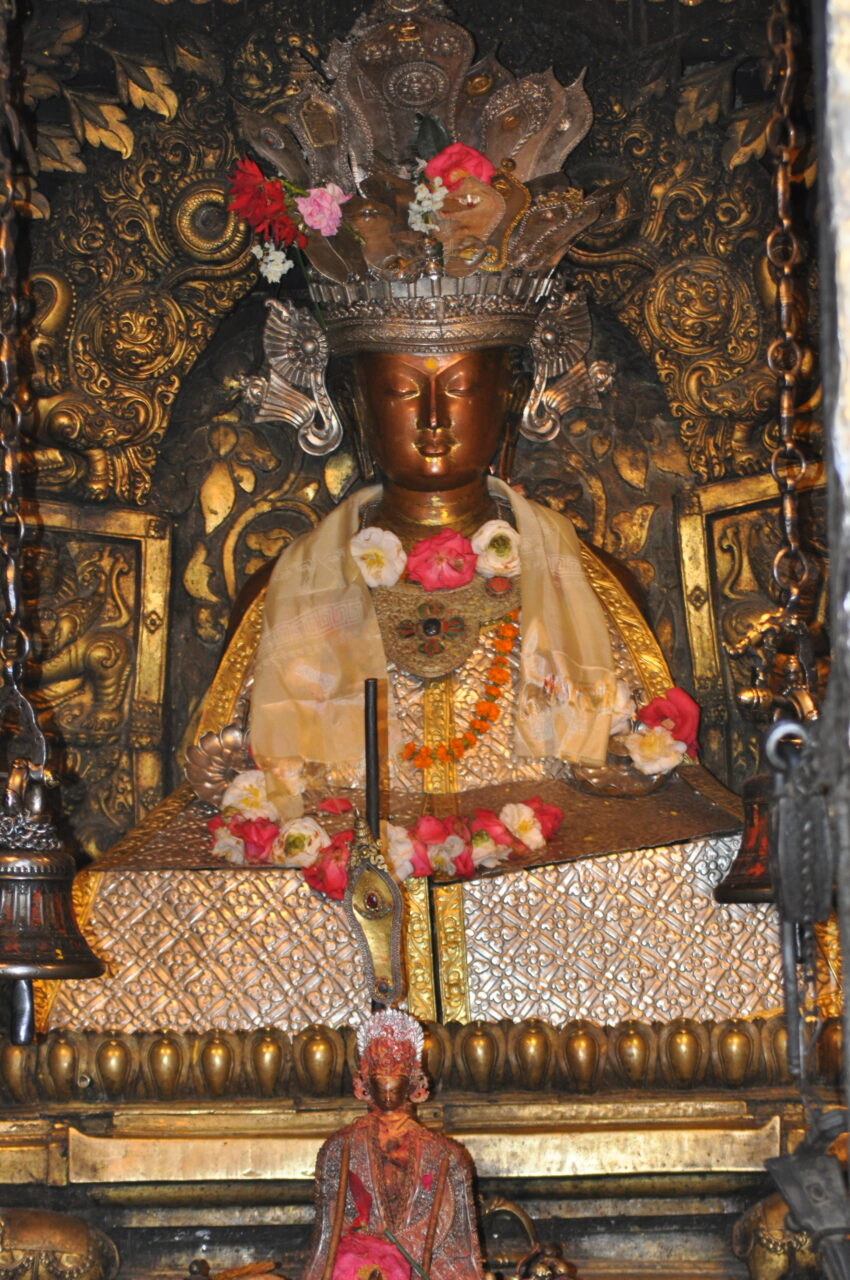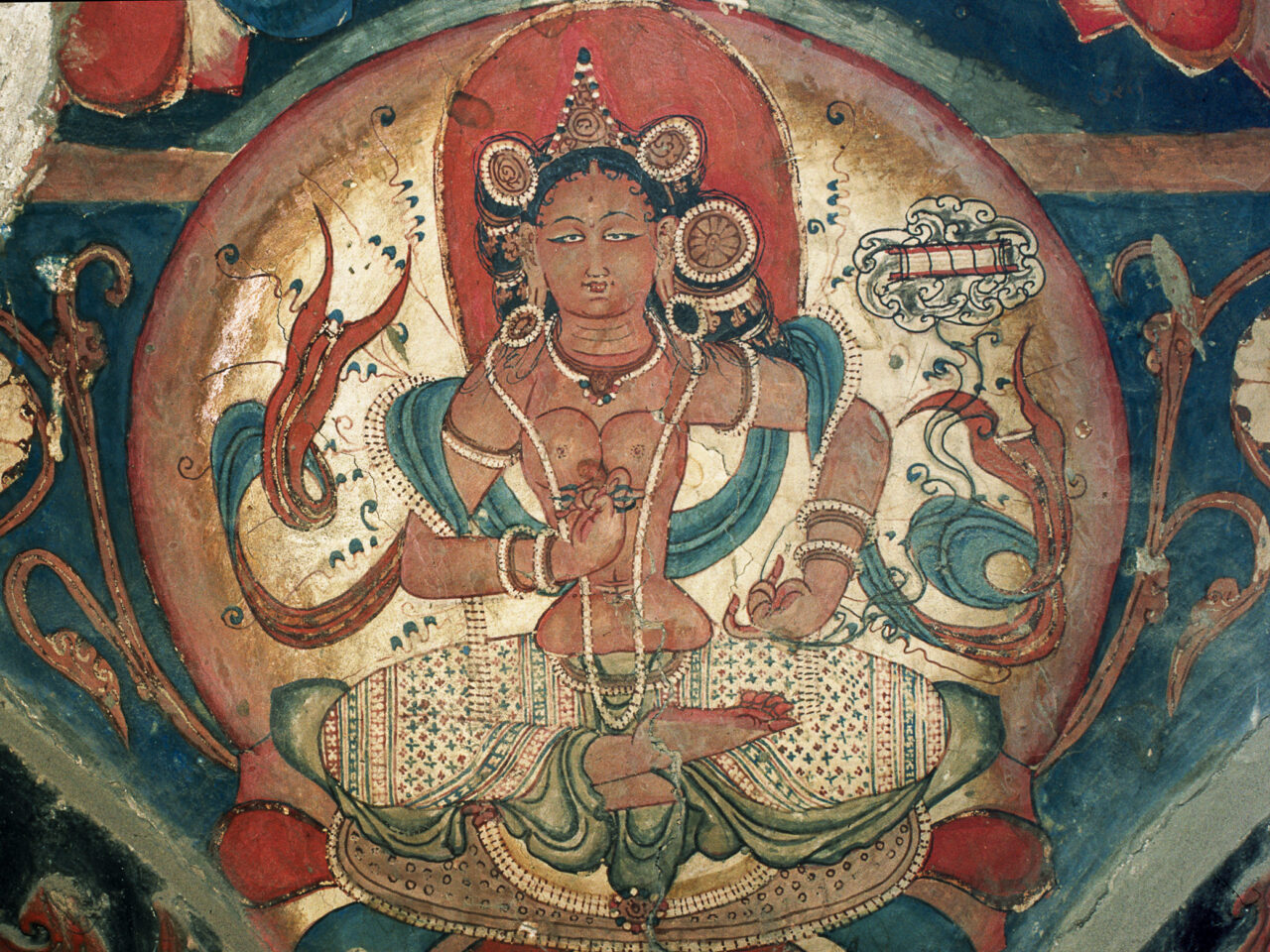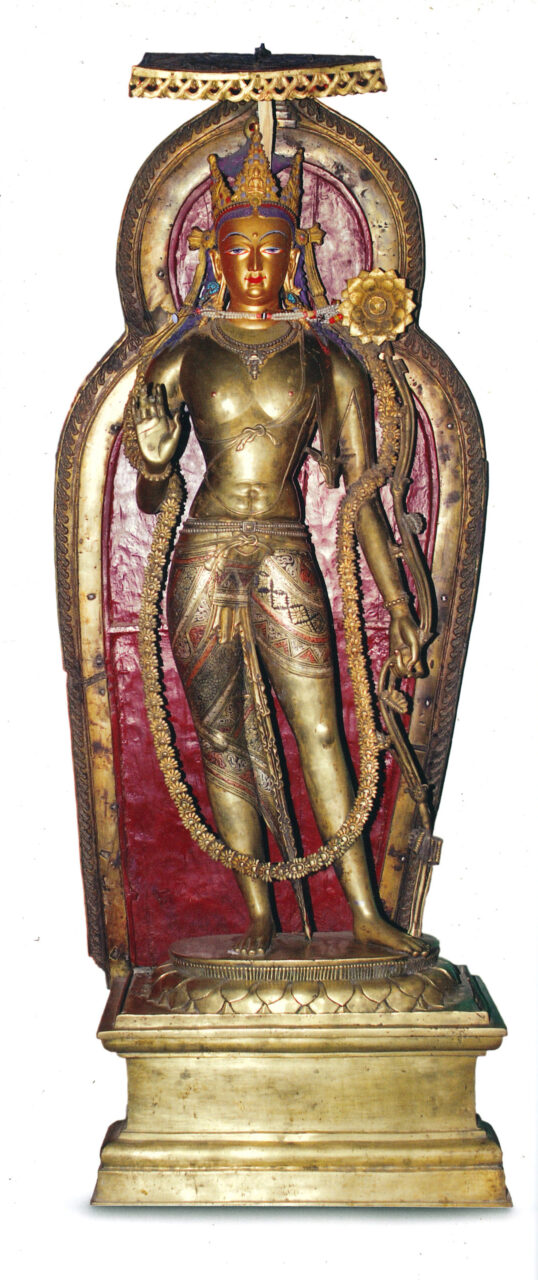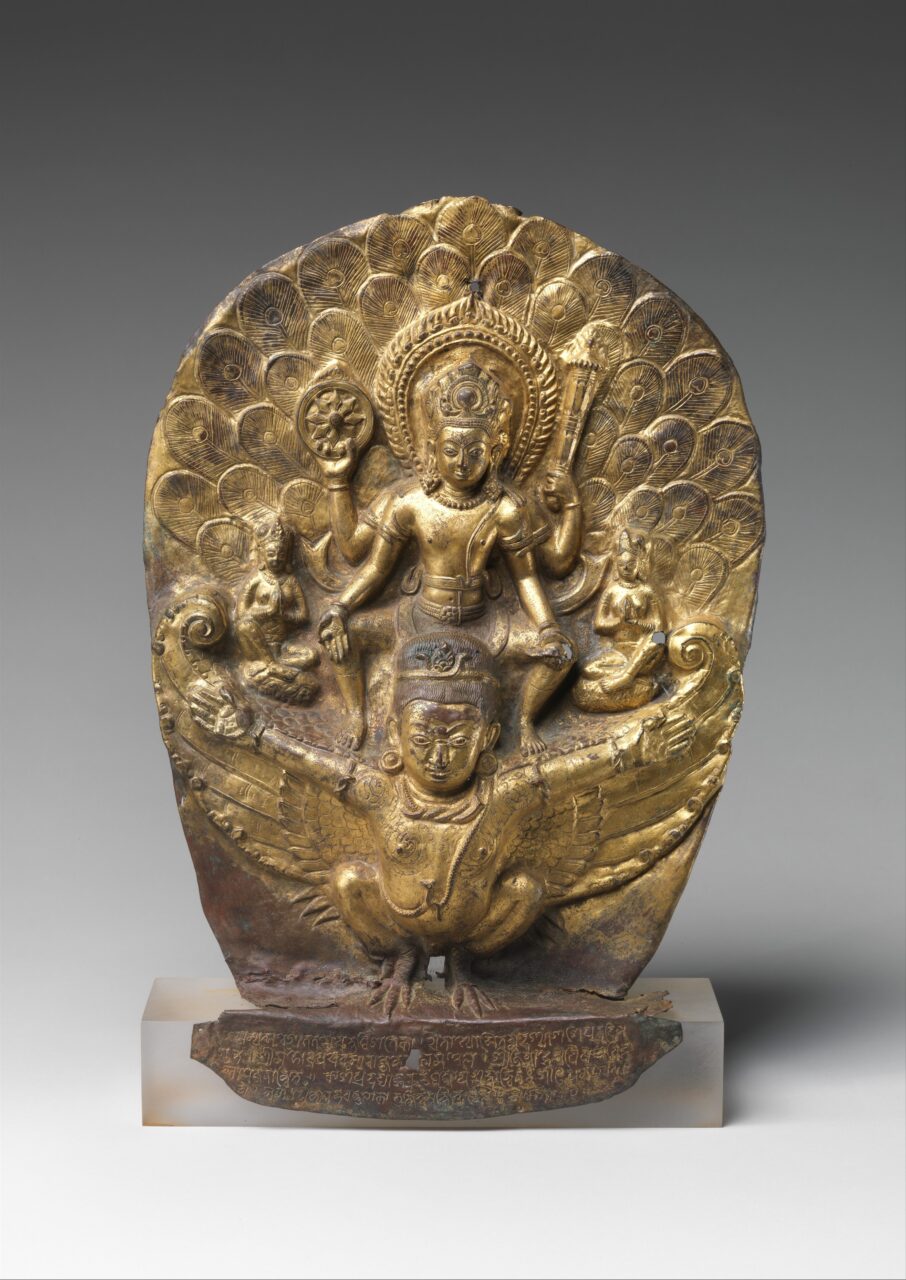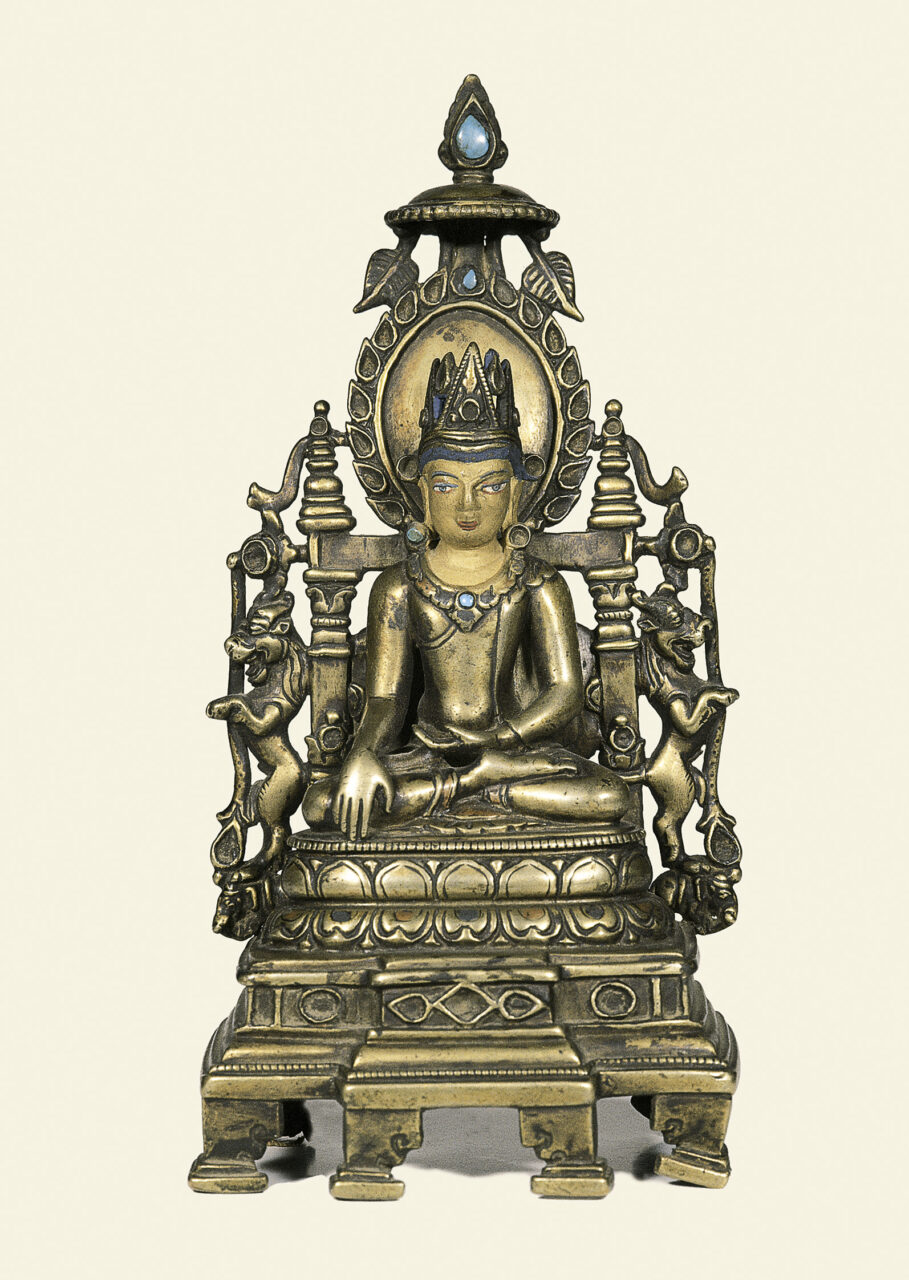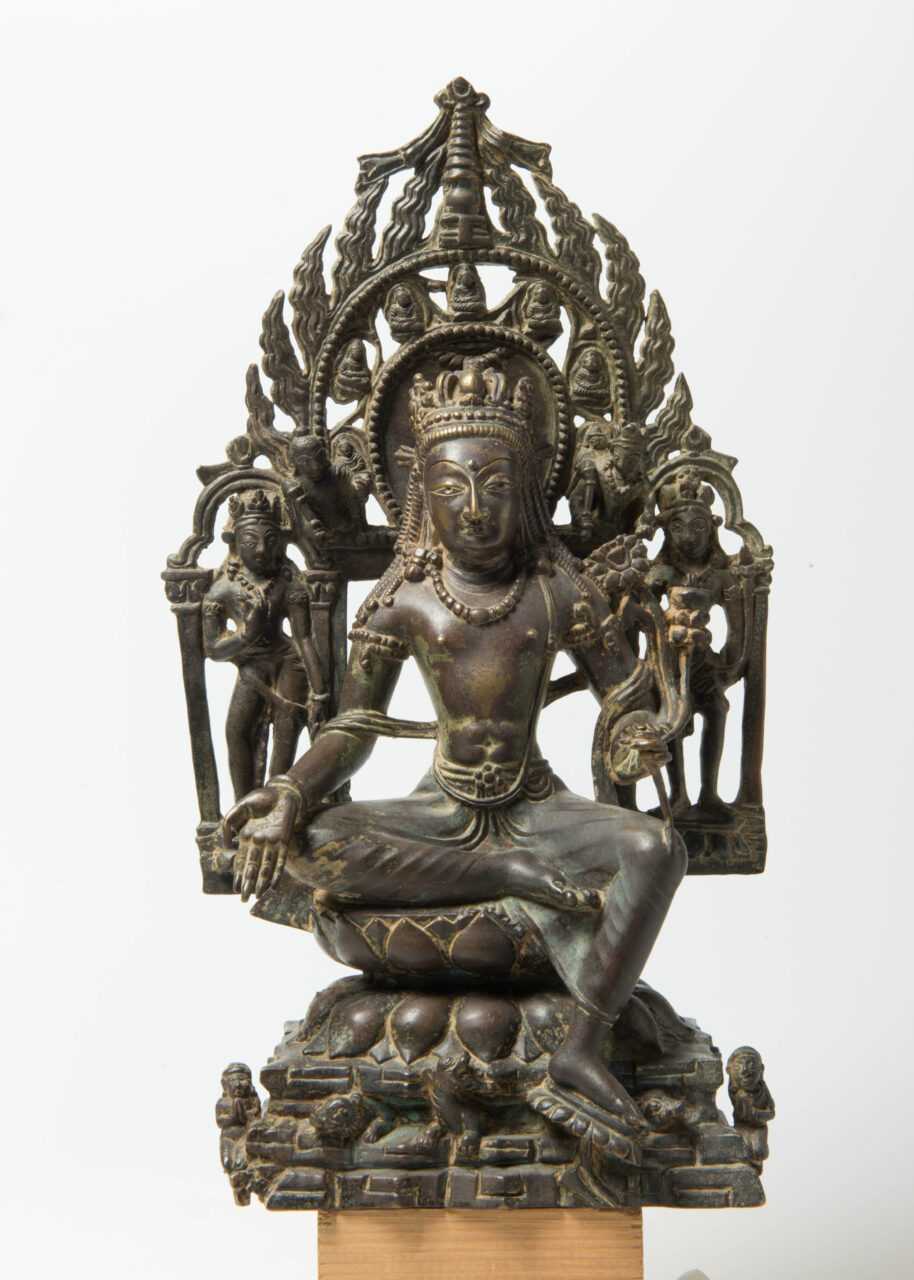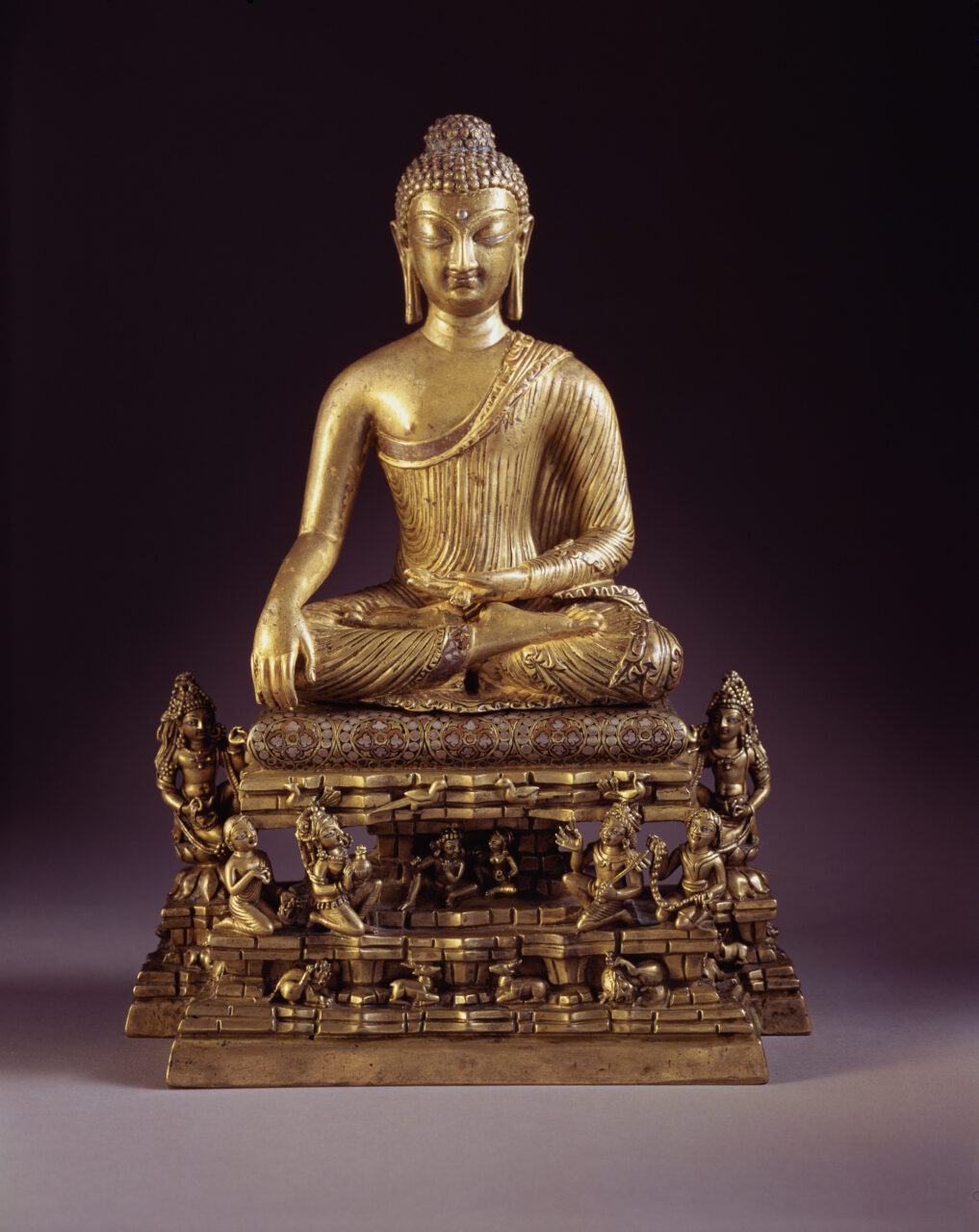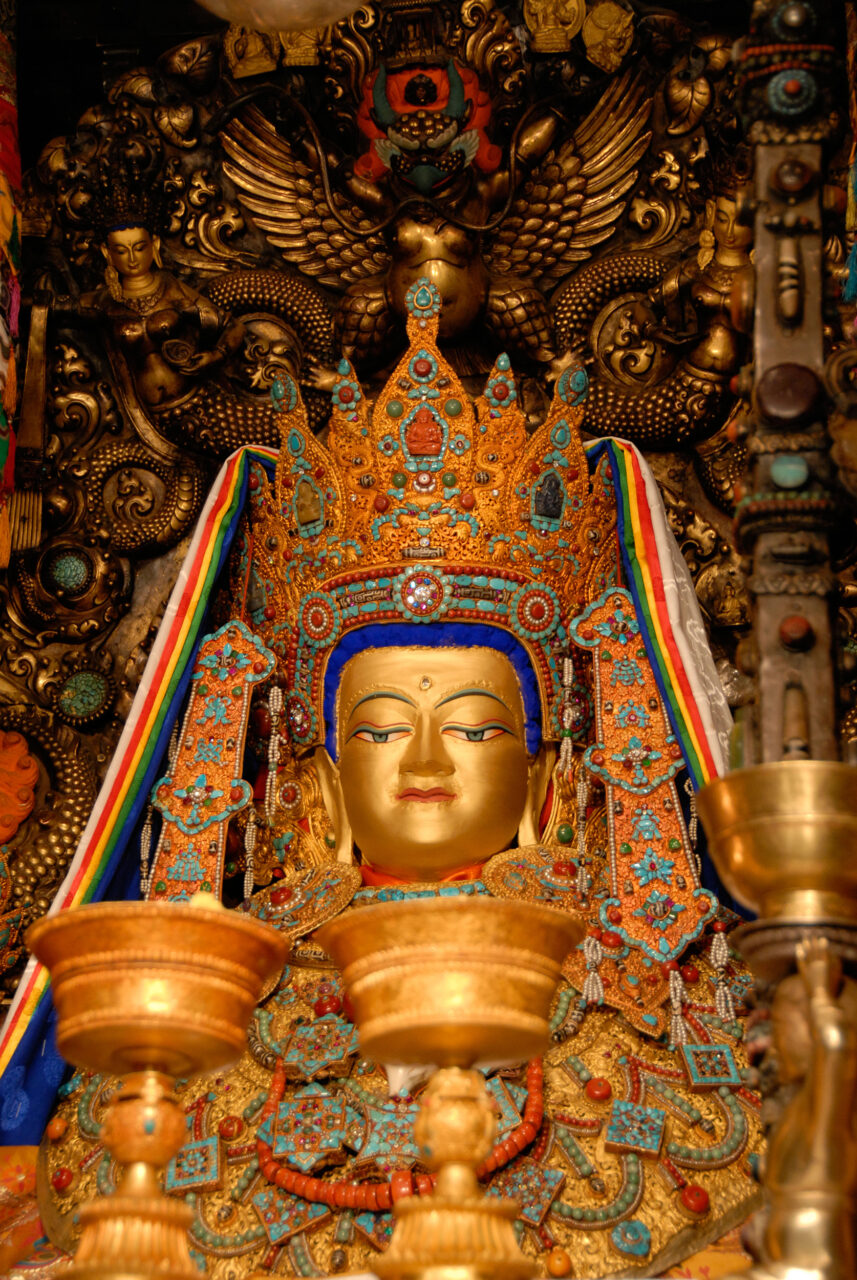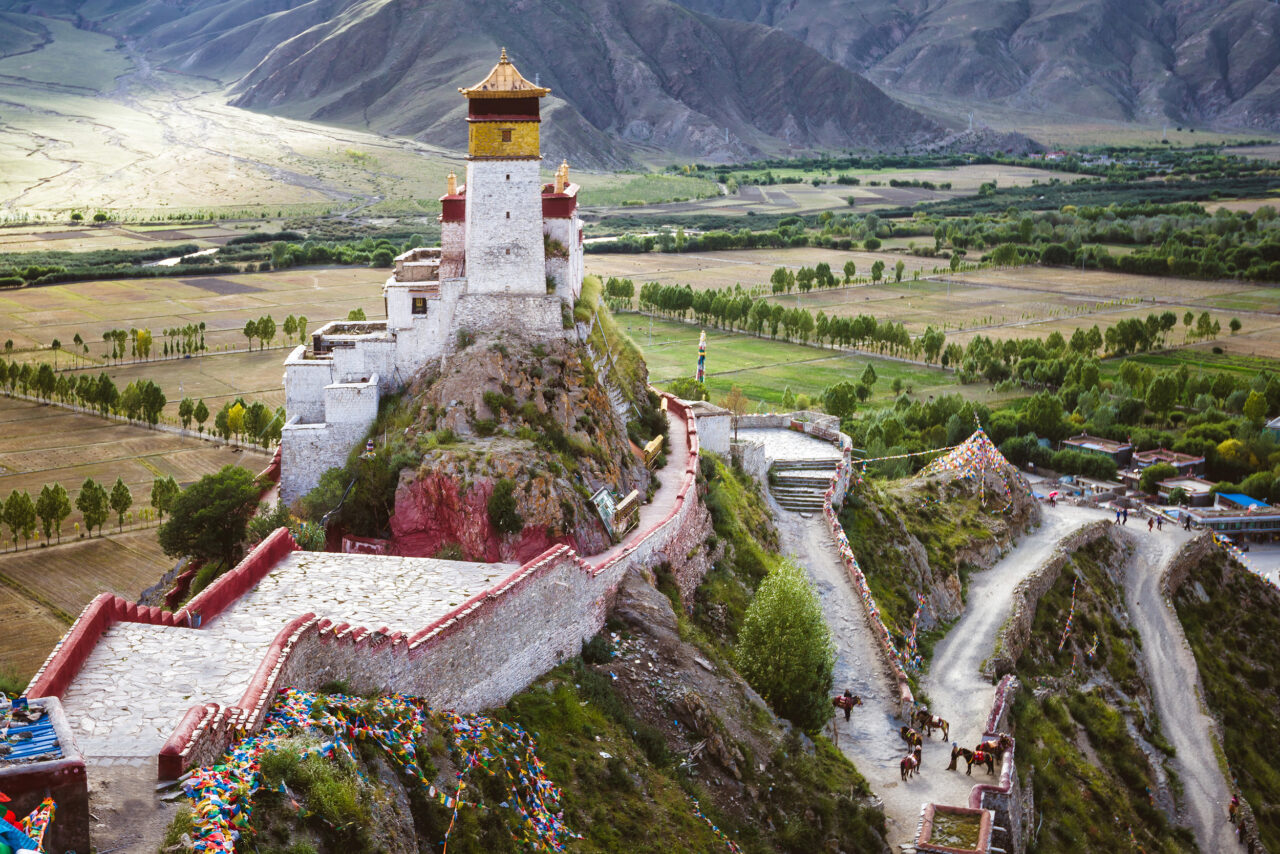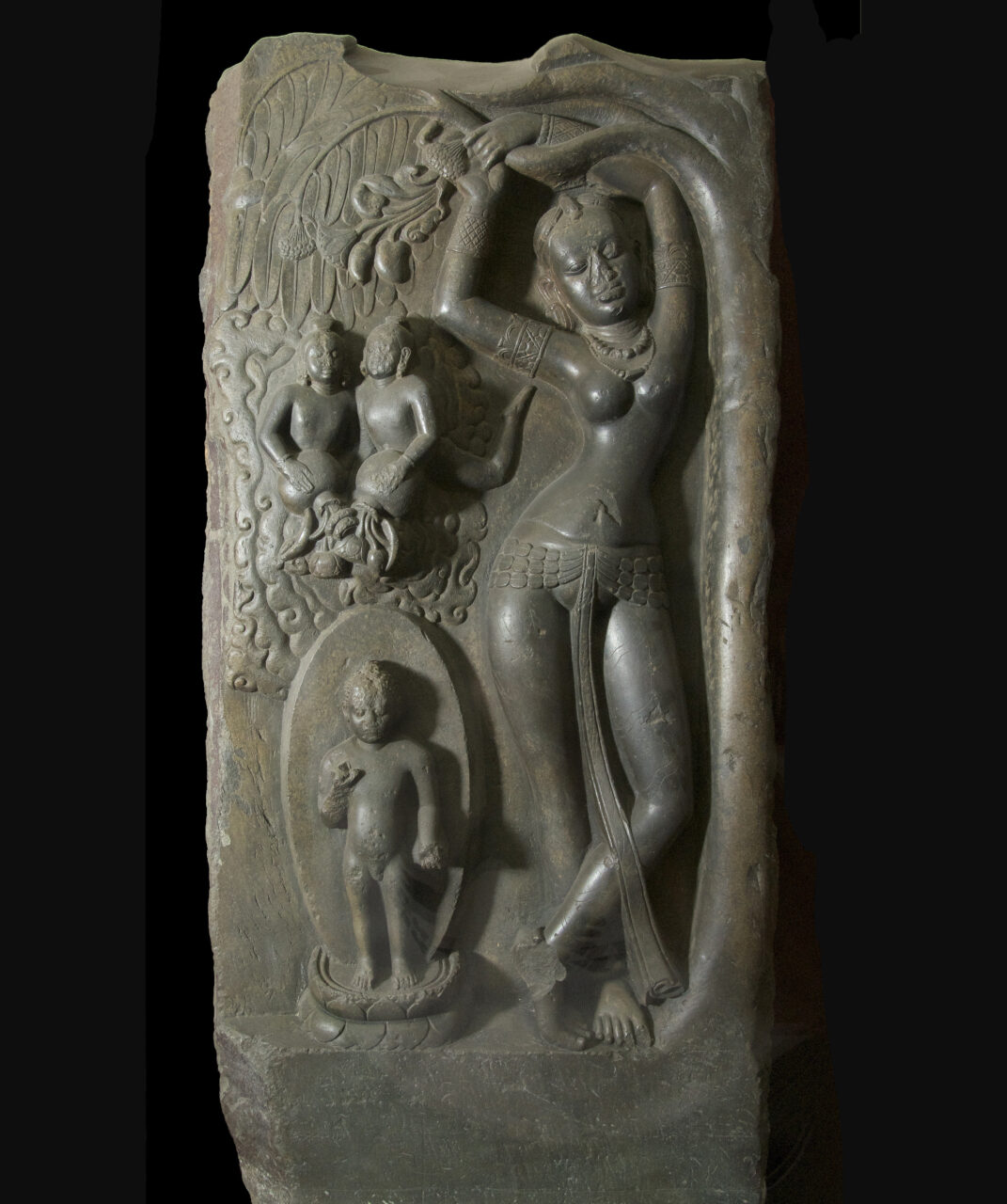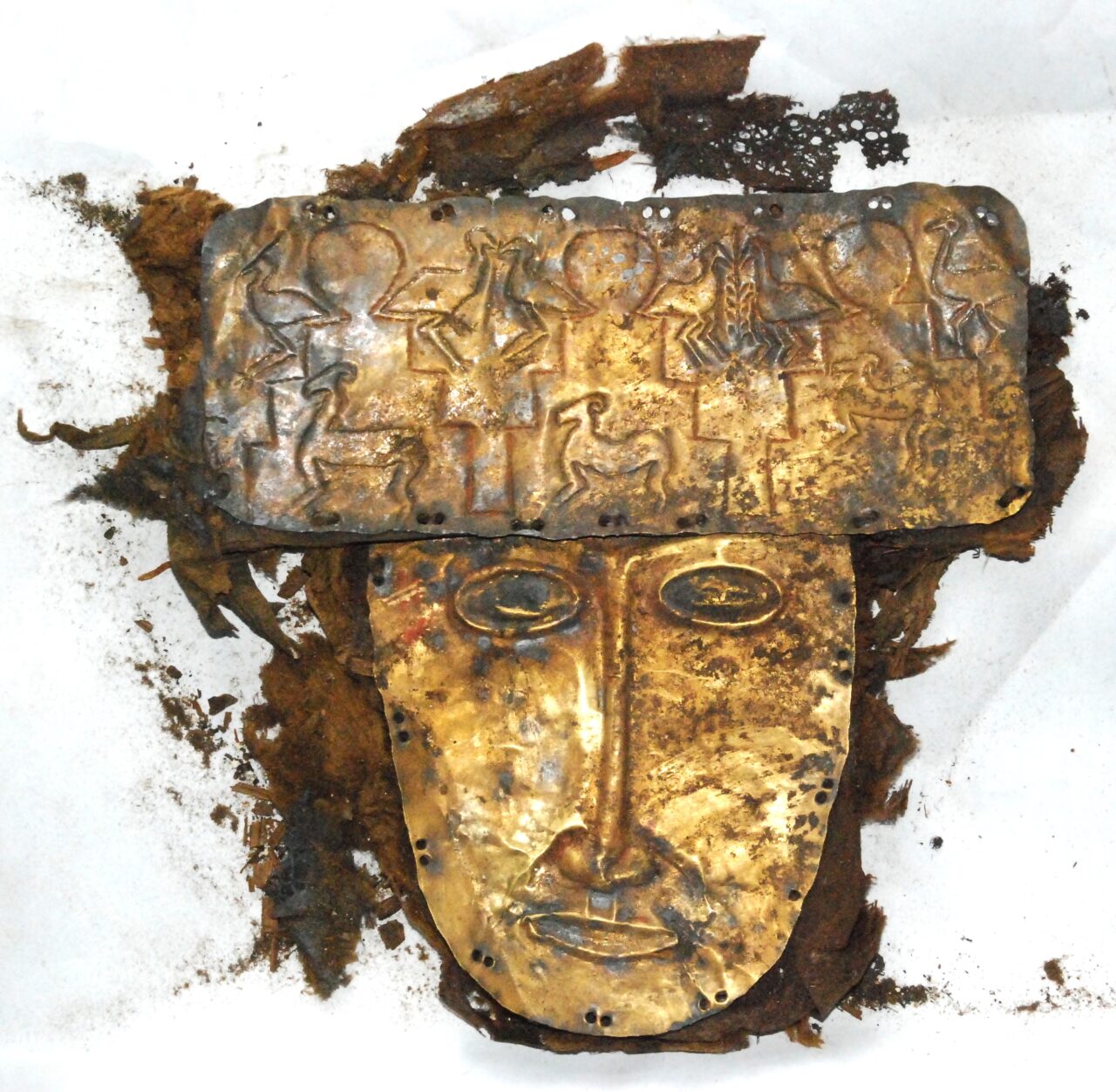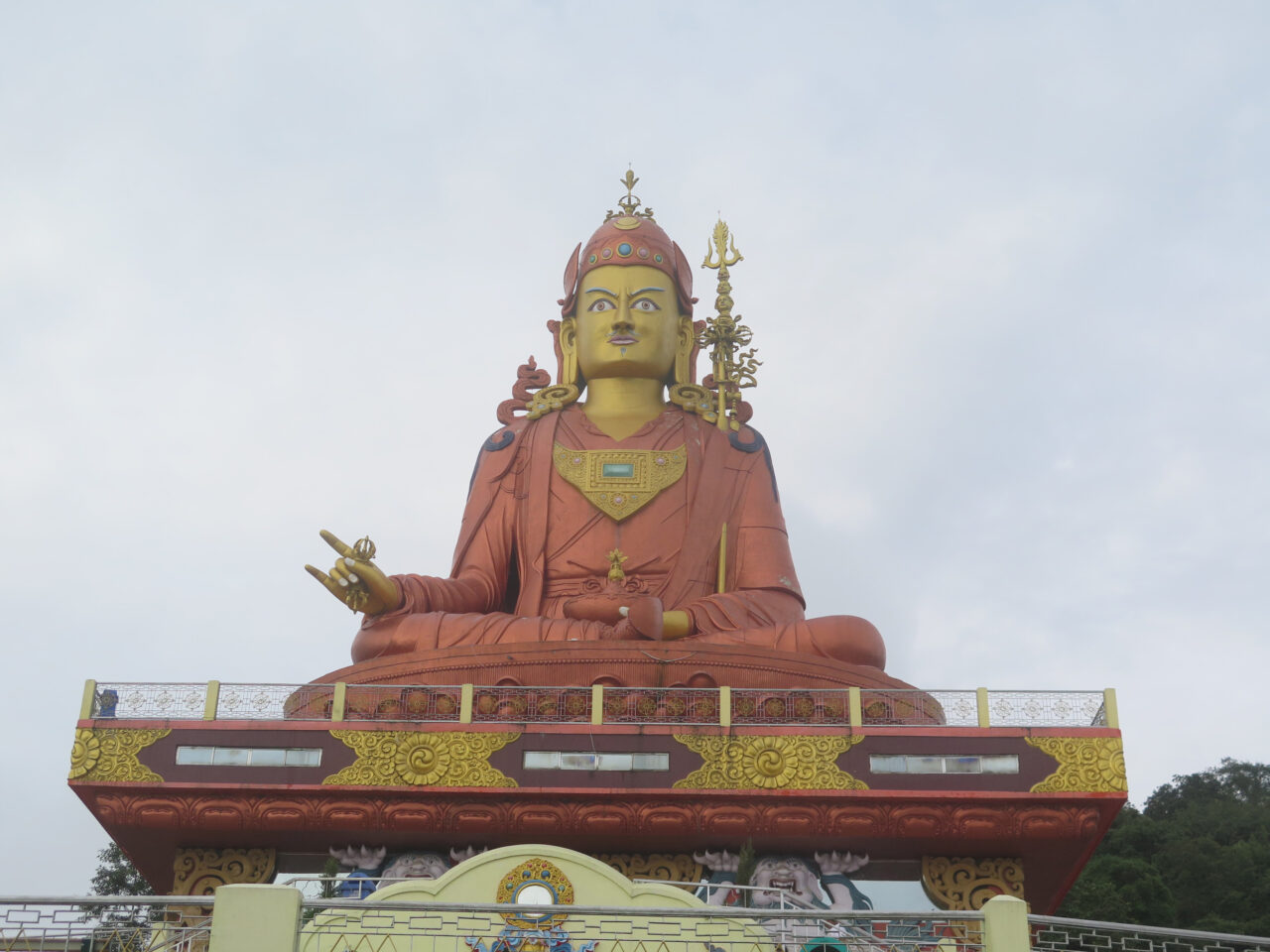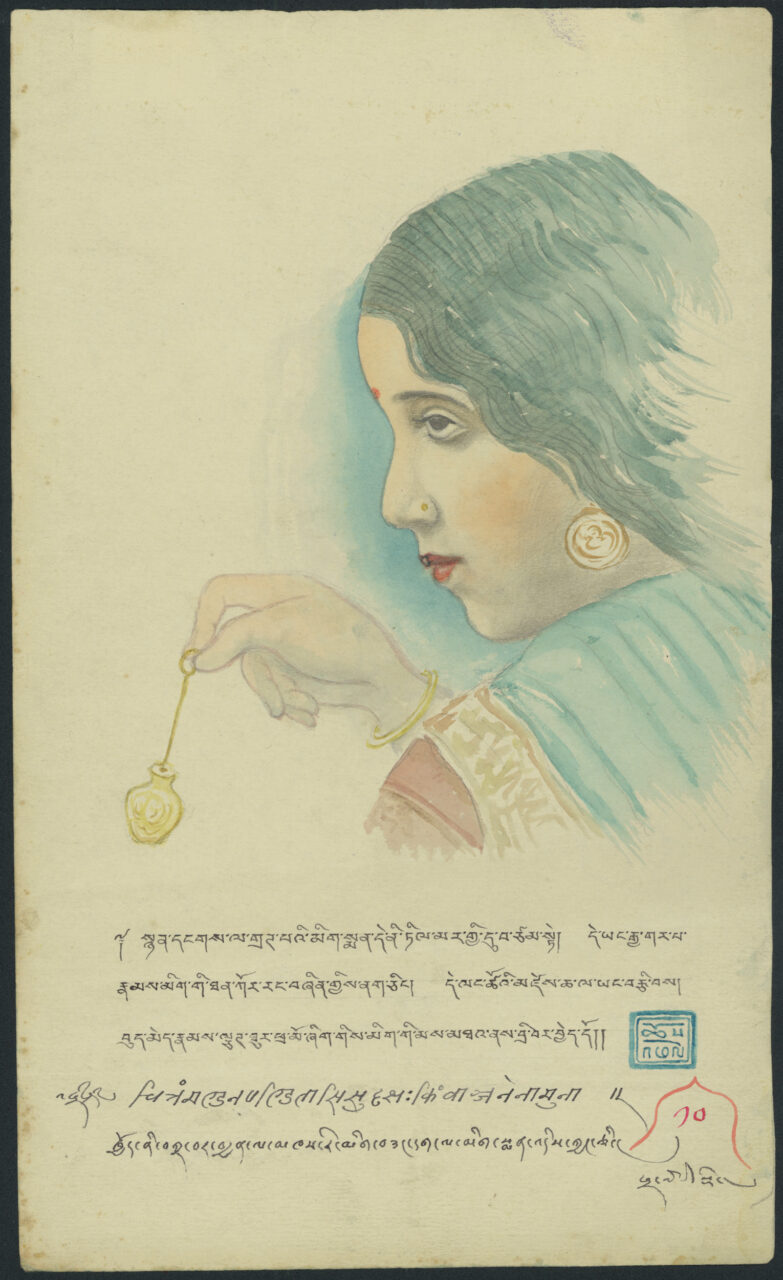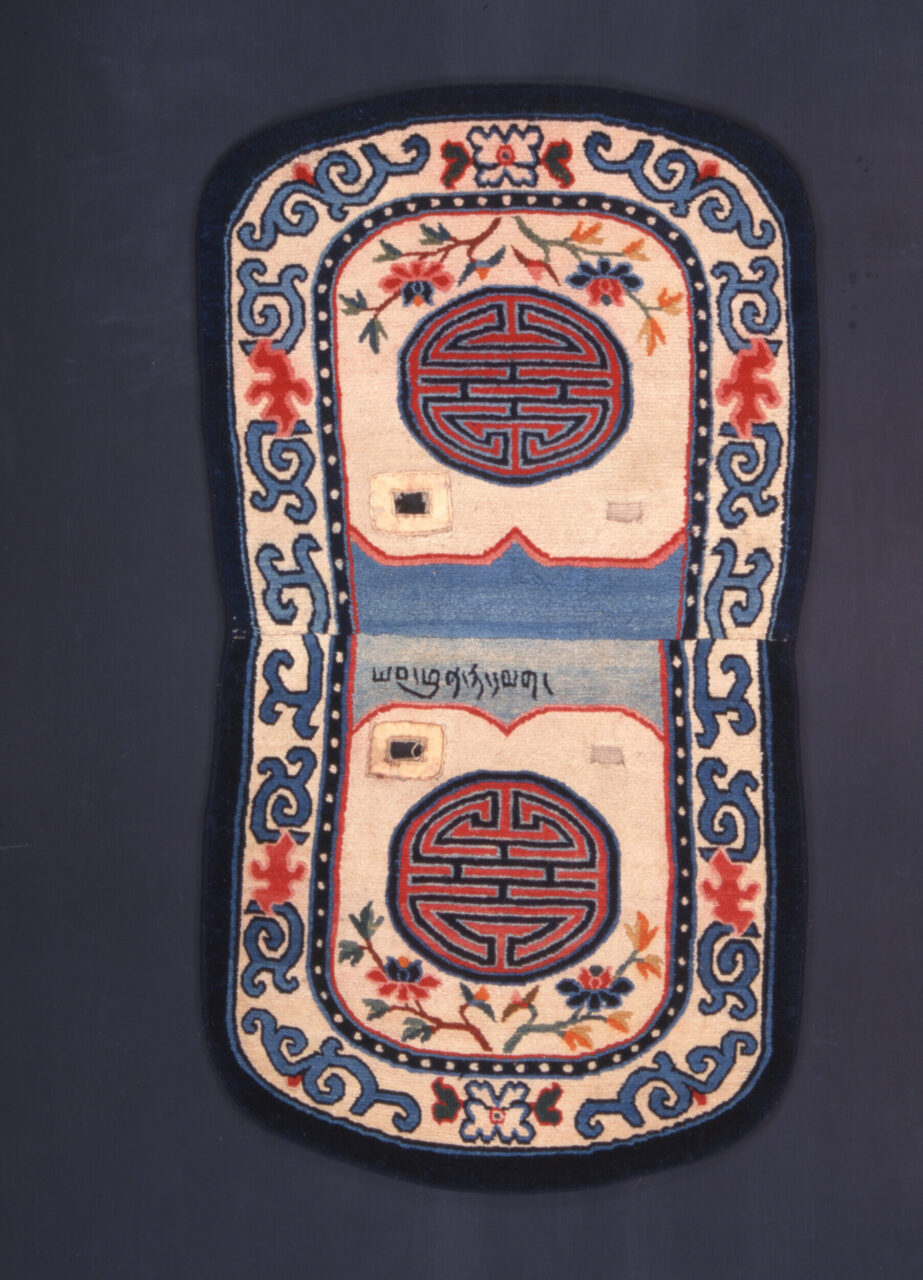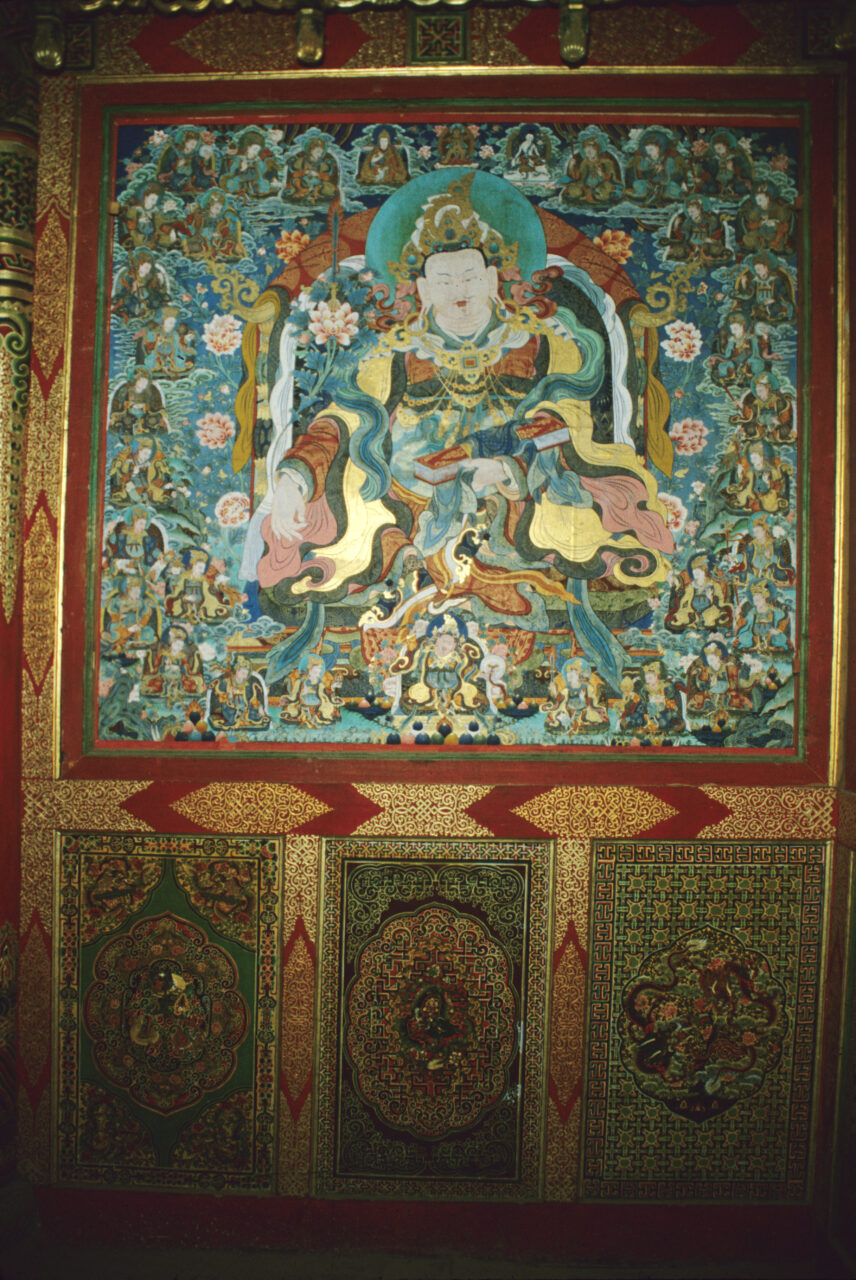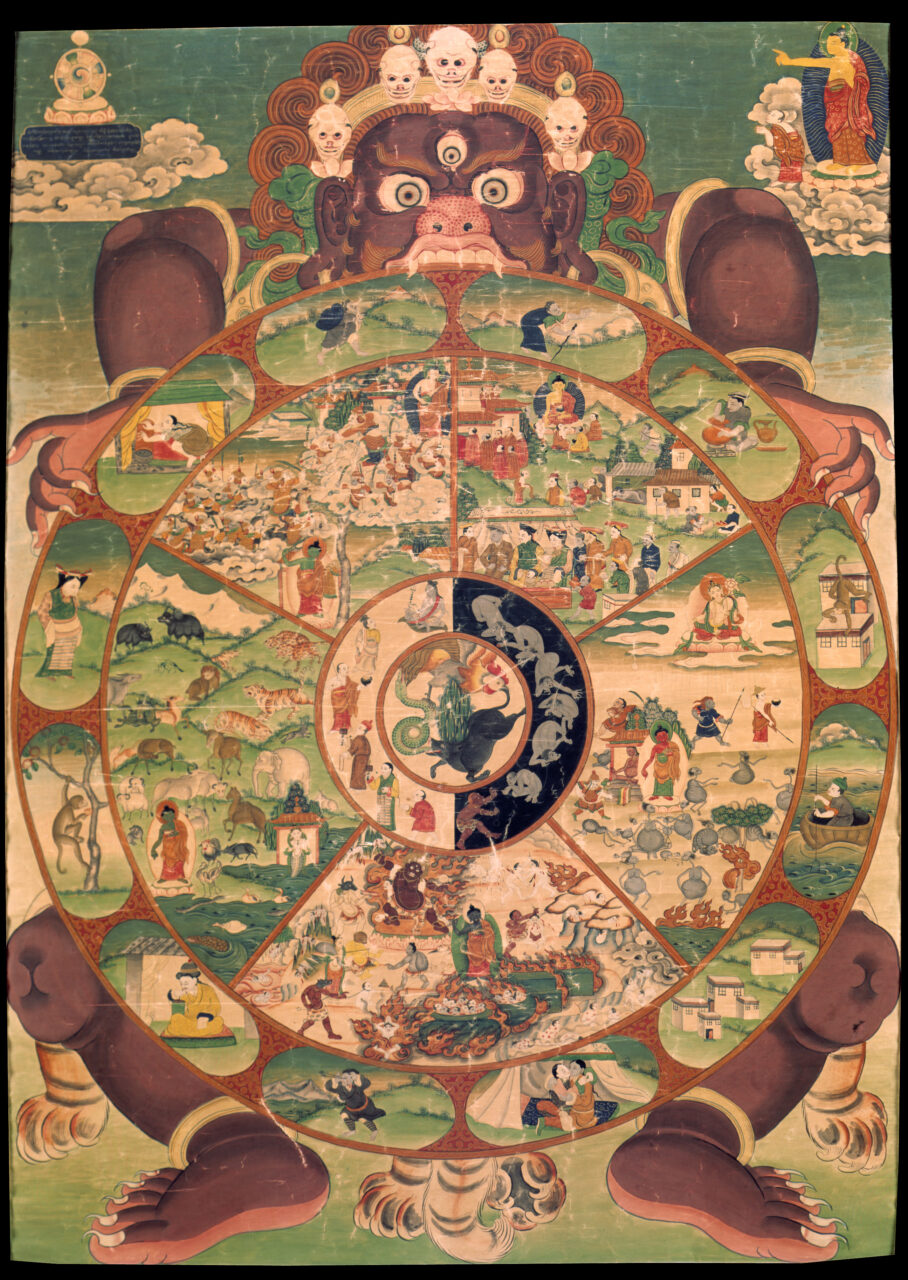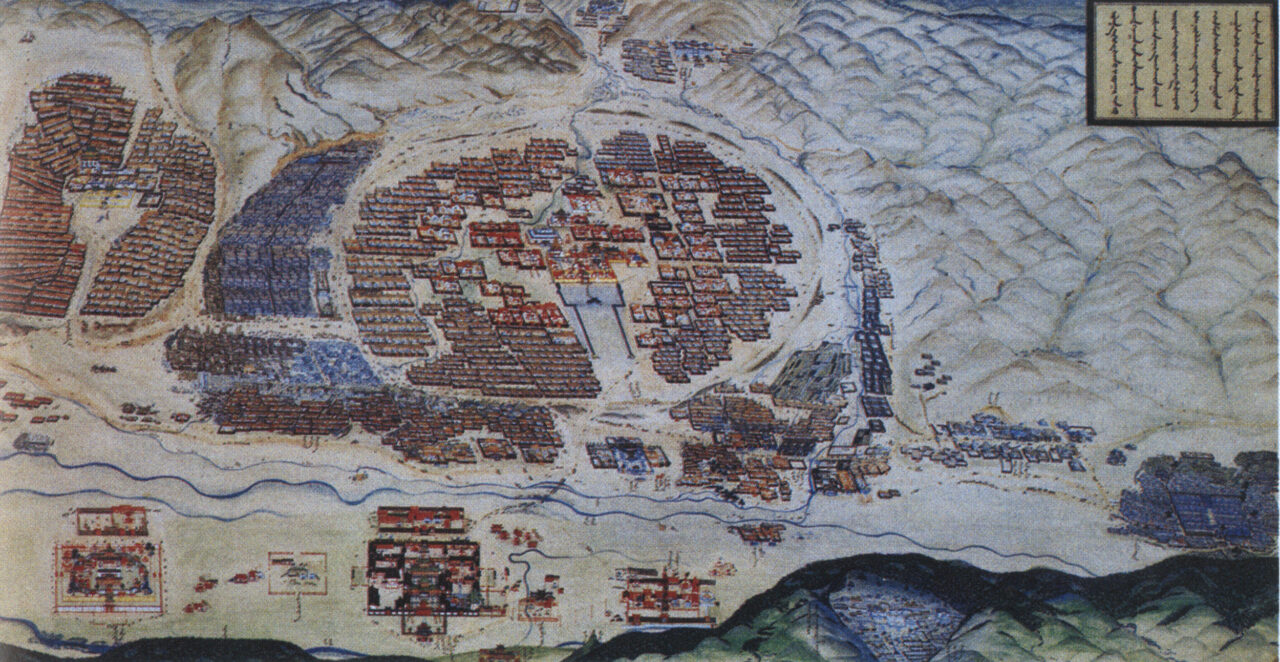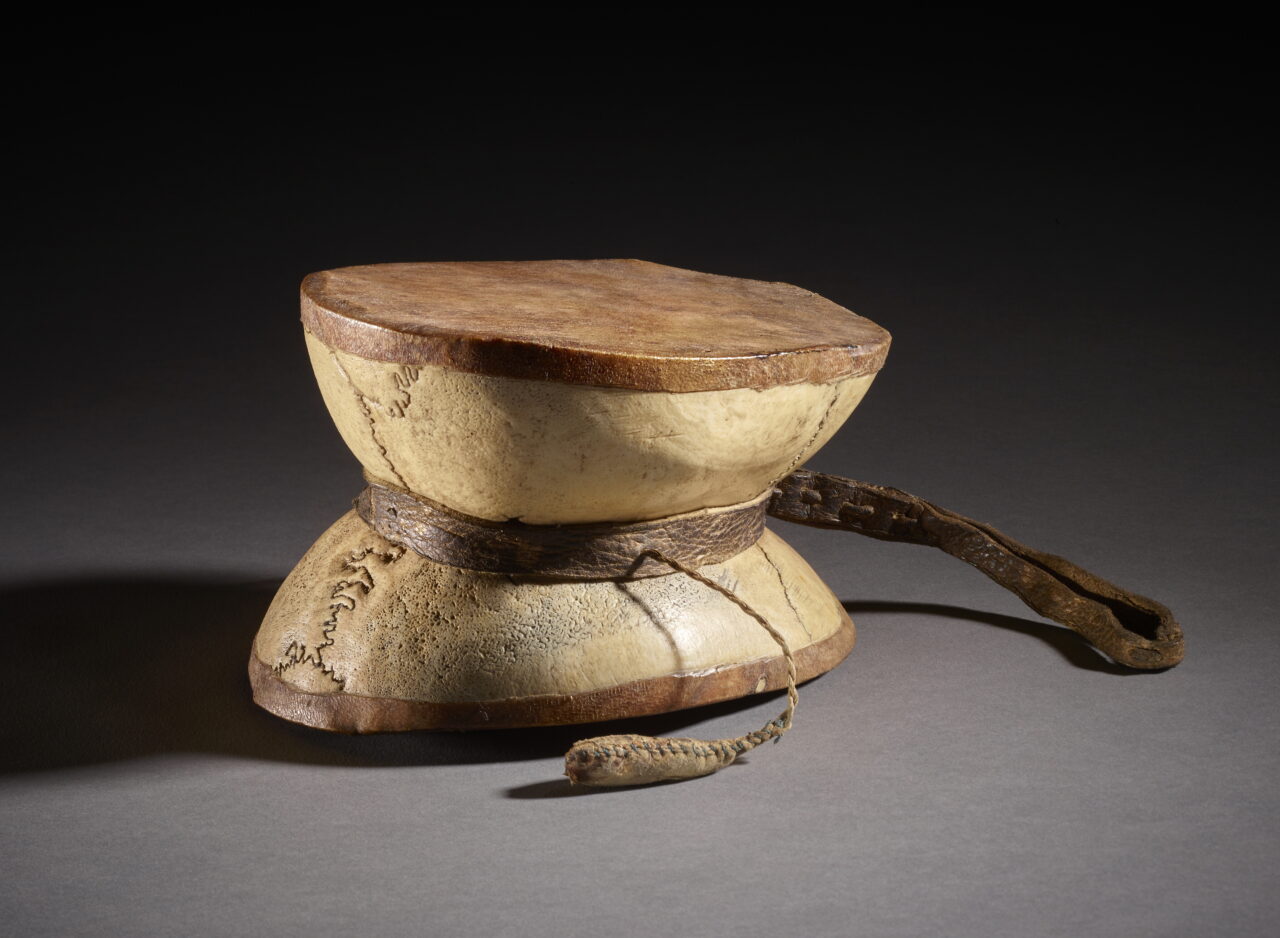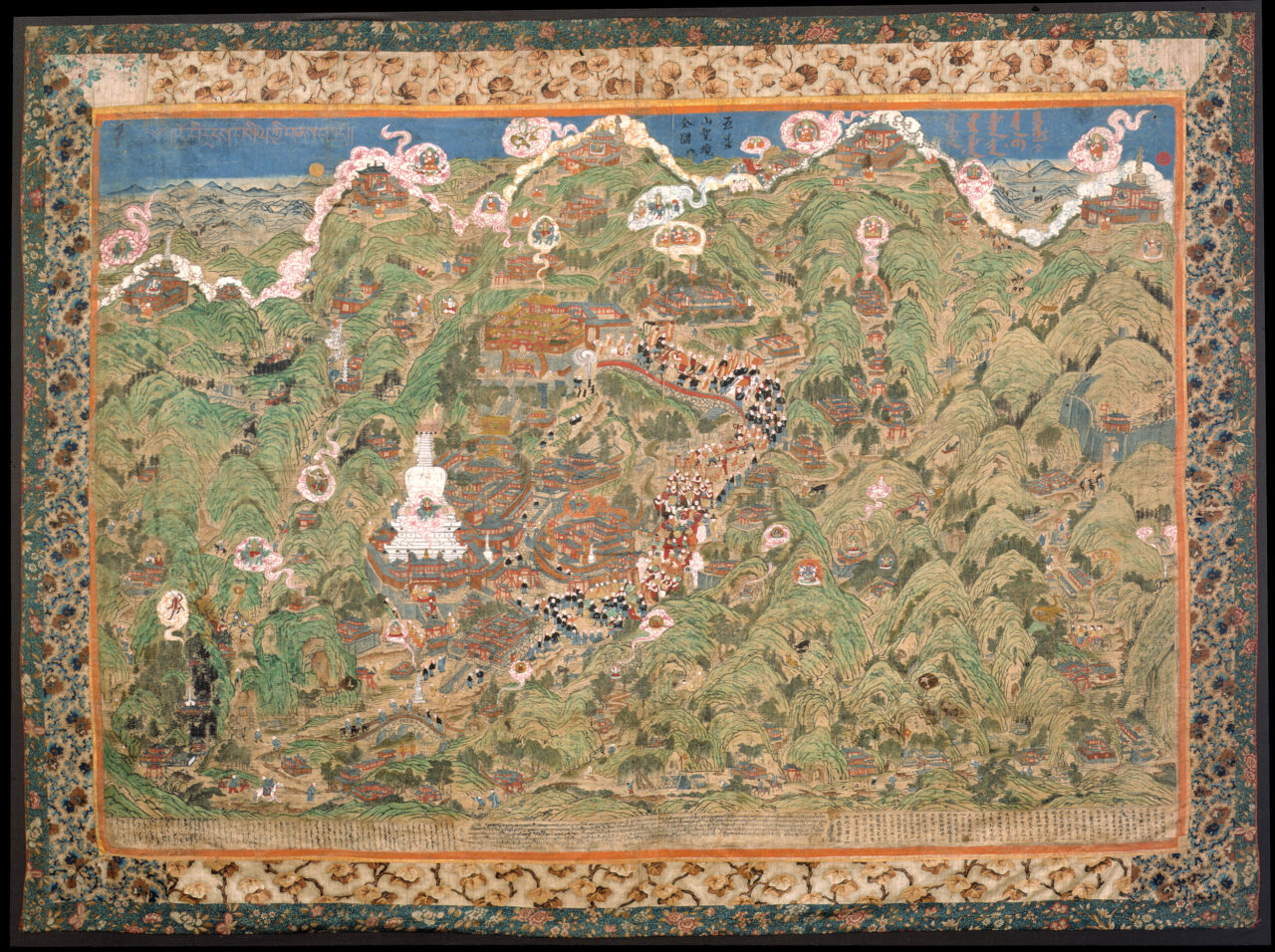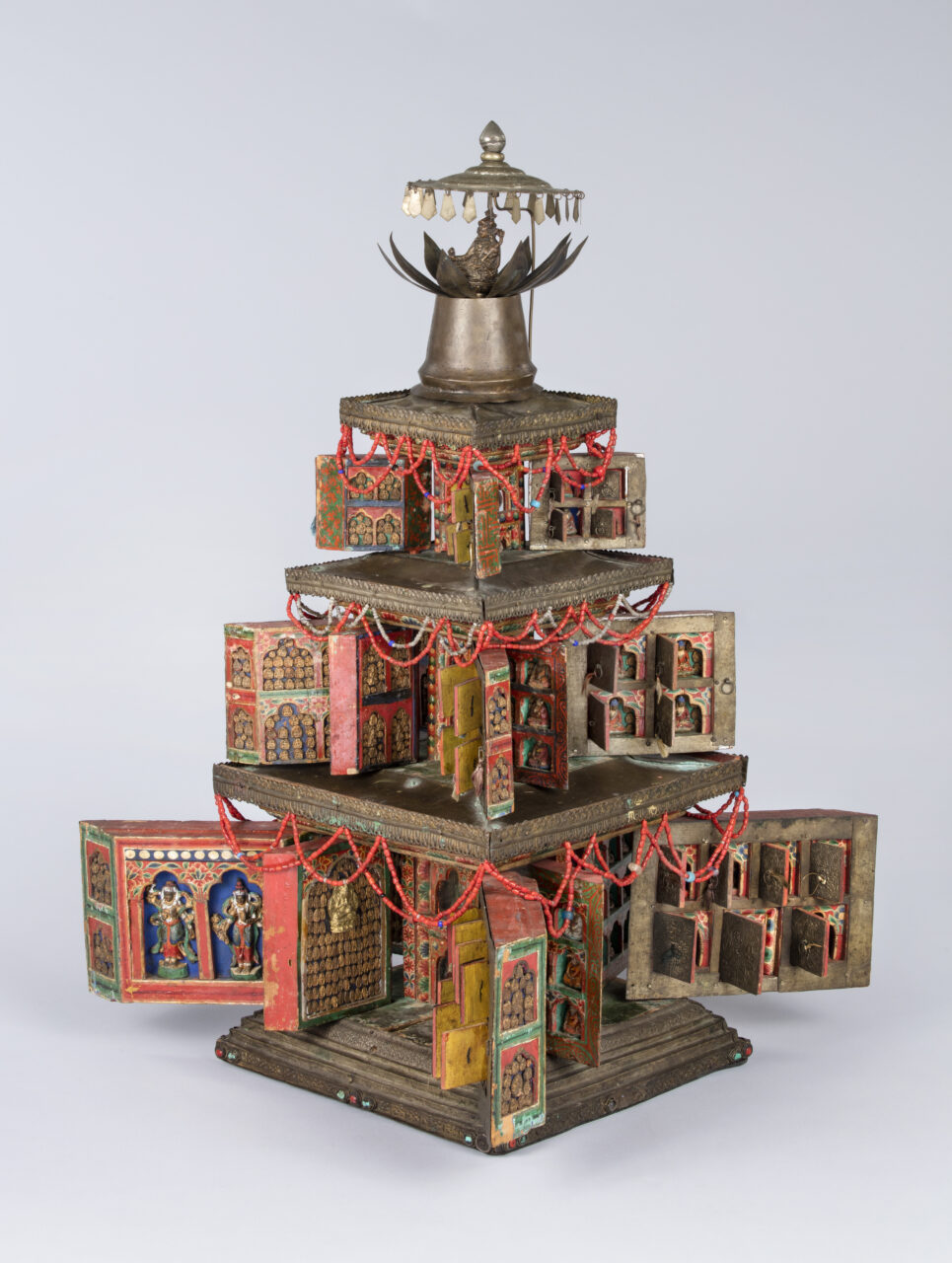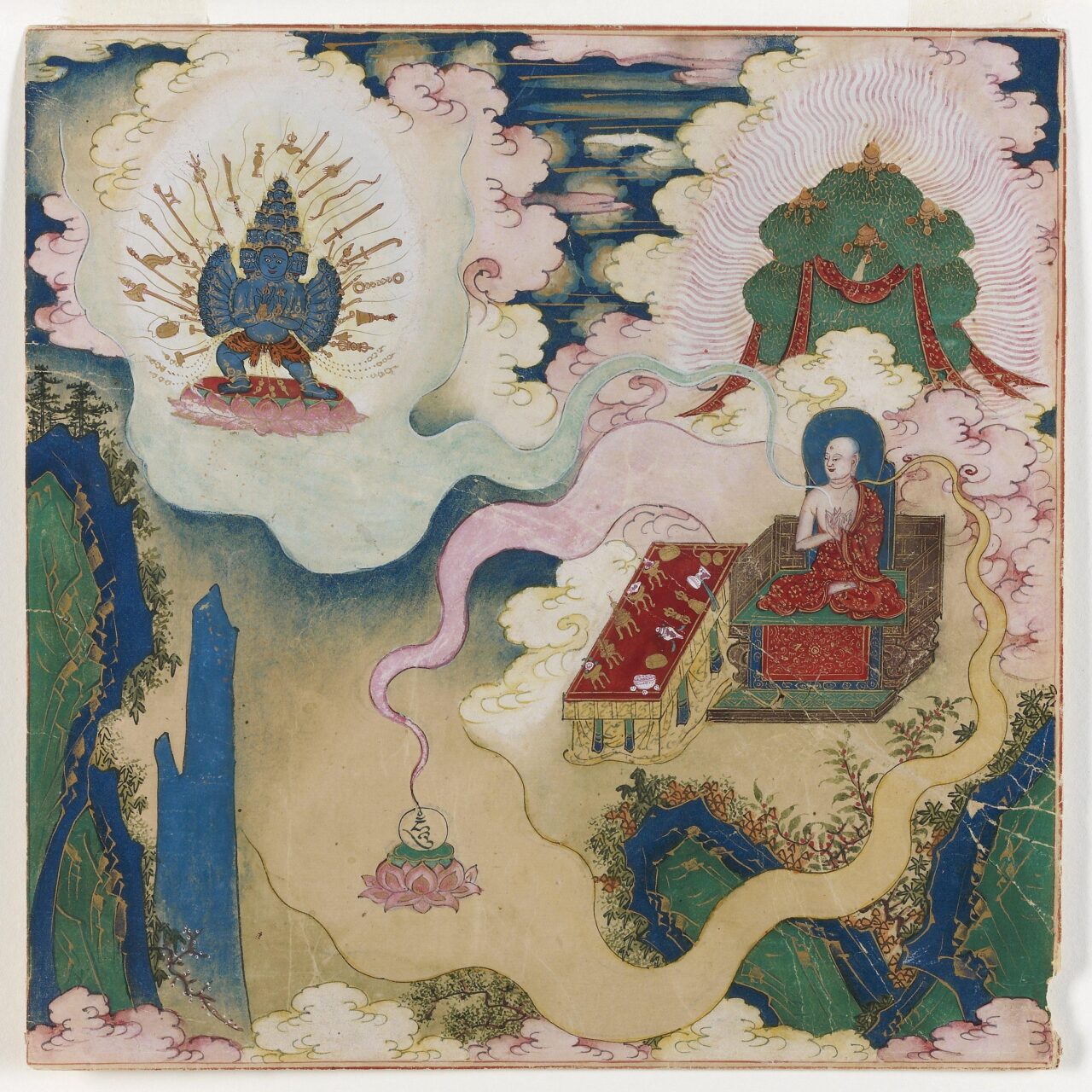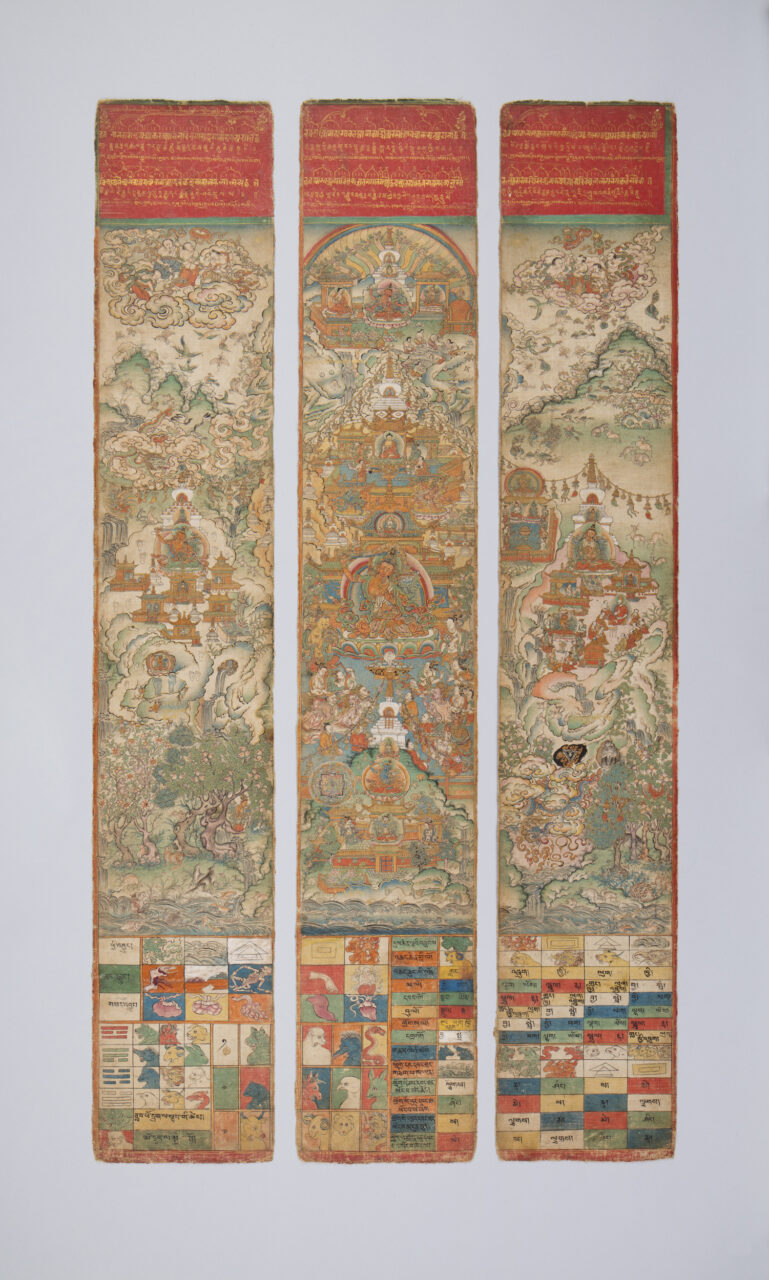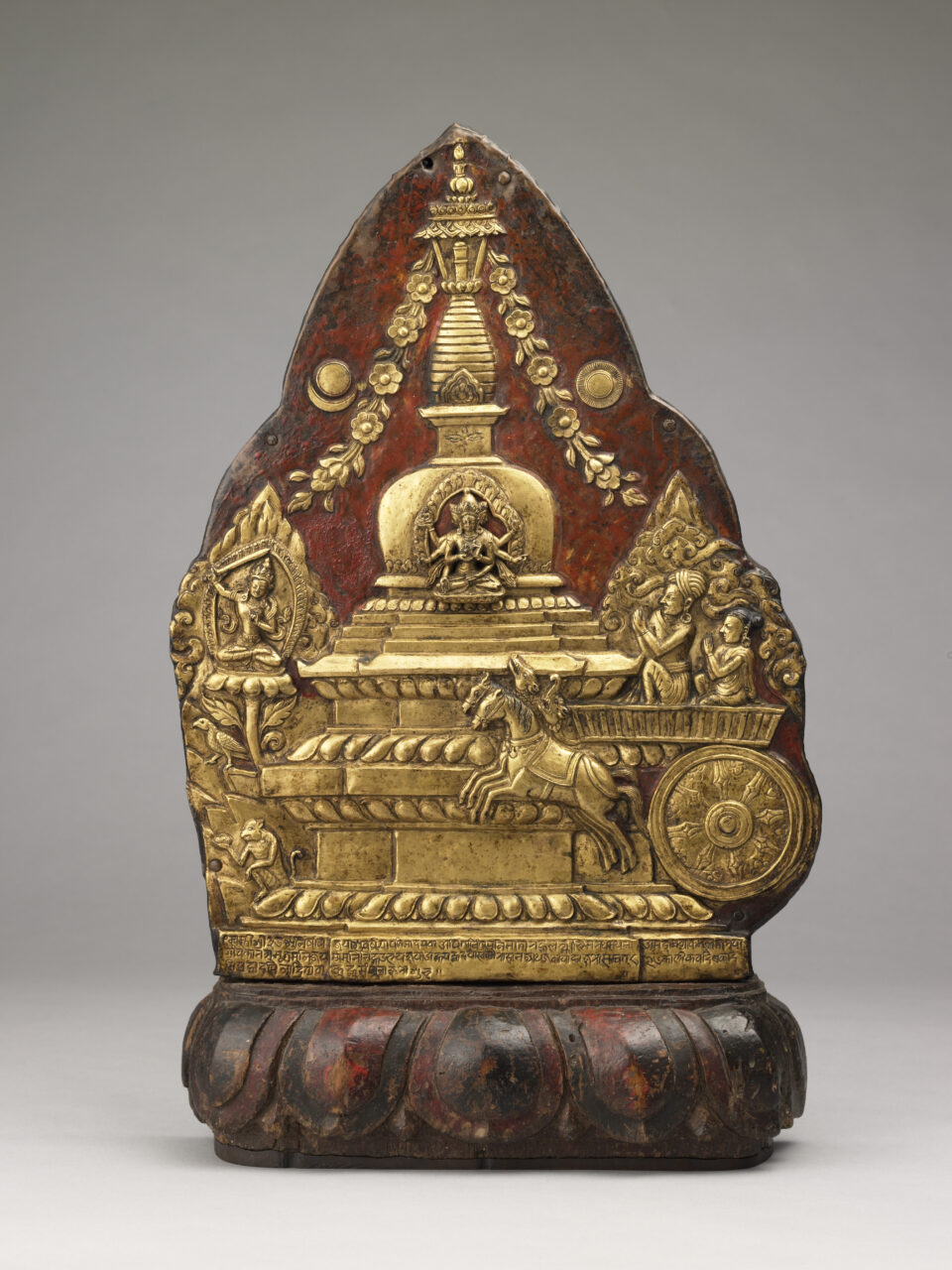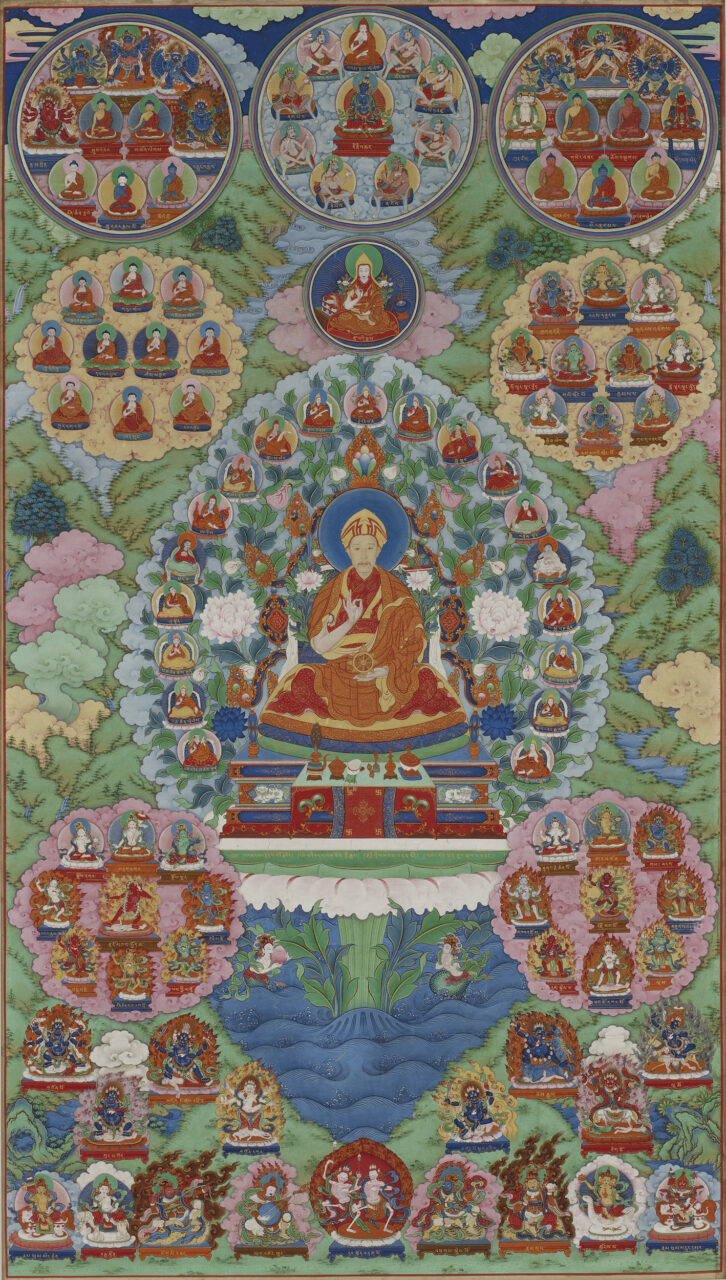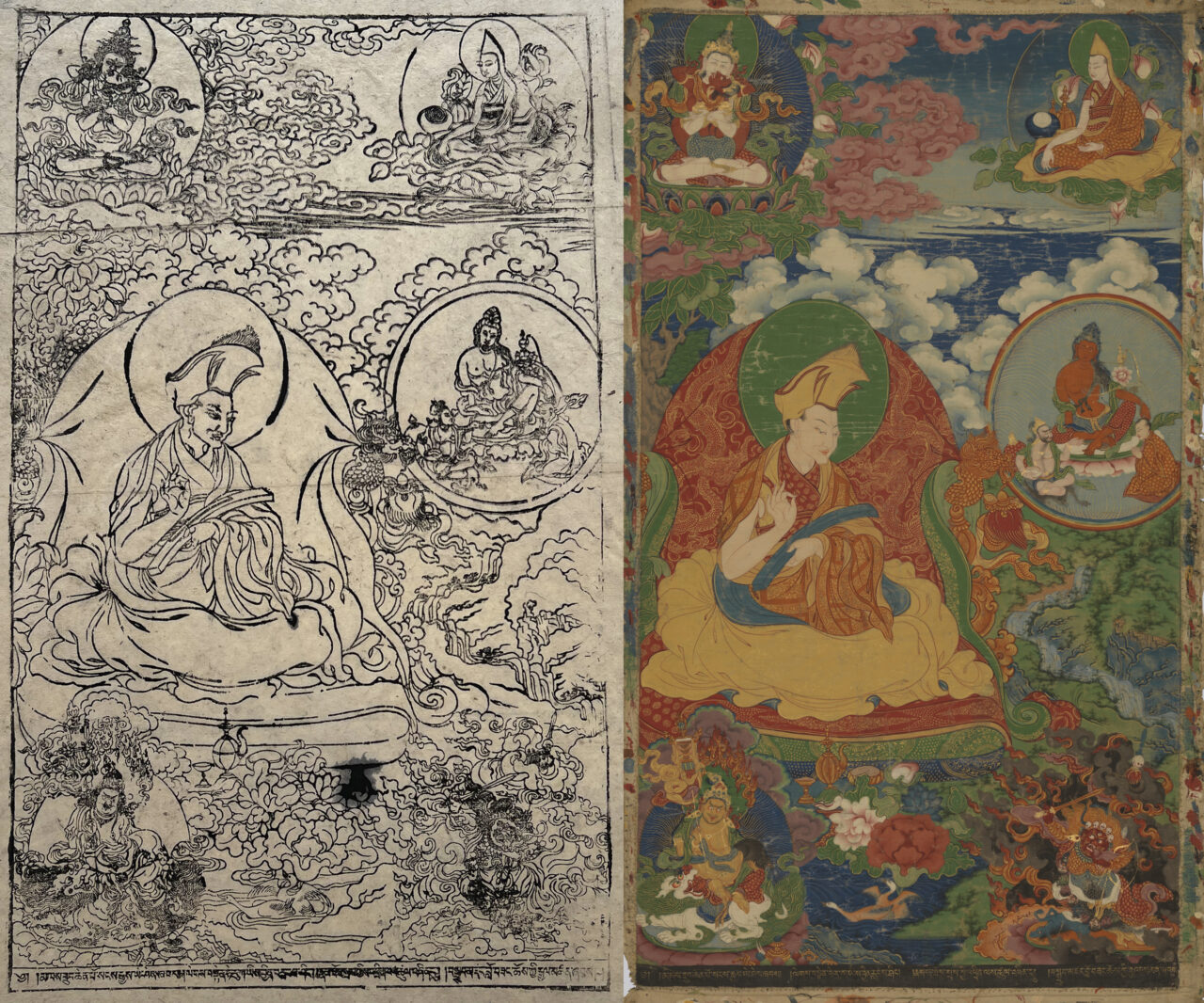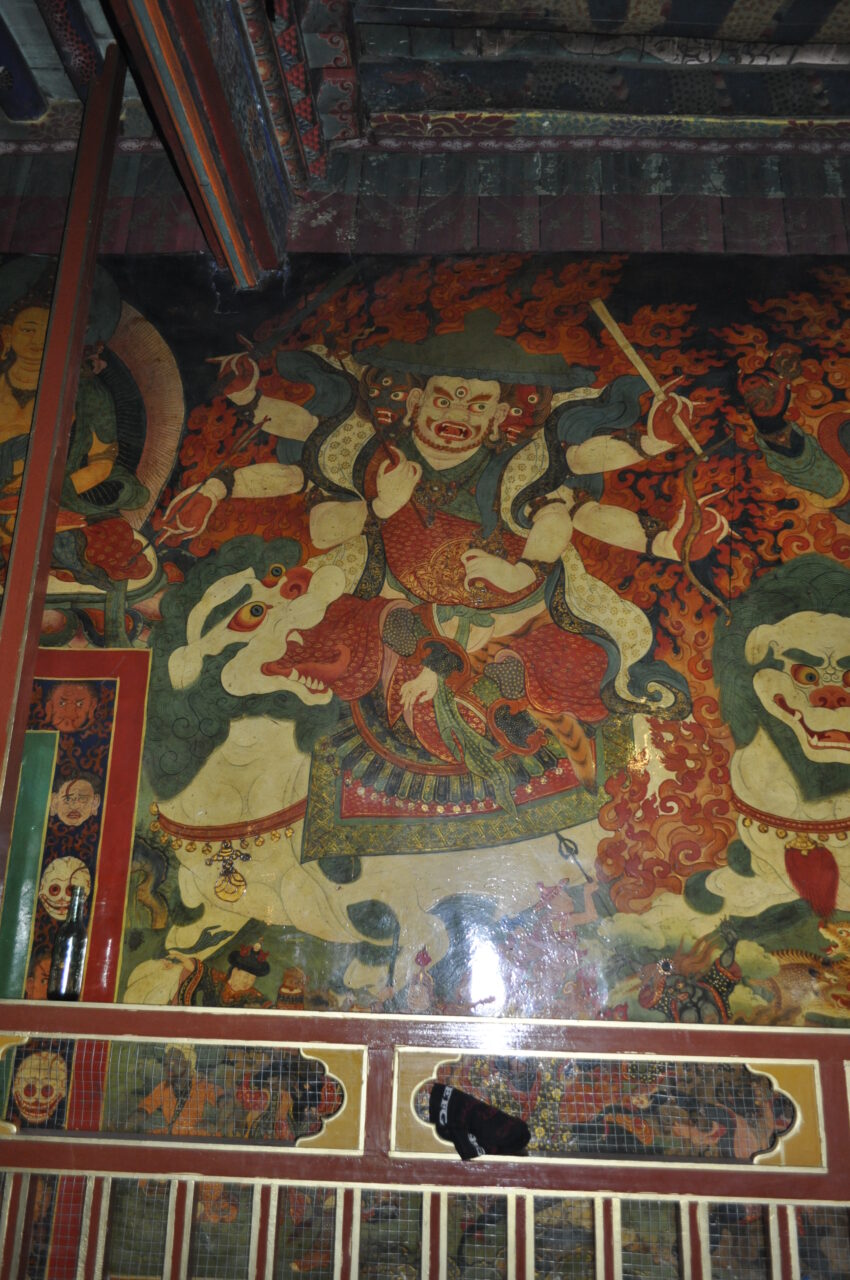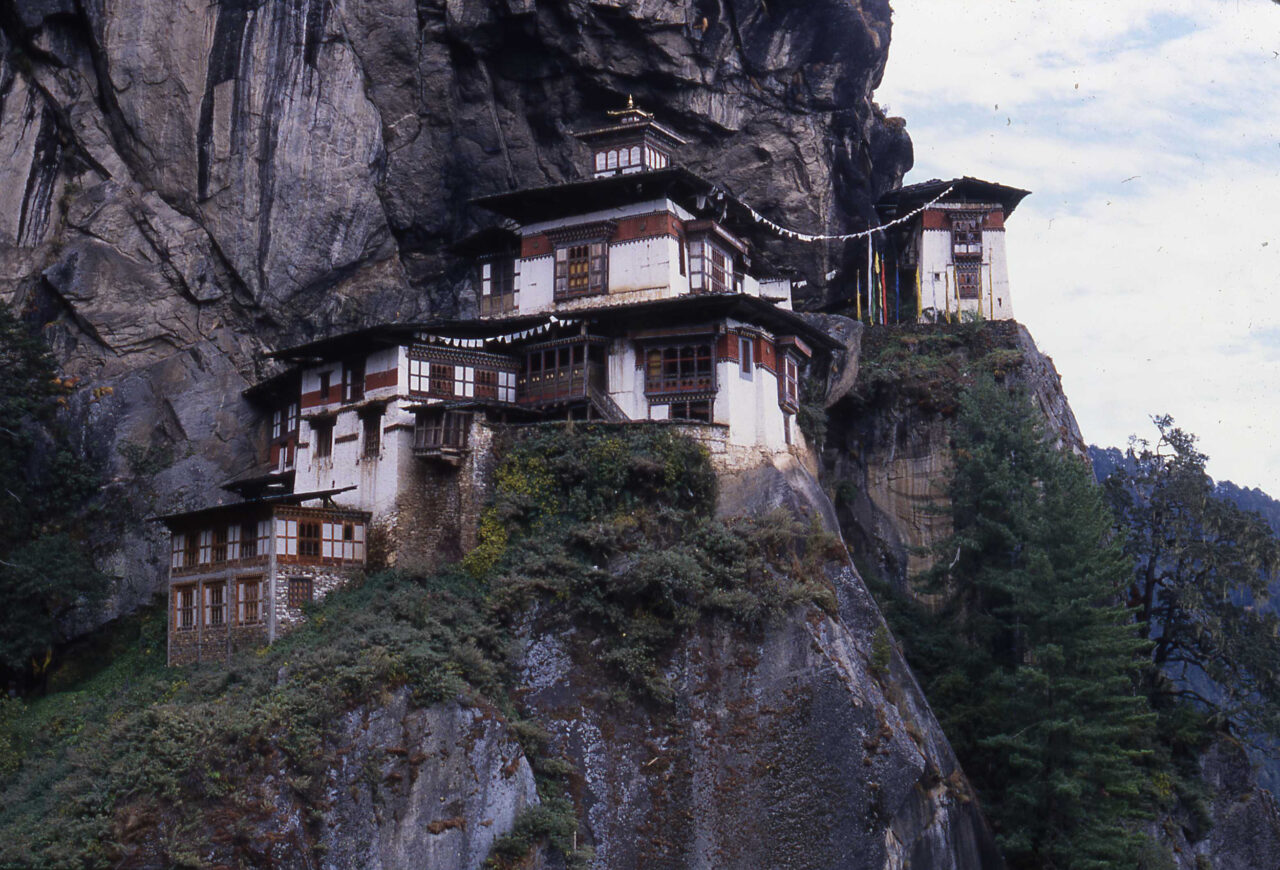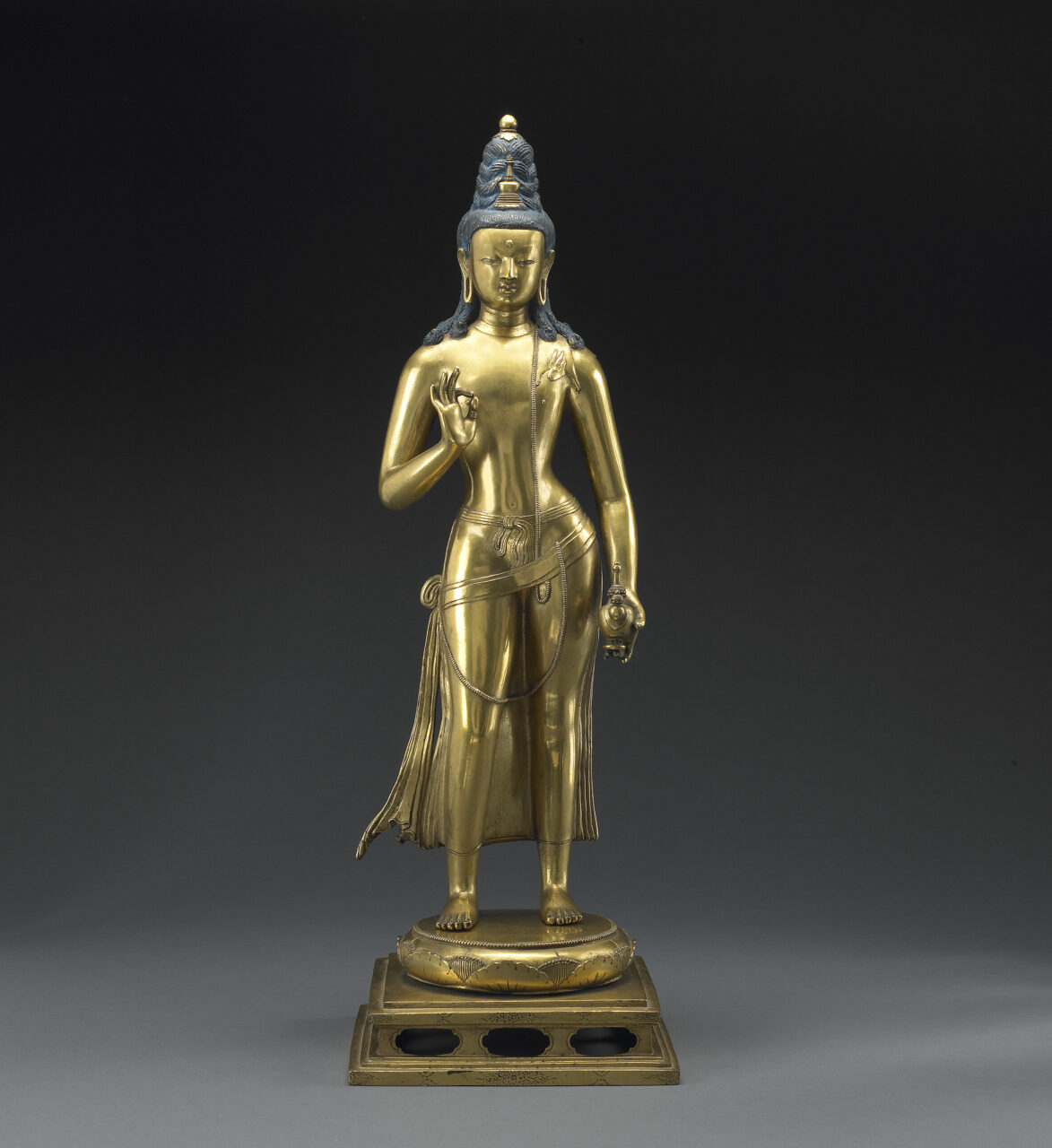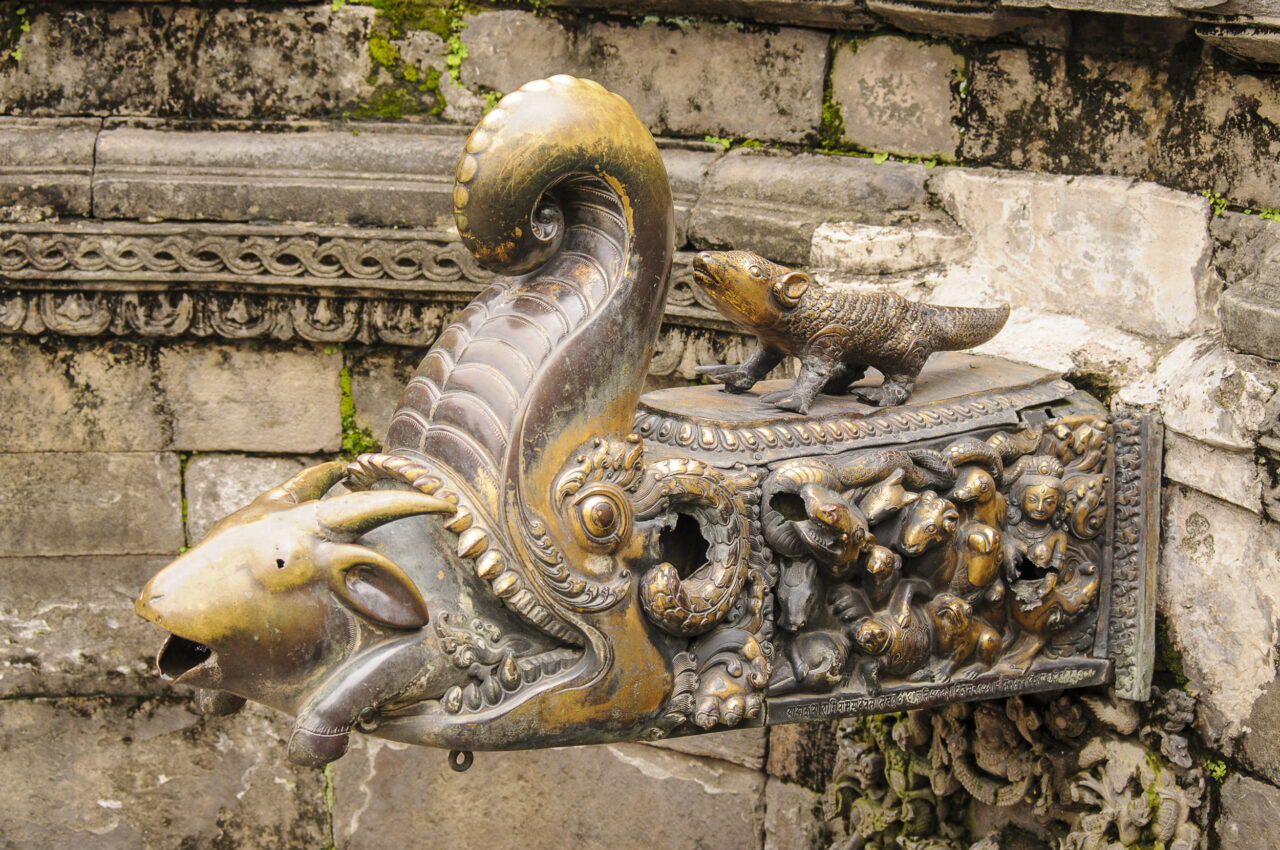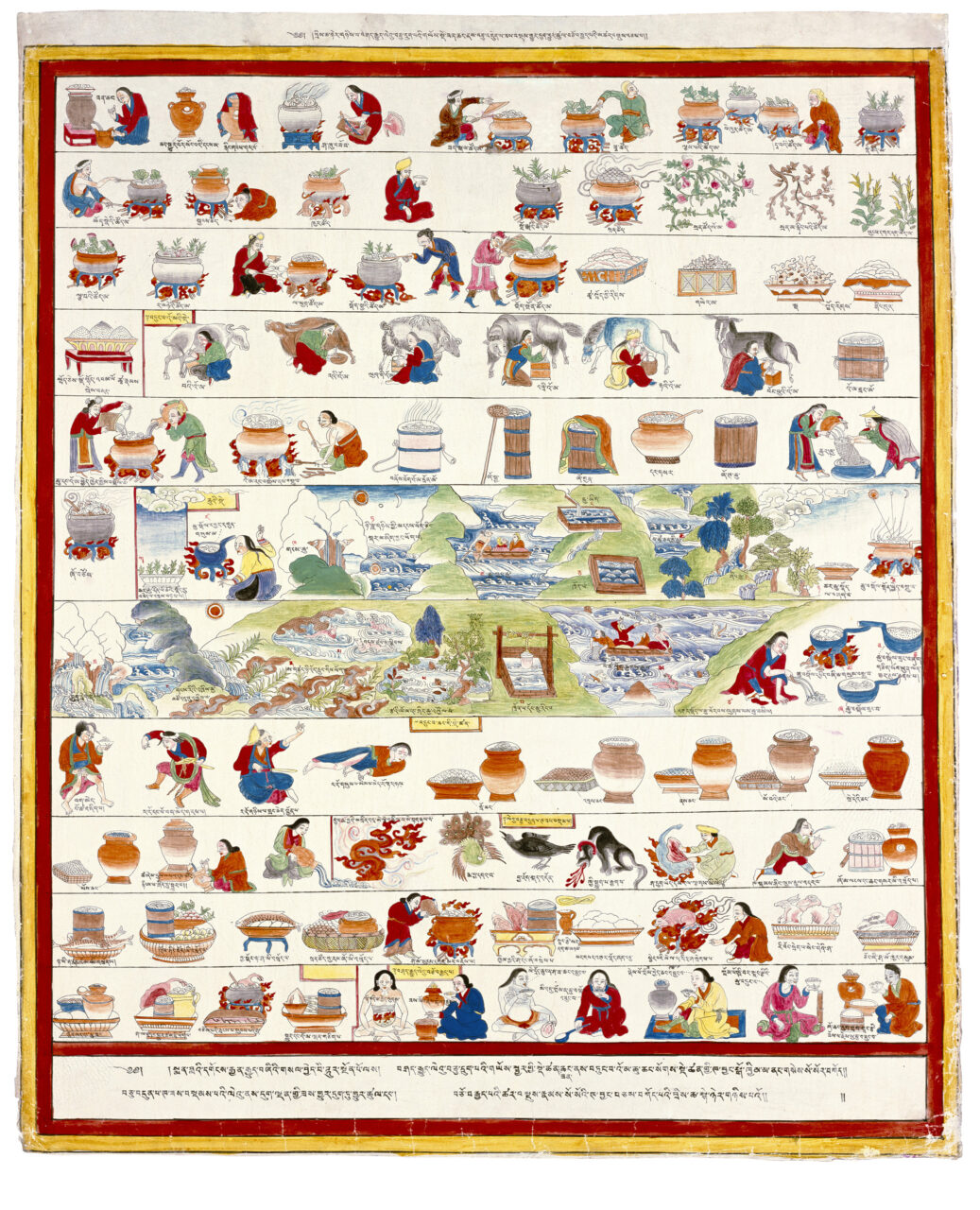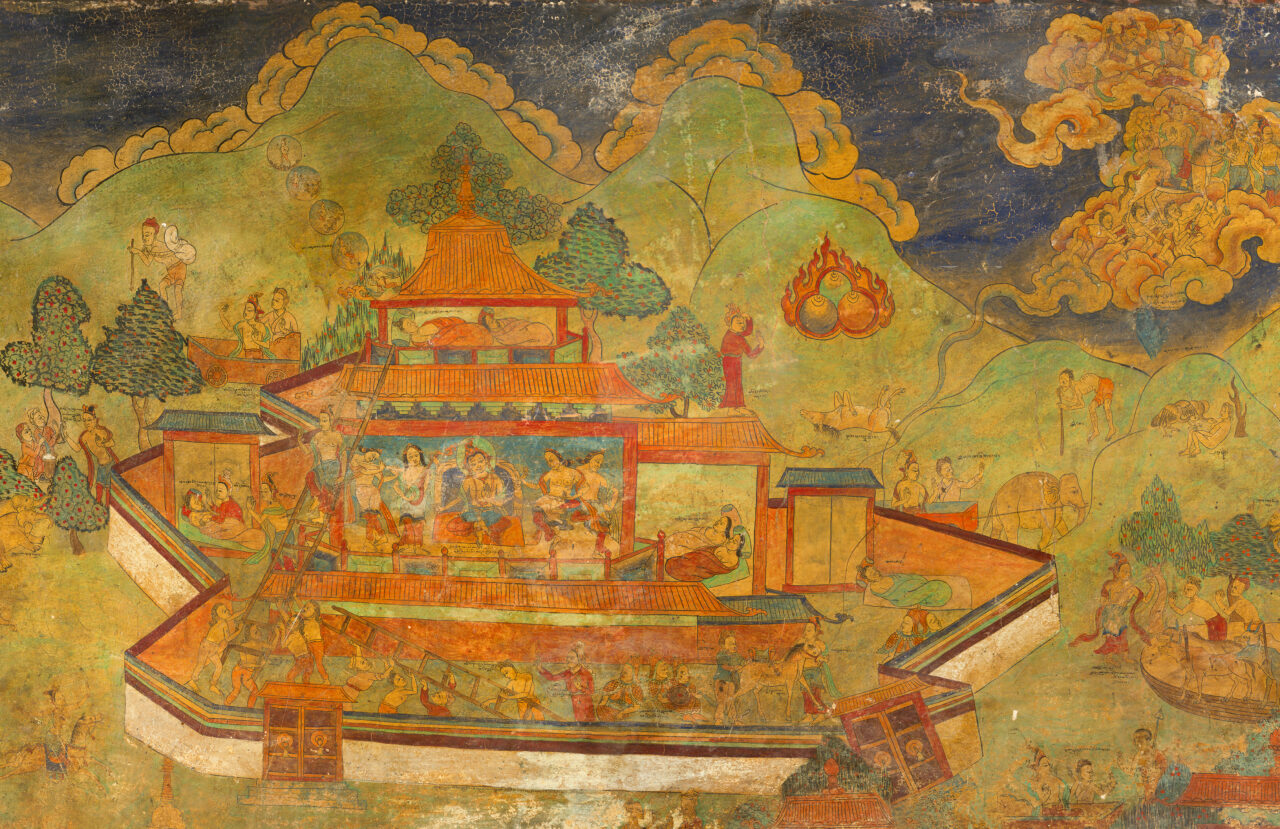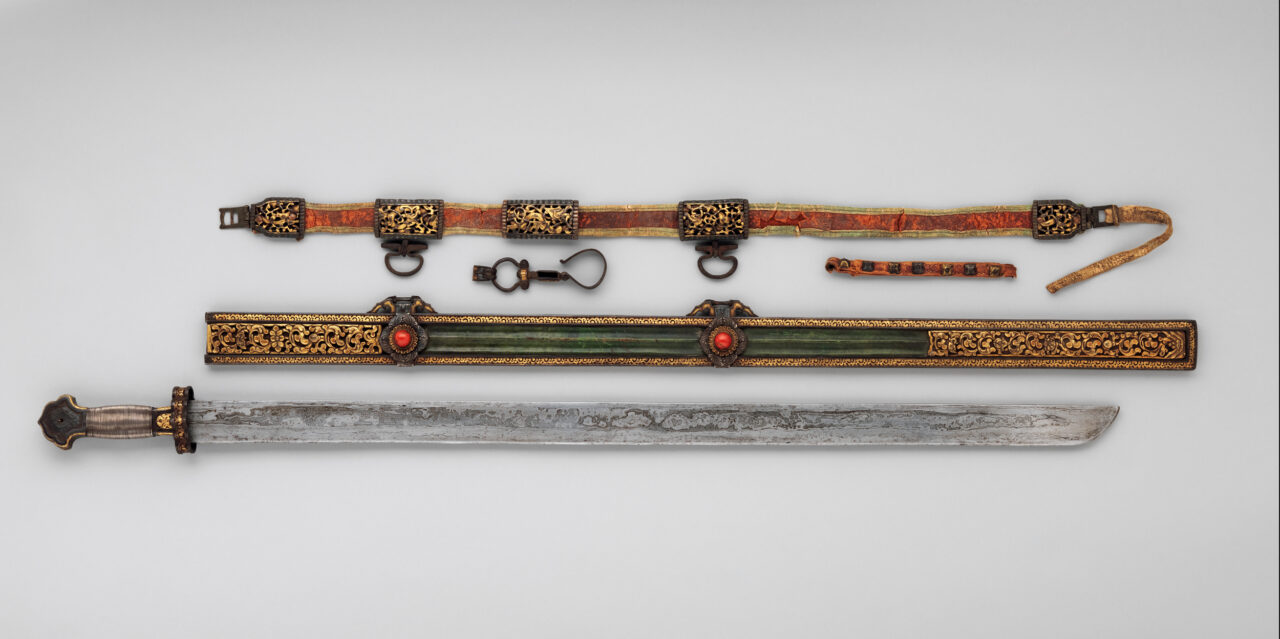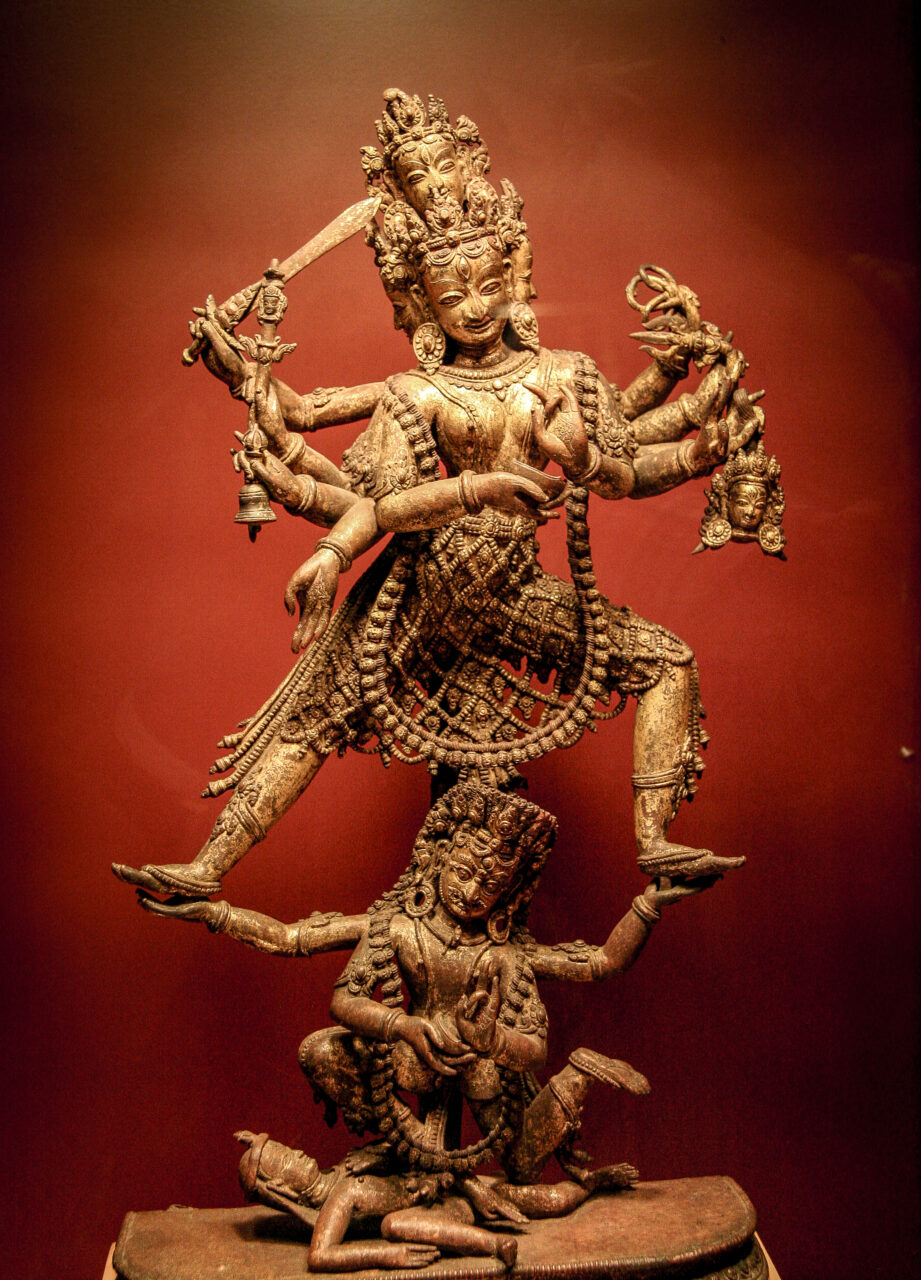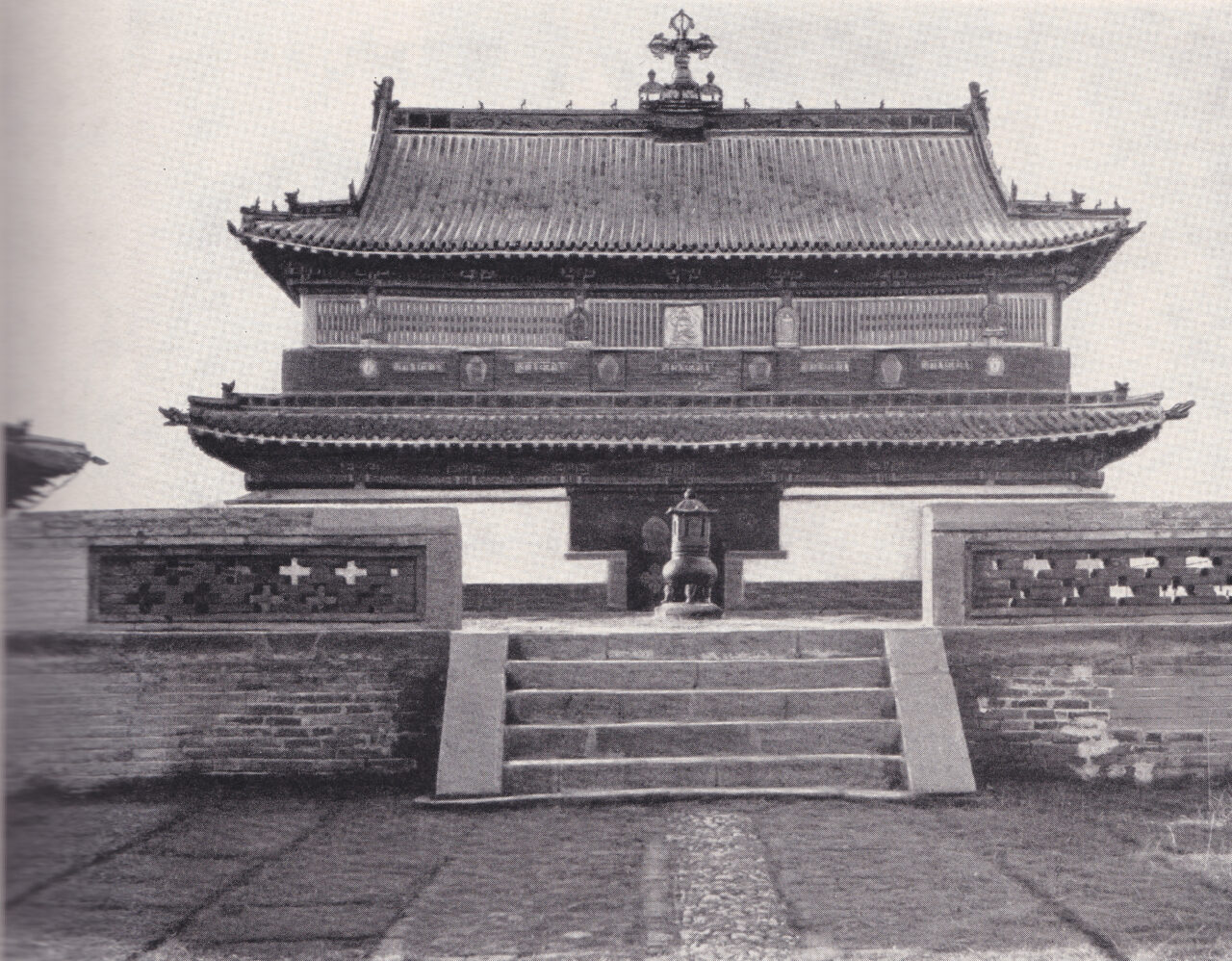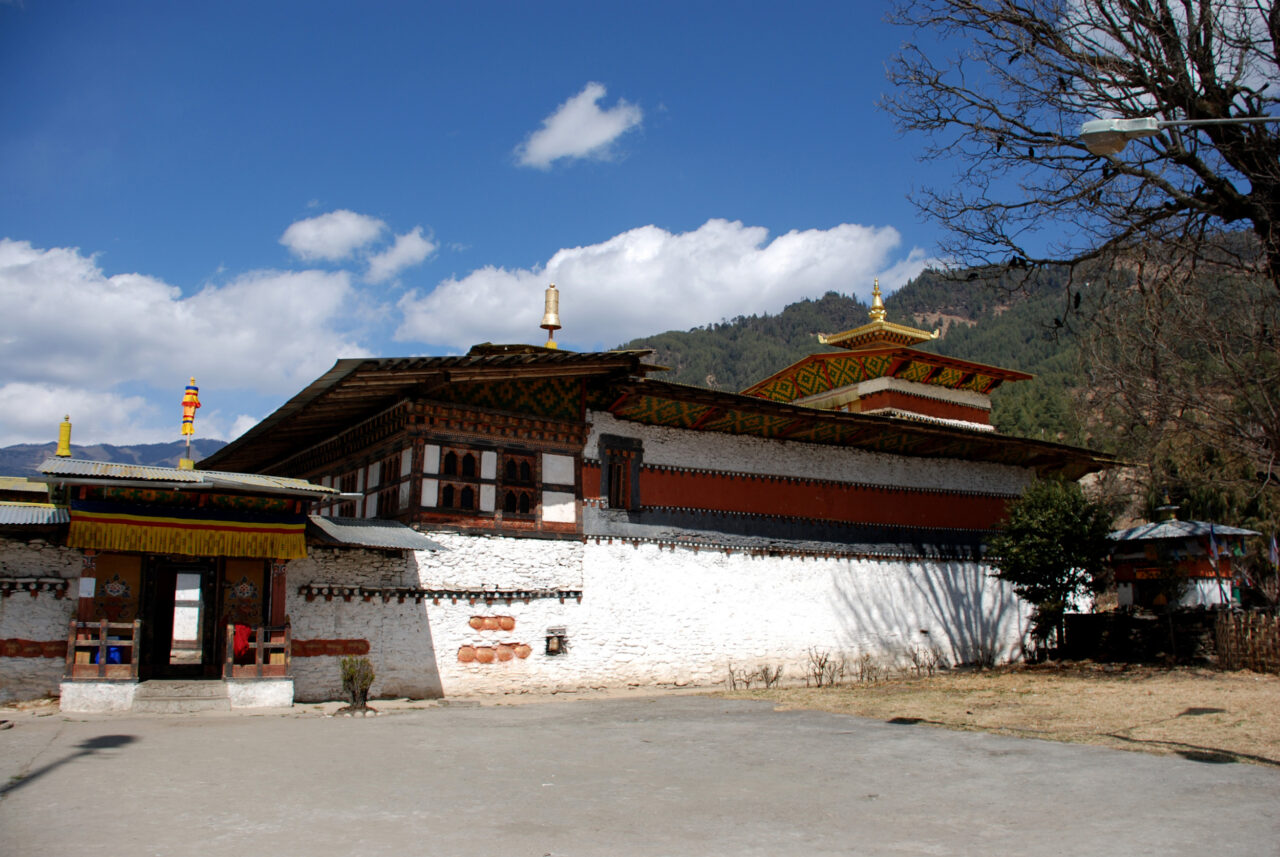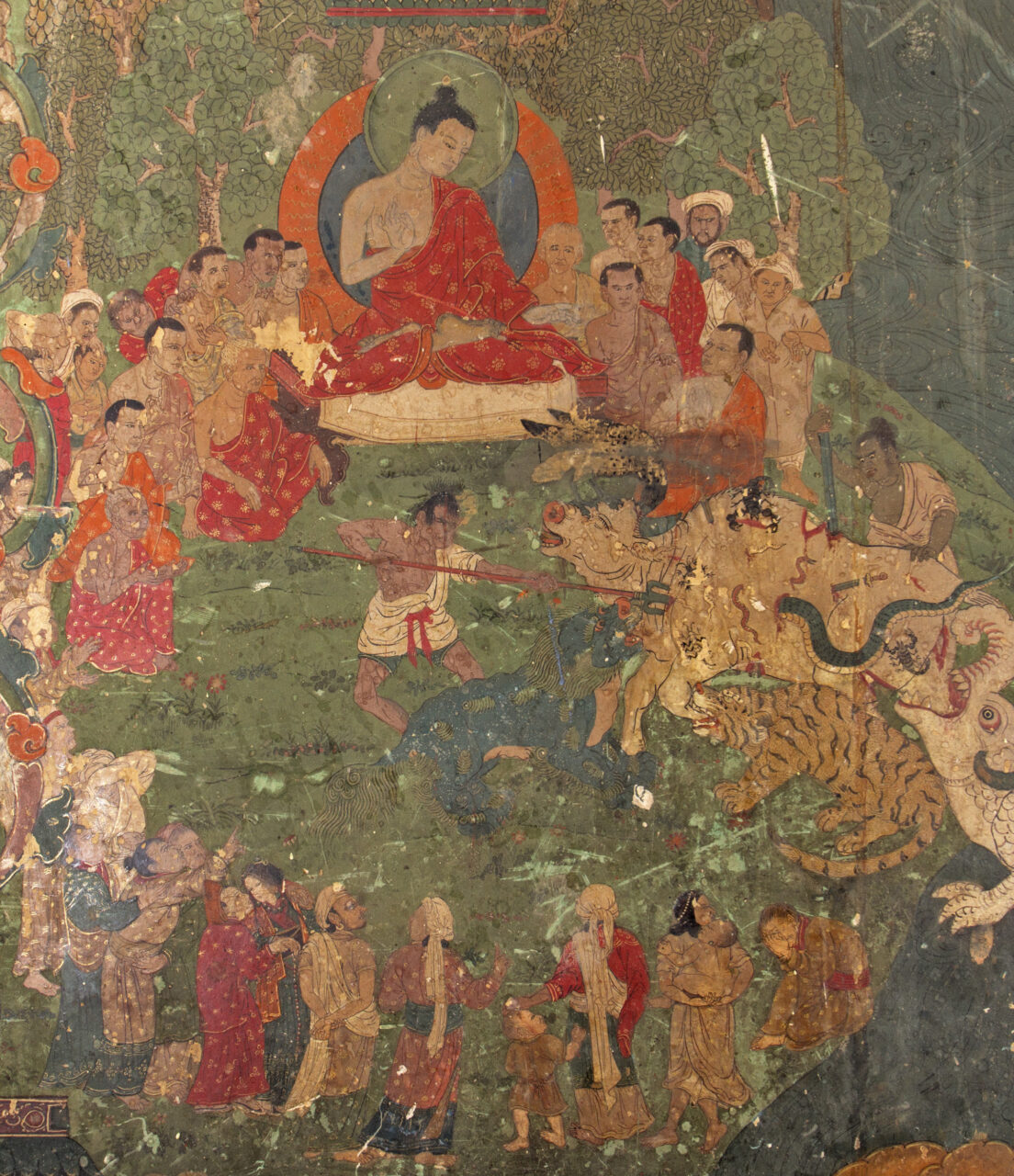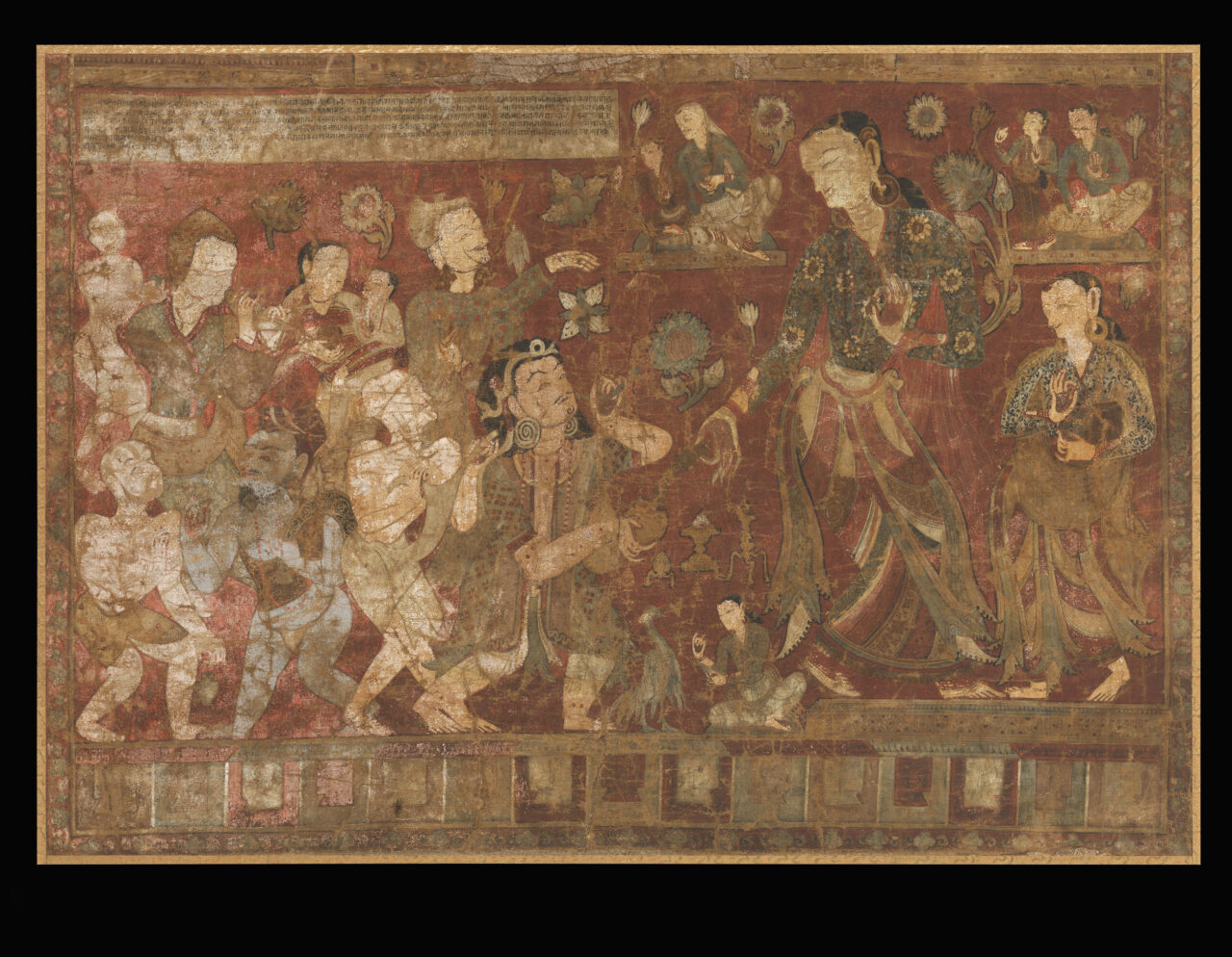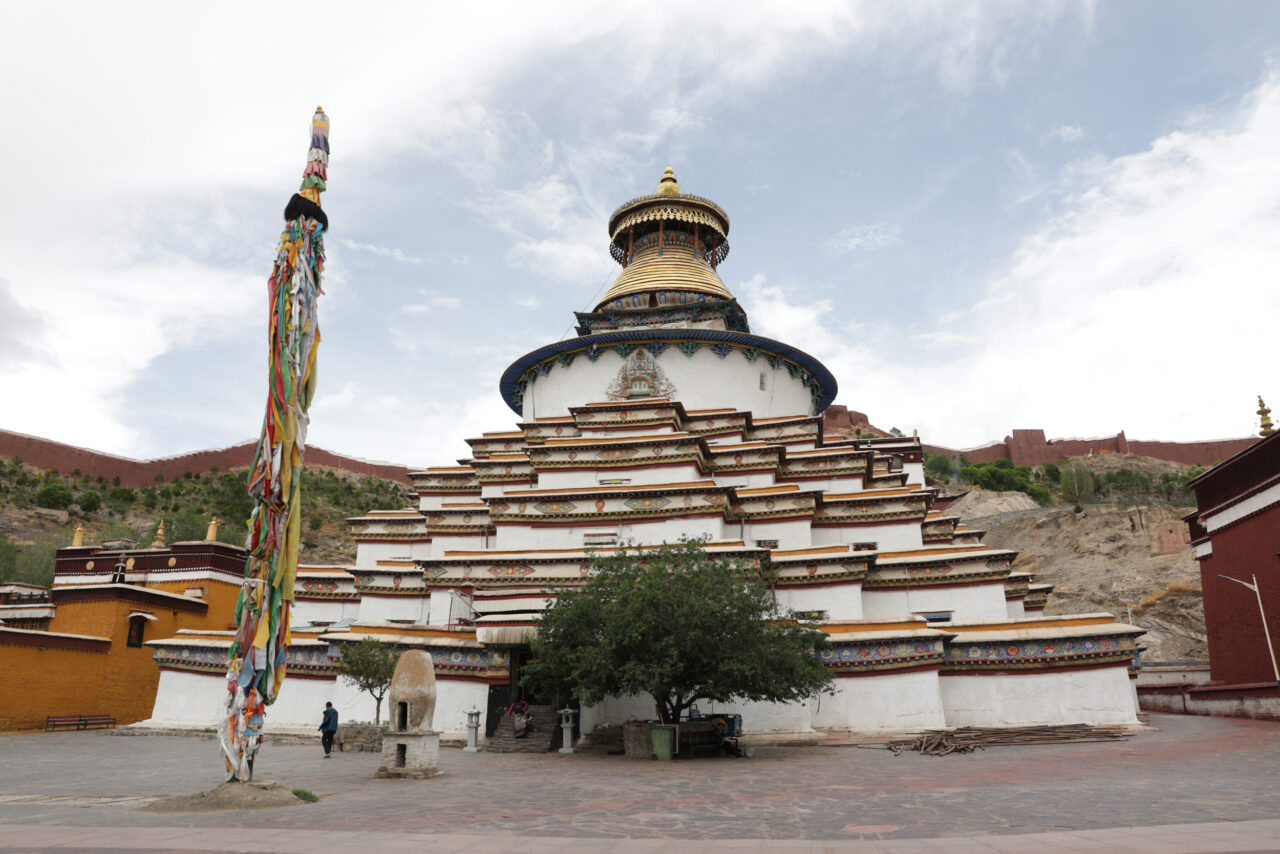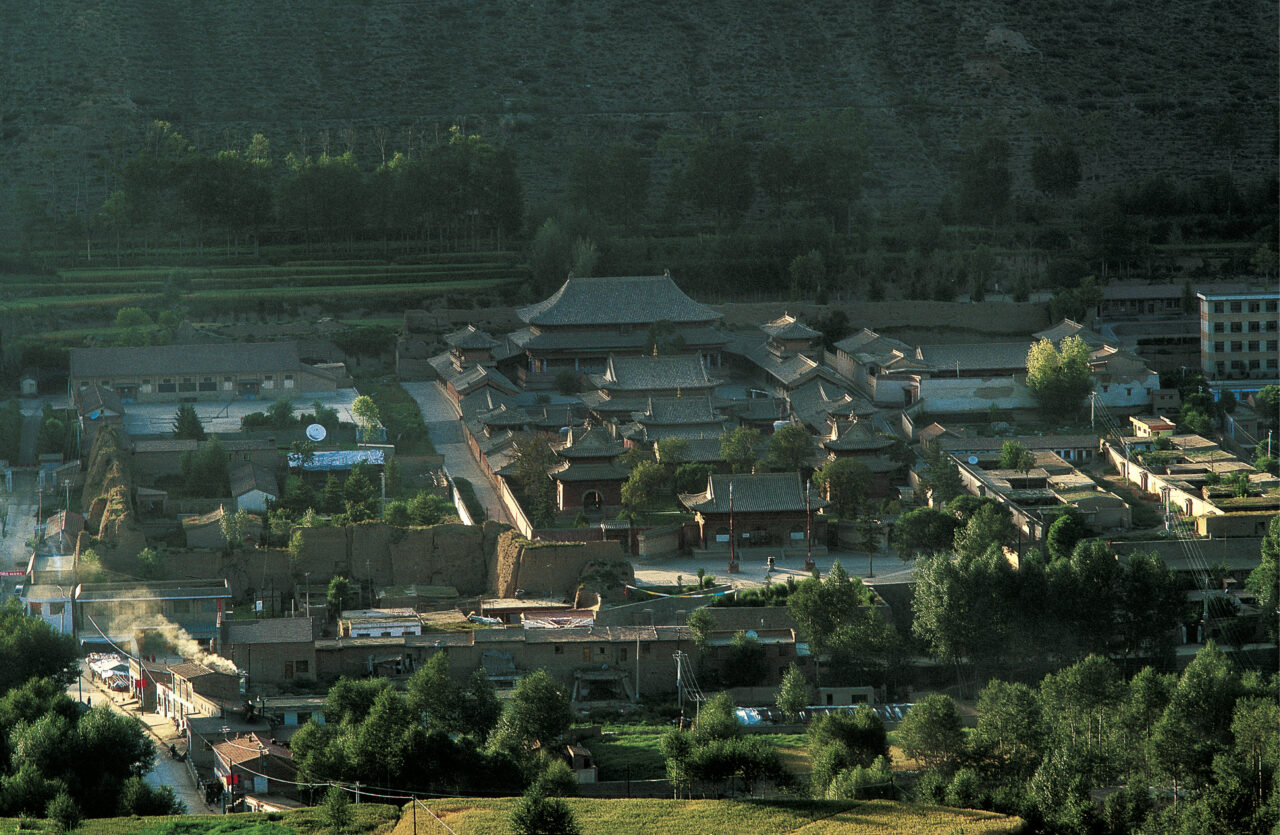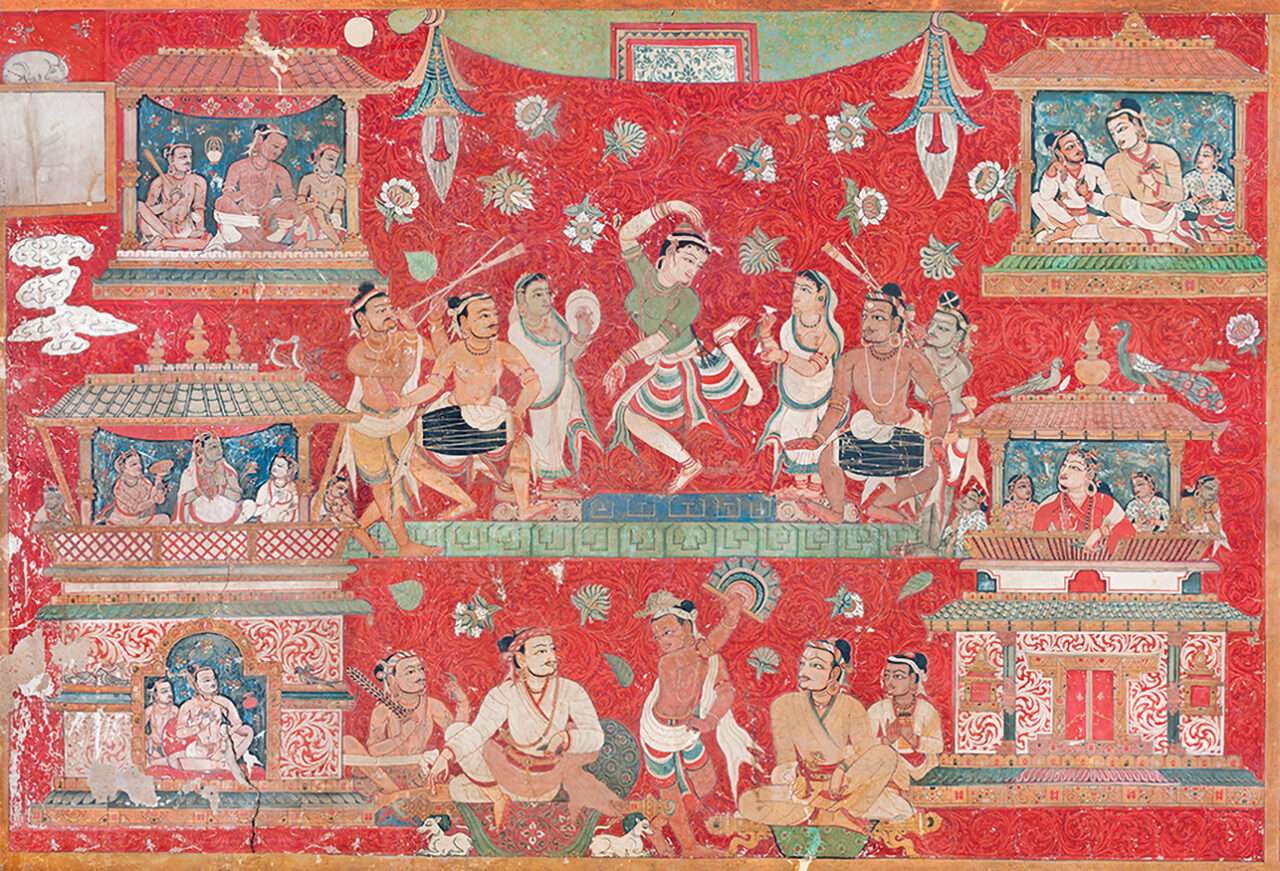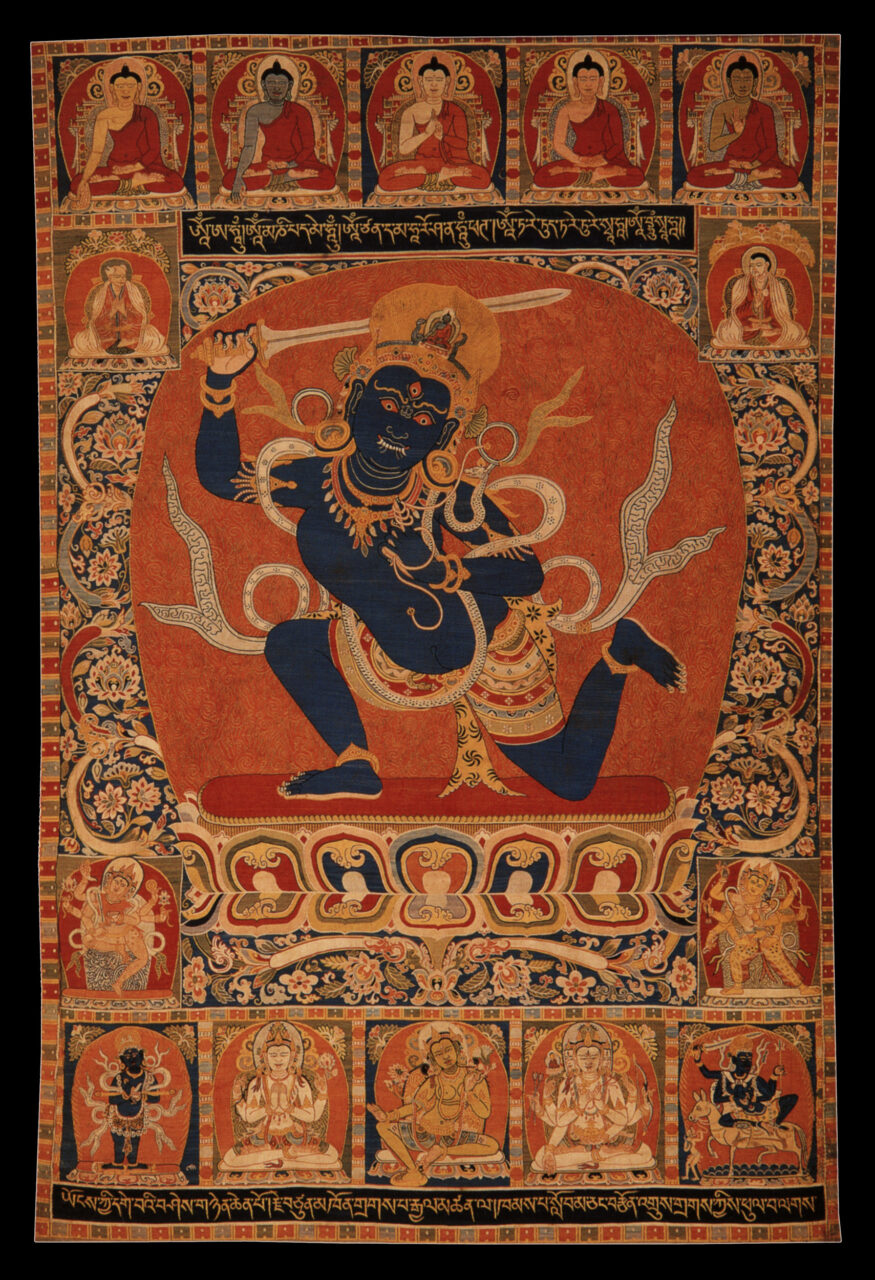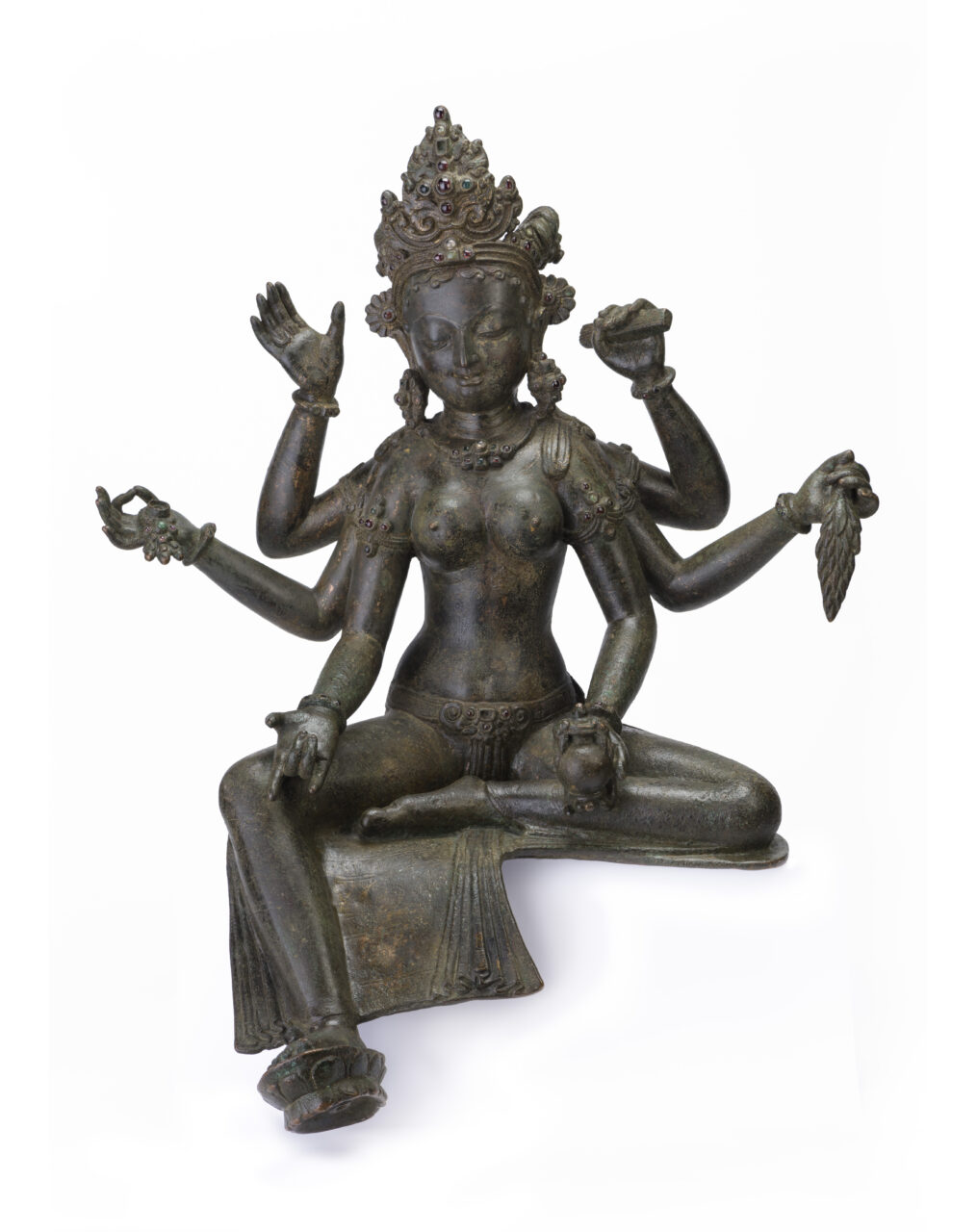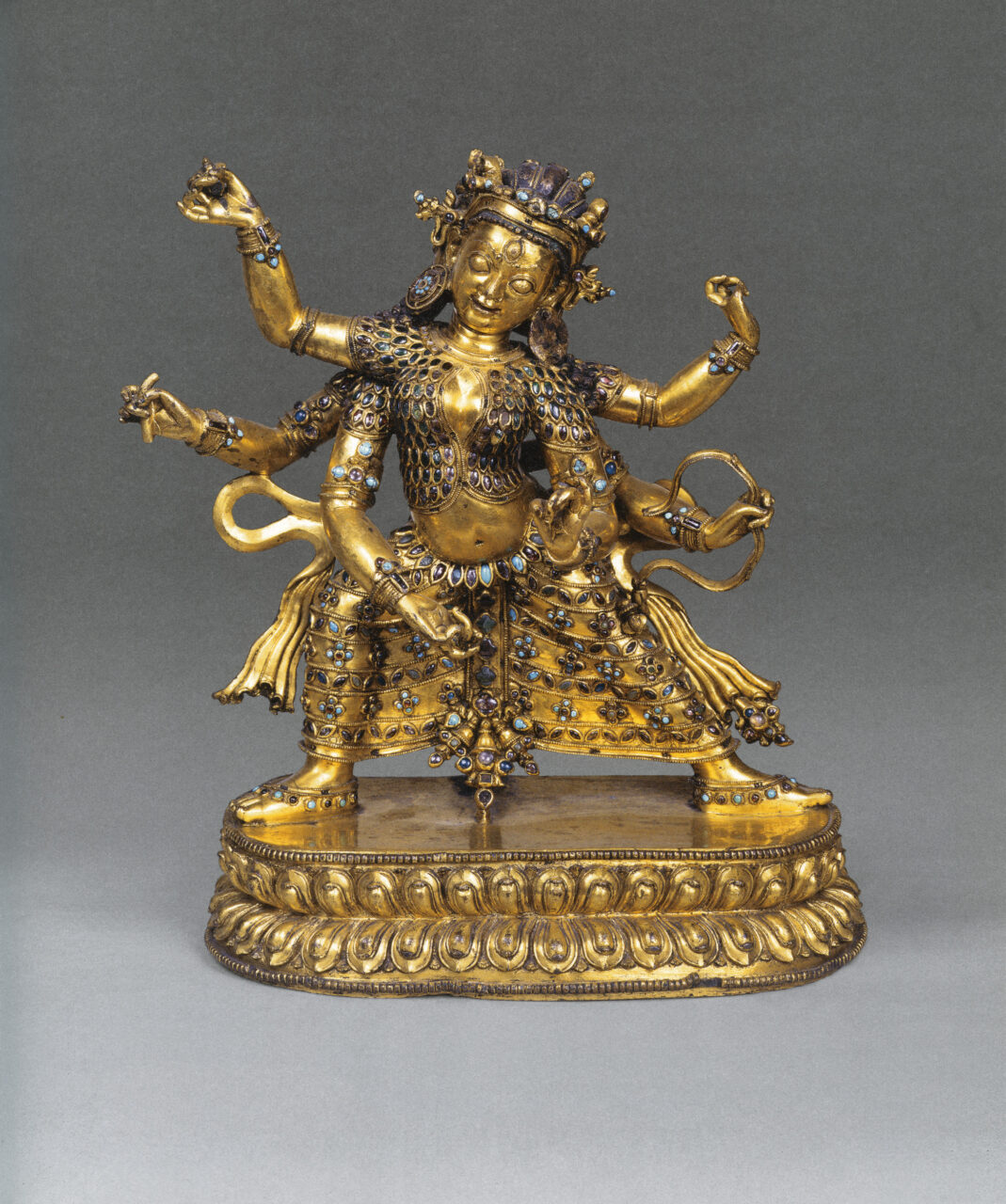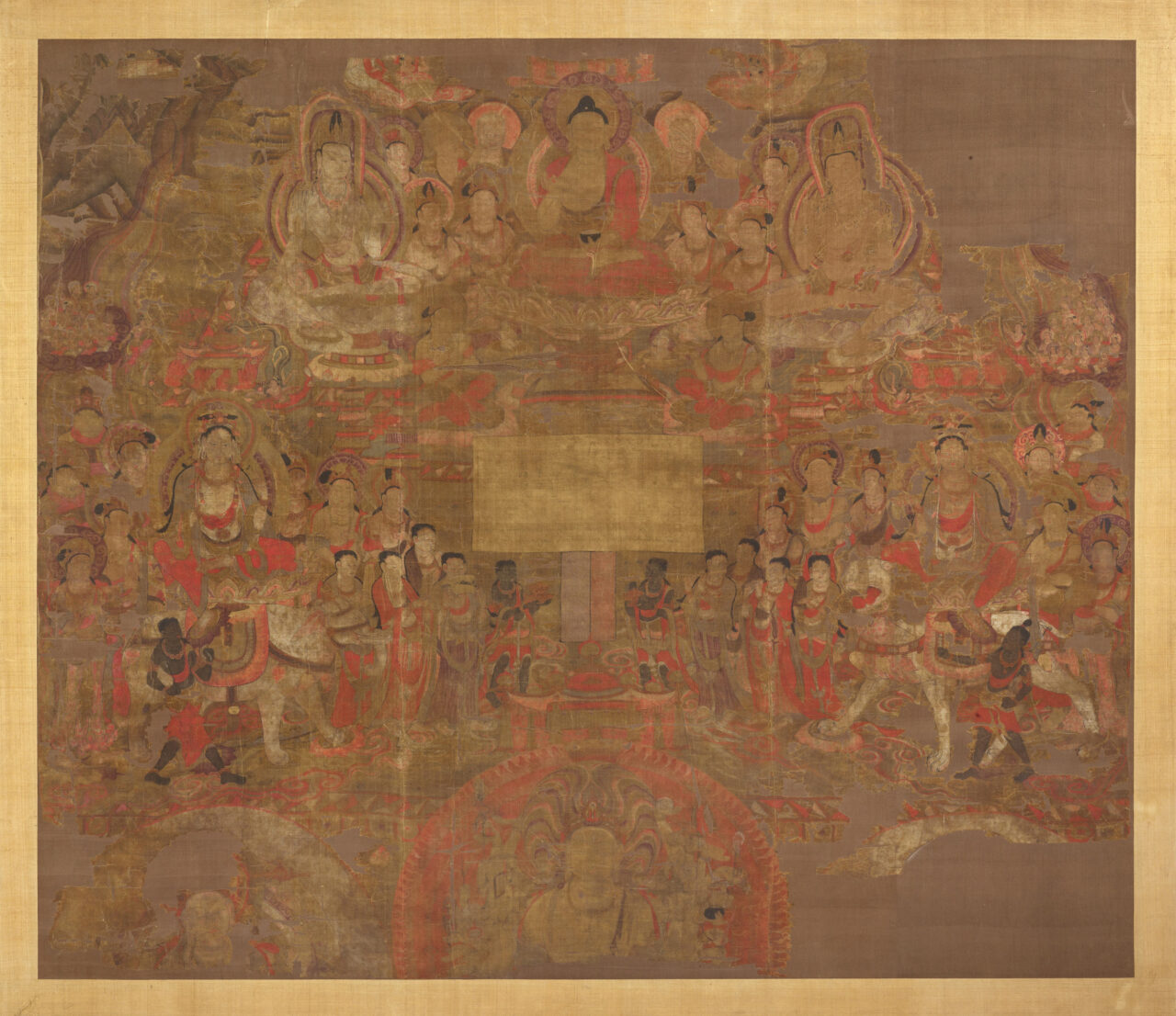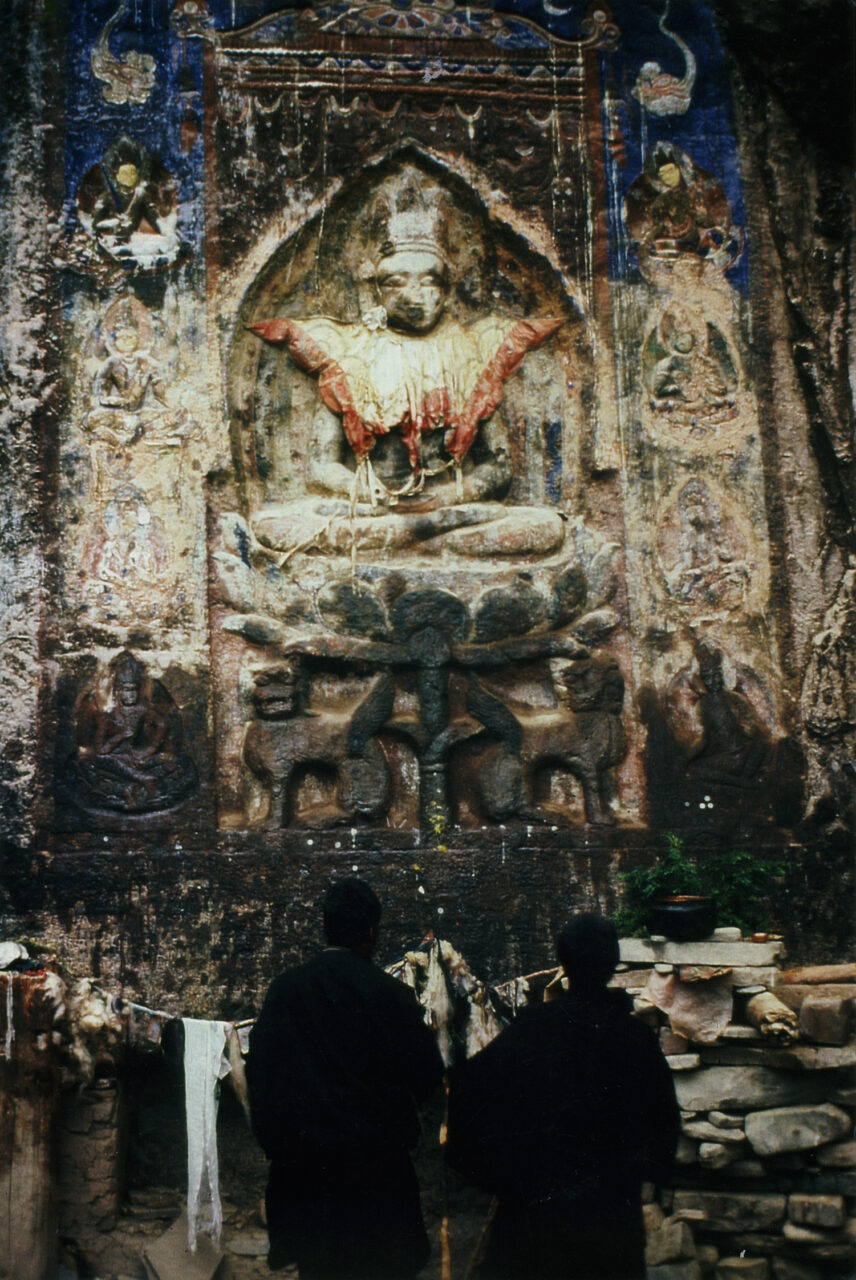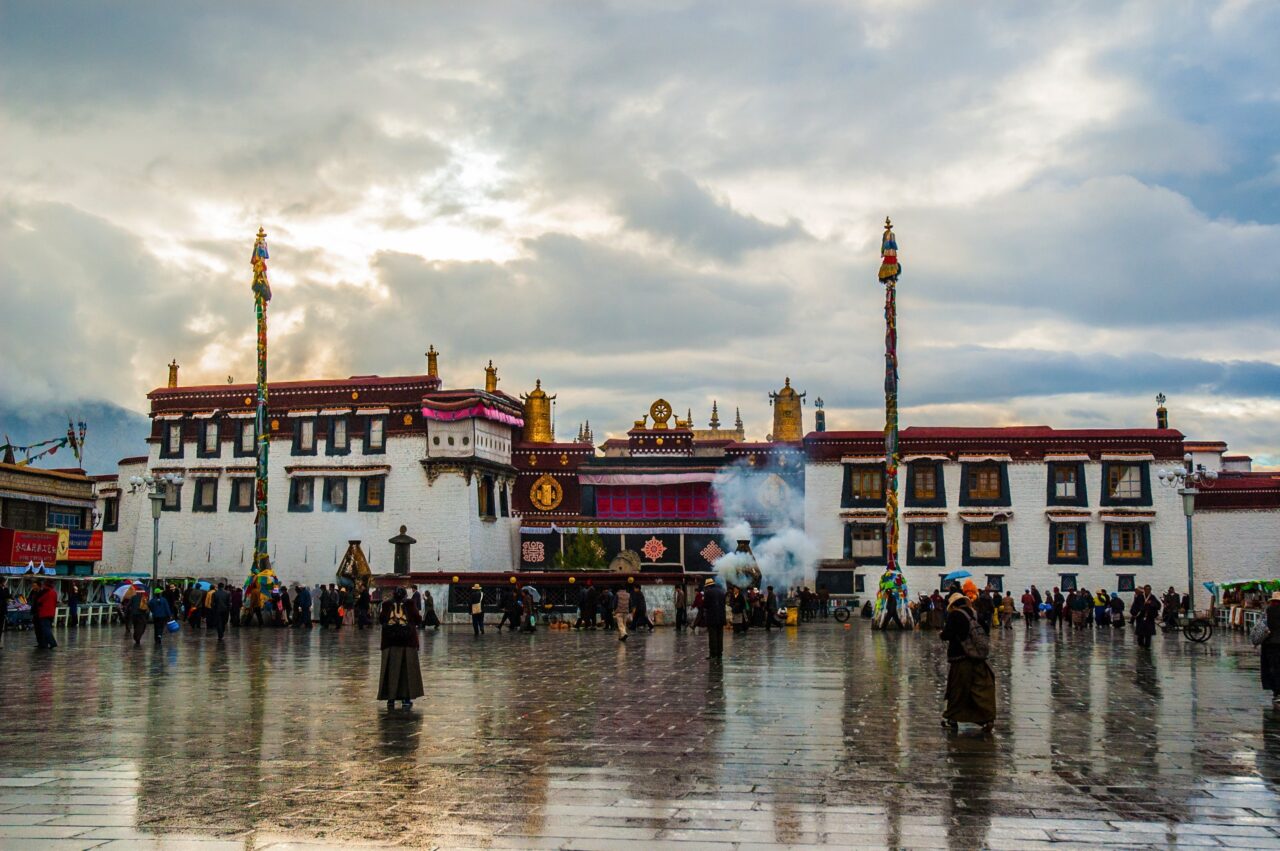Buddhism first appeared in China in the first century CE, and by the fourth century had become one of the major religions of the country, along with Daoism and Confucianism. Essentially all Chinese Buddhism is Mahayana; Vajrayana teachings flourished for a brief period in the eighth century, but suffered repression and mostly disappeared as an organized school of practice, except in the southwest. Chan (Zen) Buddhism is a unique Chinese tradition, known for its teachings on sudden enlightenment, some of which parallel teachings of Dzogchen (the Great Perfection) practiced in Tibetan regions. Other Chinese Buddhists follow Pure Land teachings, hoping to be reborn in the western paradise of Amitabha.
The Karmapas are a lineage of tulkus, or reincarnated lamas, and heads of the Karma Kagyu tradition of Tibetan Buddhism, recognizable by their distinctive black hats. They began tracing their reincarnations starting in the thirteenth century when Rangjung Dorje (1284–1339) recognized himself the reincarnation of two predecessors, to whom he gave the titles Second and First Karmapas. The Karmapas are thus the historically oldest tulku lineage in Tibetan Buddhism. The Karmapas were a major force in medieval Tibet, but their economic and political power was broken in the mid-seventeenth century when the Geluk-tradition Dalai Lamas and their Mongol allies defeated the king of Tsang and drove many Karma Kagyupas into exile. Nevertheless, the Karmapa lineage survived, and remains influential today. The Karmapas are believed to be emanations of the bodhisattva Avalokiteshvara.
A practice of hiring and commissioning artists to create works of art. In religious context patrons were often rulers, religious leaders, as well as ordinary people. (see also donor)
Historically, Tibetan Buddhism refers to those Buddhist traditions that use Tibetan as a ritual language. It is practiced in Tibet, Mongolia, Bhutan, Ladakh, and among certain groups in Nepal, China, and Russia and has an international following. Buddhism was introduced to Tibet in two waves, first when rulers of the Tibetan Empire (seventh to ninth centuries CE), embraced the Buddhist faith as their state religion, and during the second diffusion (late tenth through thirteenth centuries), when monks and translators brought in Buddhist culture from India, Nepal, and Central Asia. As a result, the entire Buddhist canon was translated into Tibetan, and monasteries grew to become centers of intellectual, cultural, and political power. From the end of the twelfth century, Tibetans were exporting their own Buddhist traditions abroad. Tibetan Buddhism integrates Mahayana teachings with the esoteric practices of Vajrayana, and includes those developed in Tibet, such as Dzogchen, as well as indigenous Tibetan religious practices focused on local gods. Historically major traditions of Tibetan Buddhism are Nyingma, Kagyu, Sakya, and Geluk.
The Ming dynasty was a Chinese state that existed from 1368 to 1644 CE. The Ming founder, Zhu Yuanzhang (1328–1398), led an army that defeated the Yuan dynasty of the Mongol Empire and restored ethnic Chinese rule in China. Unlike the Mongols before them or the Qing dynasty after them the Ming never seriously attempted to rule the Tibetan regions, preferring instead to manage border affairs by granting titles and trading rights to friendly Tibetan monks and secular leaders. Nevertheless, several early Ming emperors had close personal relations with Tibetan lamas, and relations of trade and cultural interchange flourished between Chinese and Tibetan regions.
Daoism refers both to a philosophical tradition and to an organized religion. In ancient China, texts attributed to semi-mythical figures like Laozi (sixth–fourth century BCE) and Zhuangzi (369–286 BCE) contained mystical speculation about the “way” (Dao) that brings humans into harmony with heaven, as well as explorations of philosophical and political relativism. From the second century onward, a ritual-exorcistic tradition appeared that called itself “the teachings of the Dao” (Ch. Daojiao). Mutually influencing with Chinese Buddhism, this tradition grew into an organized religion with monasteries, a priesthood, a canon of ritual texts, and a complex pantheon of gods organized into a bureaucracy modeled after the Chinese state which govern the natural world.




